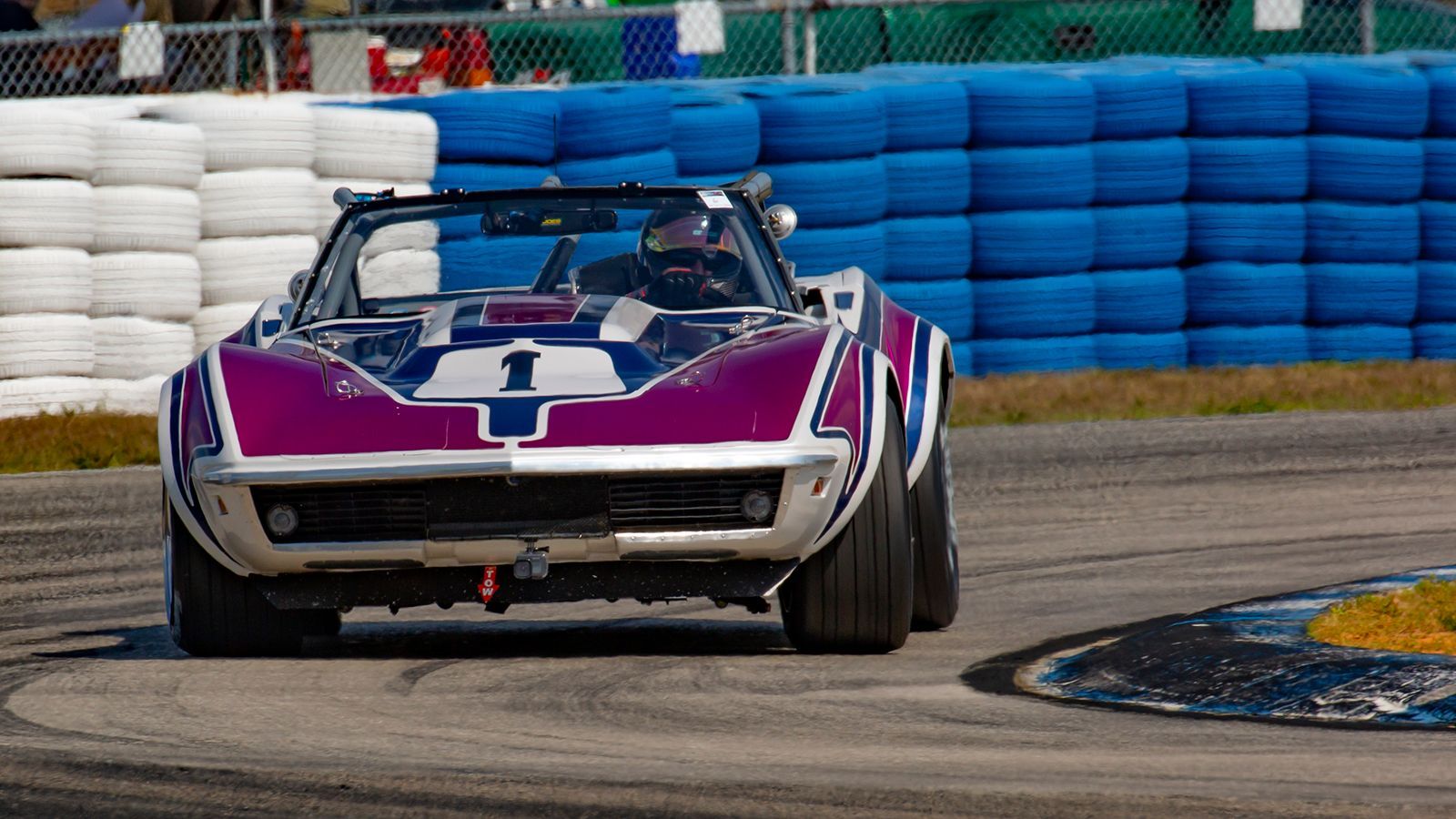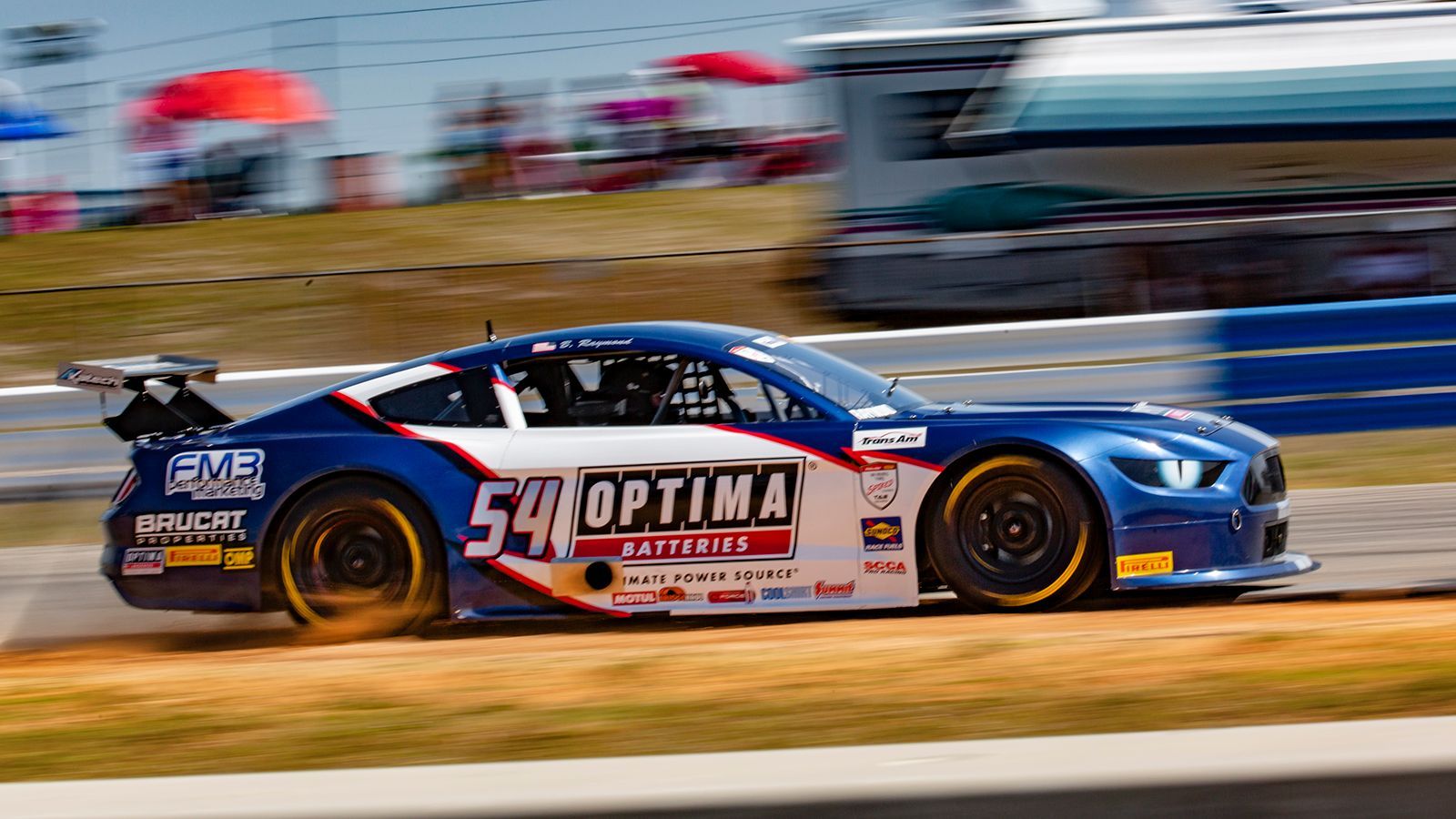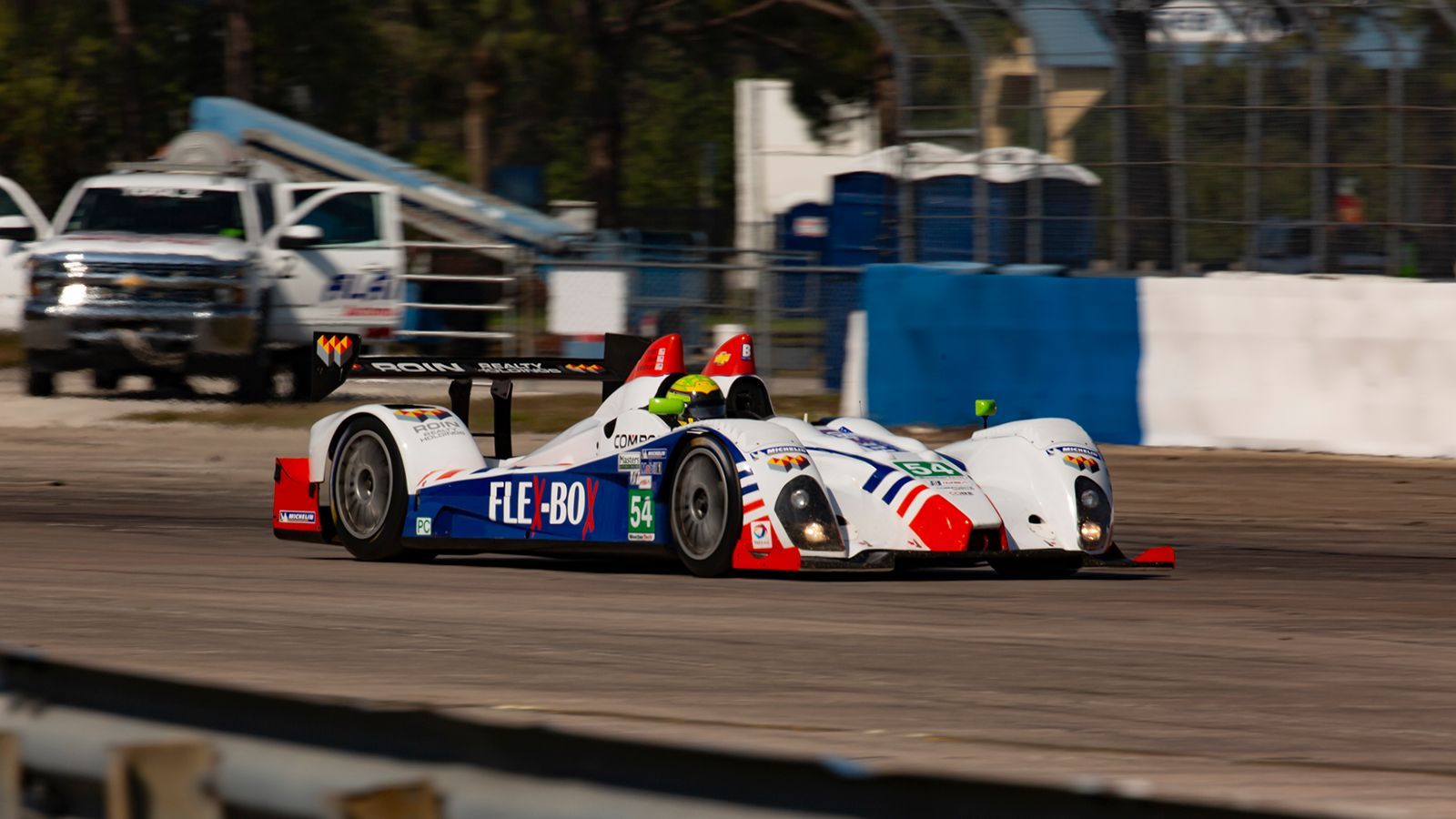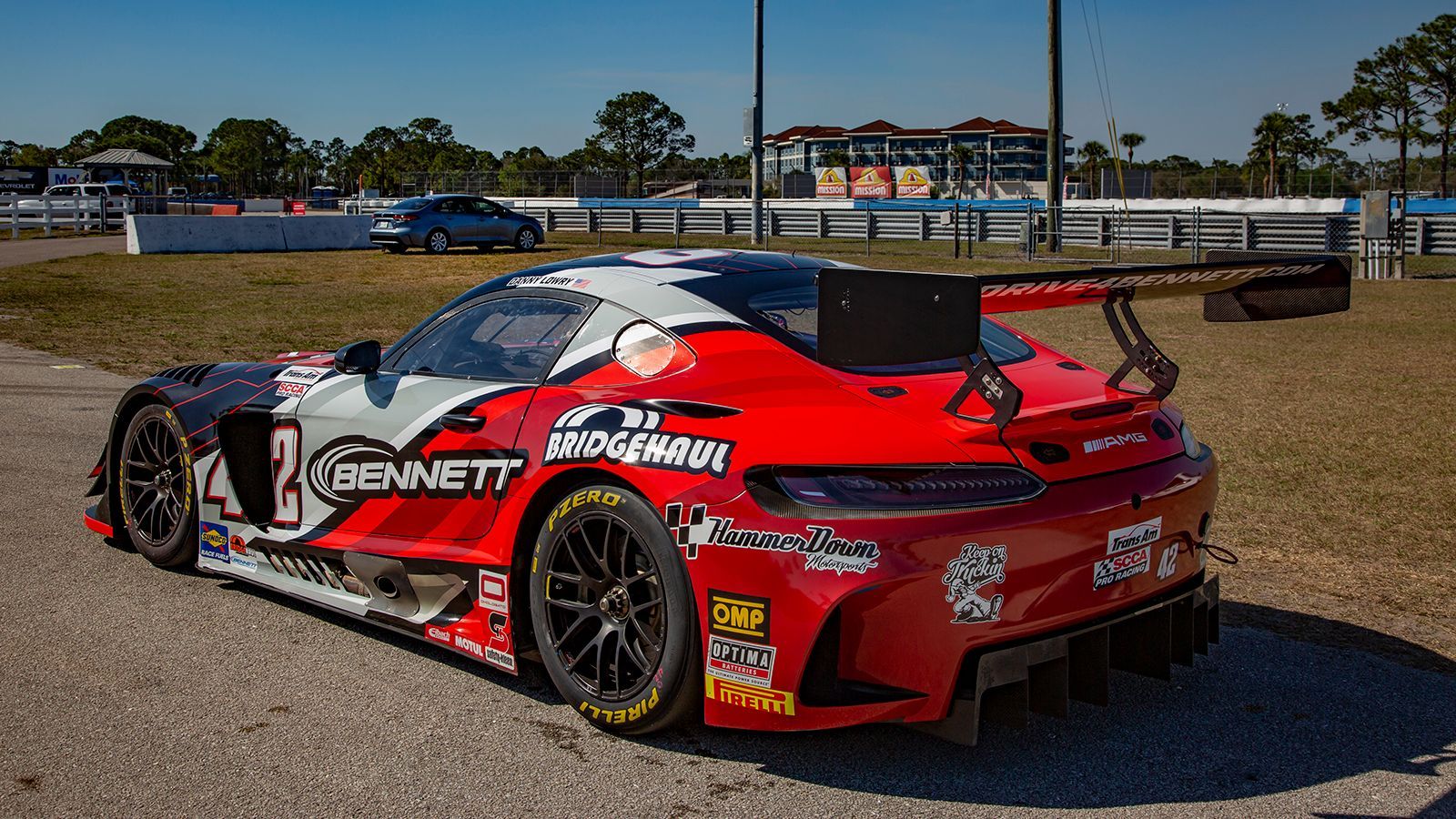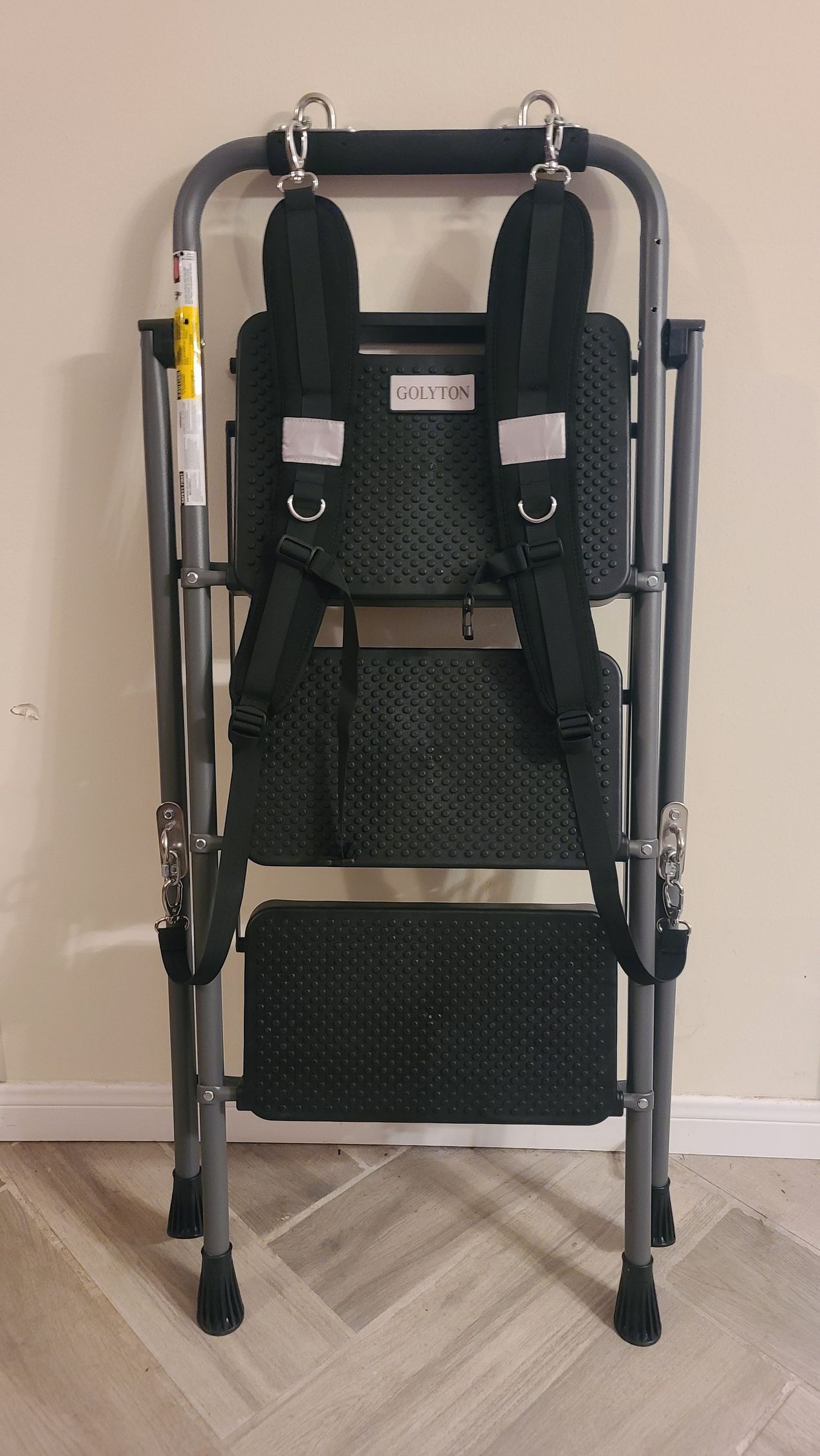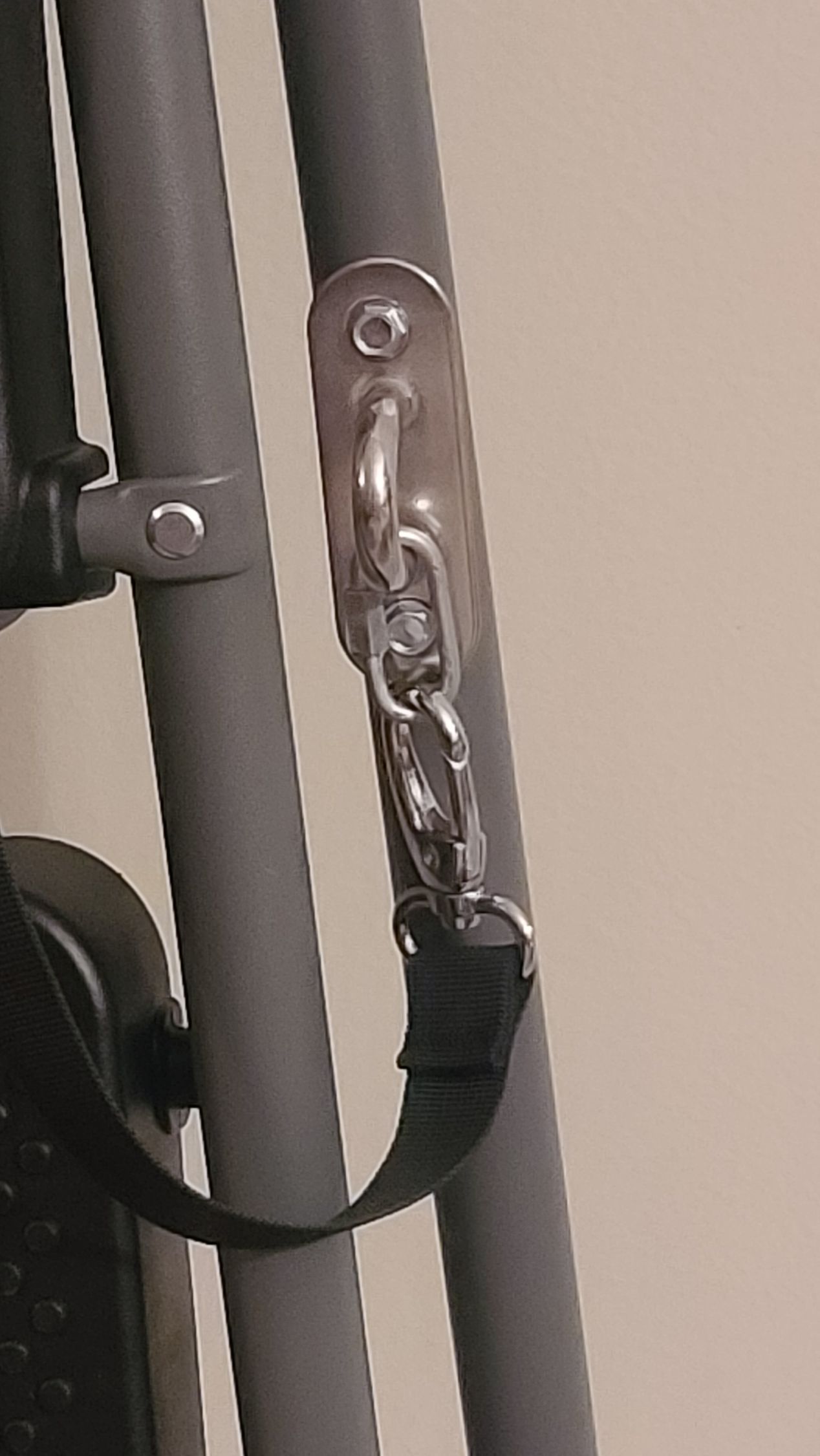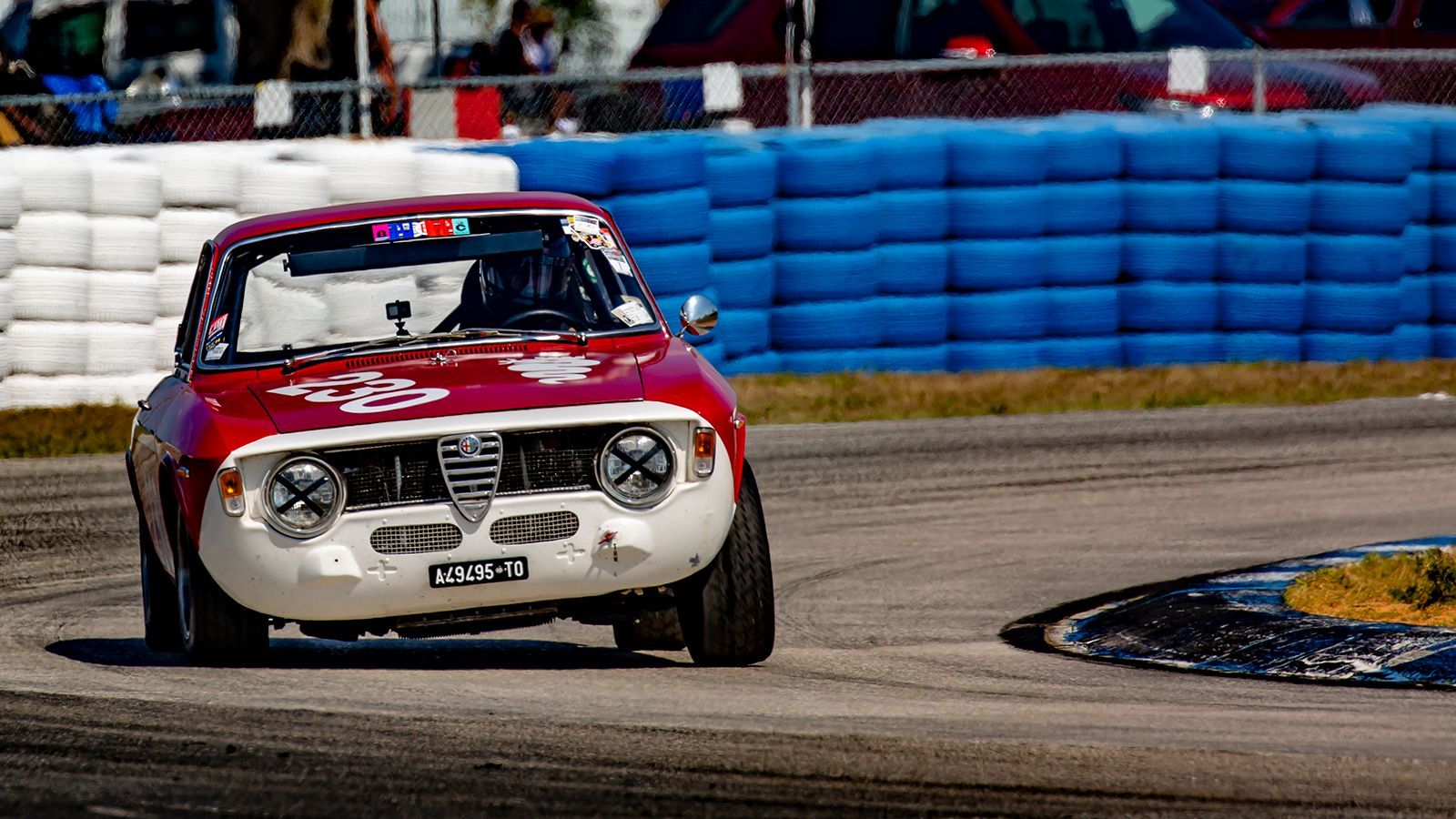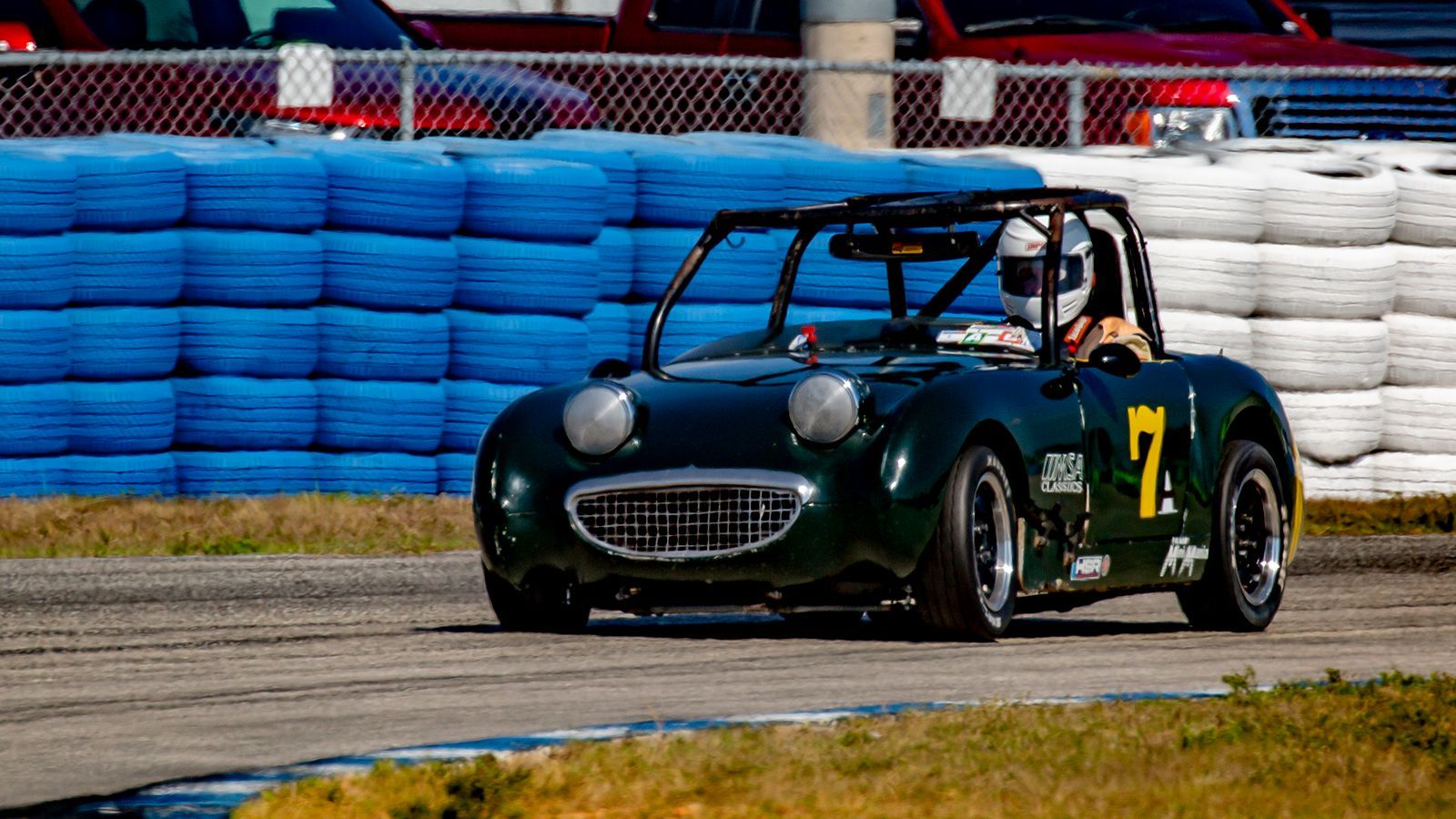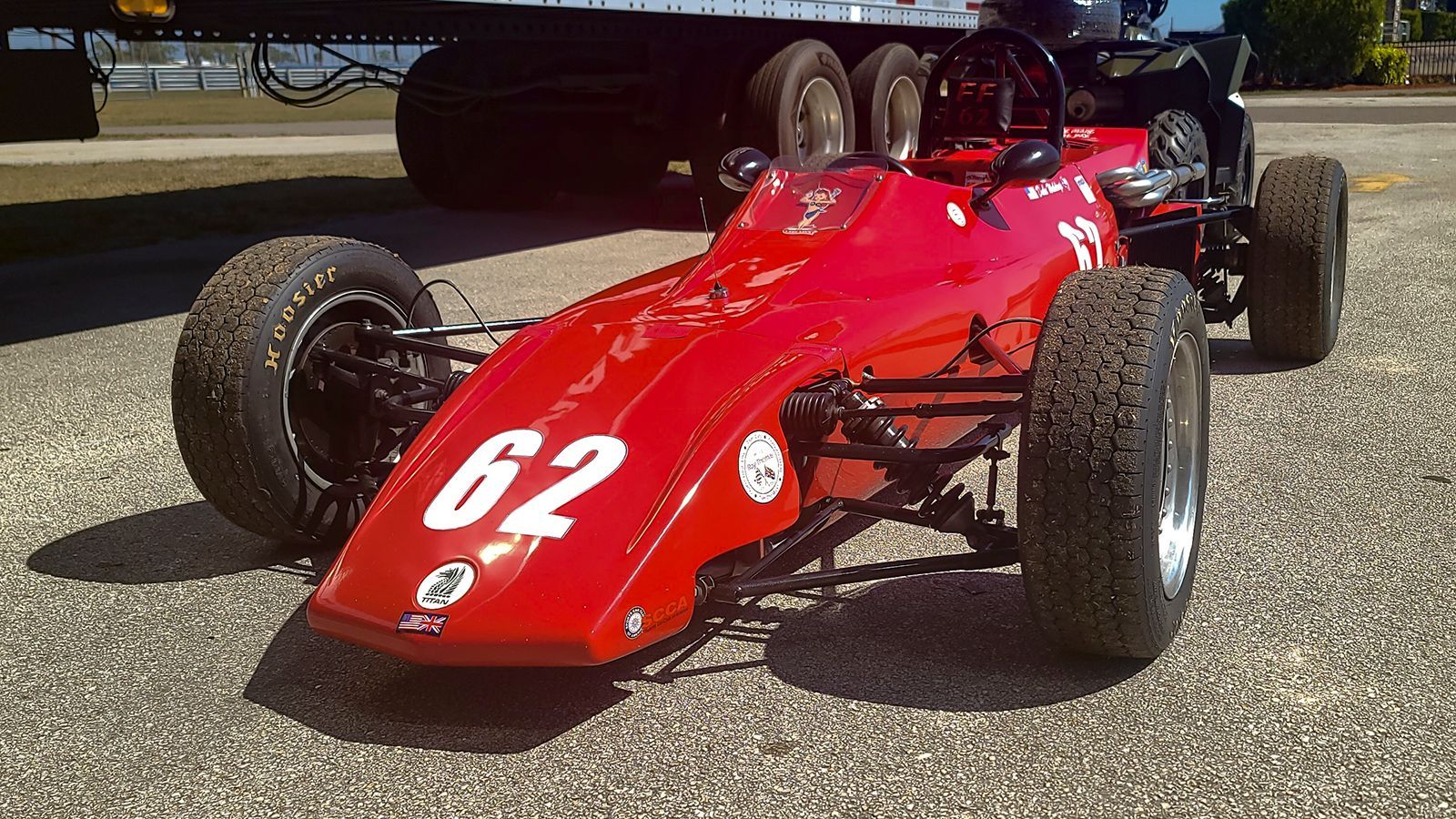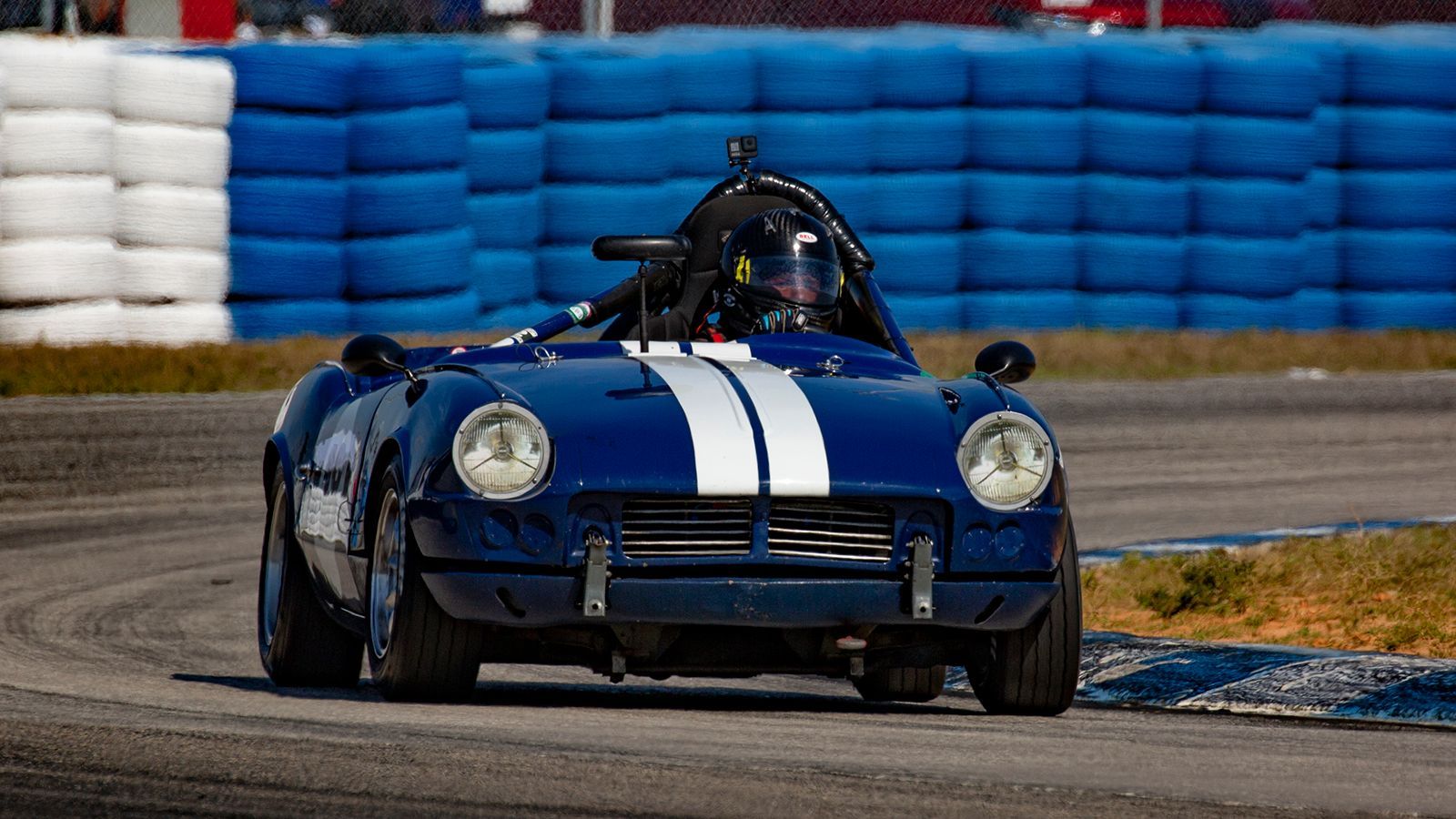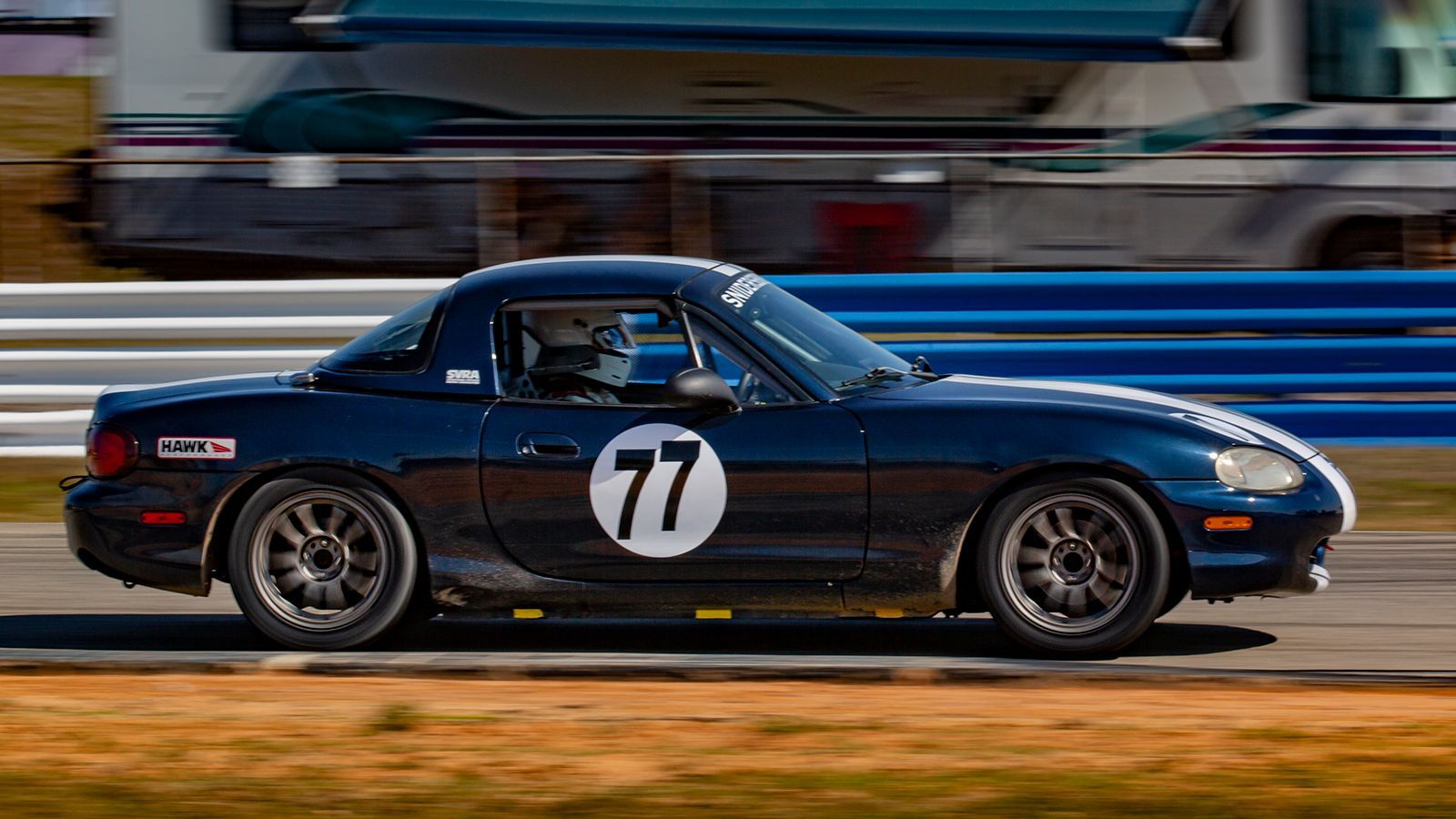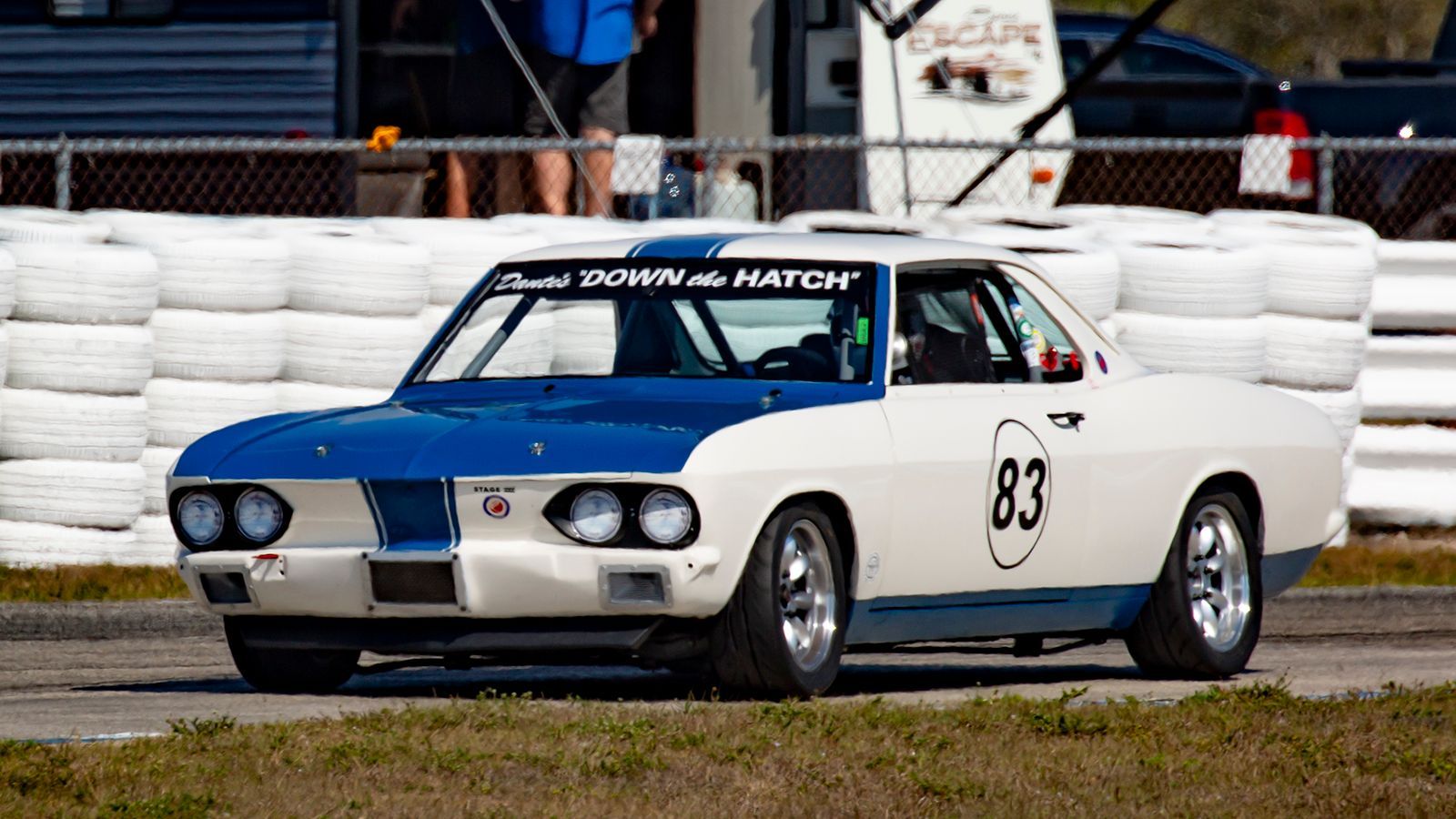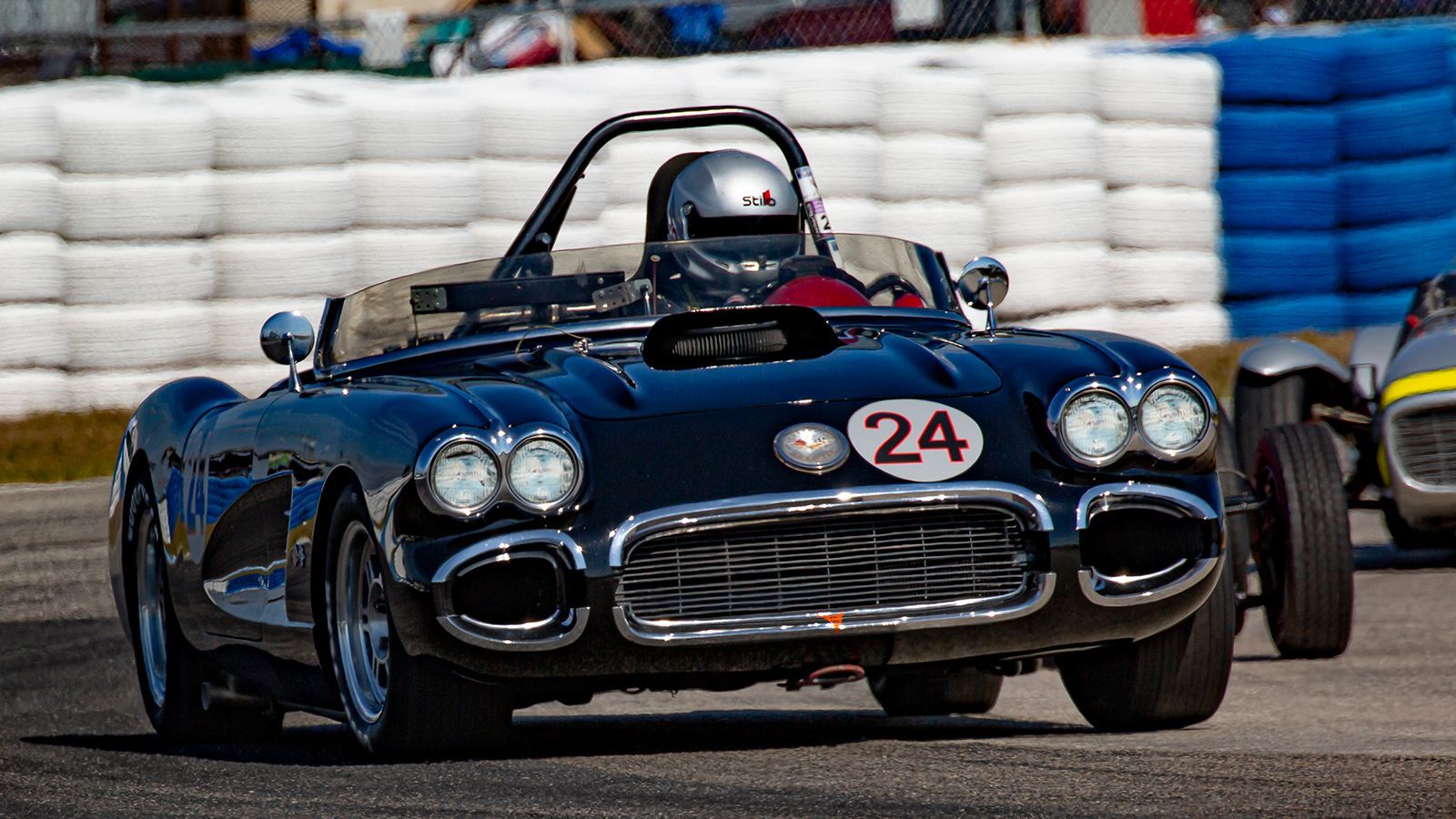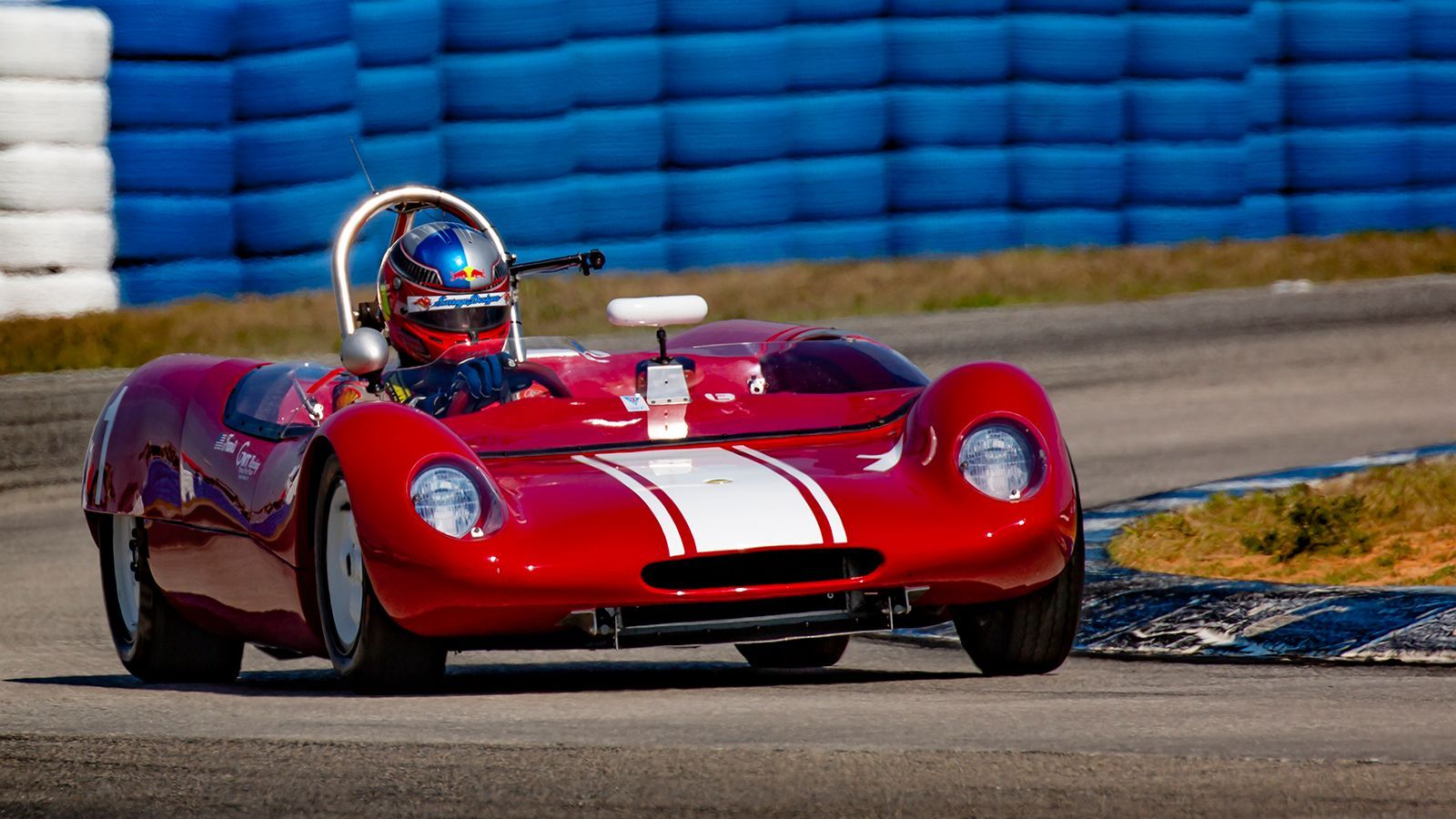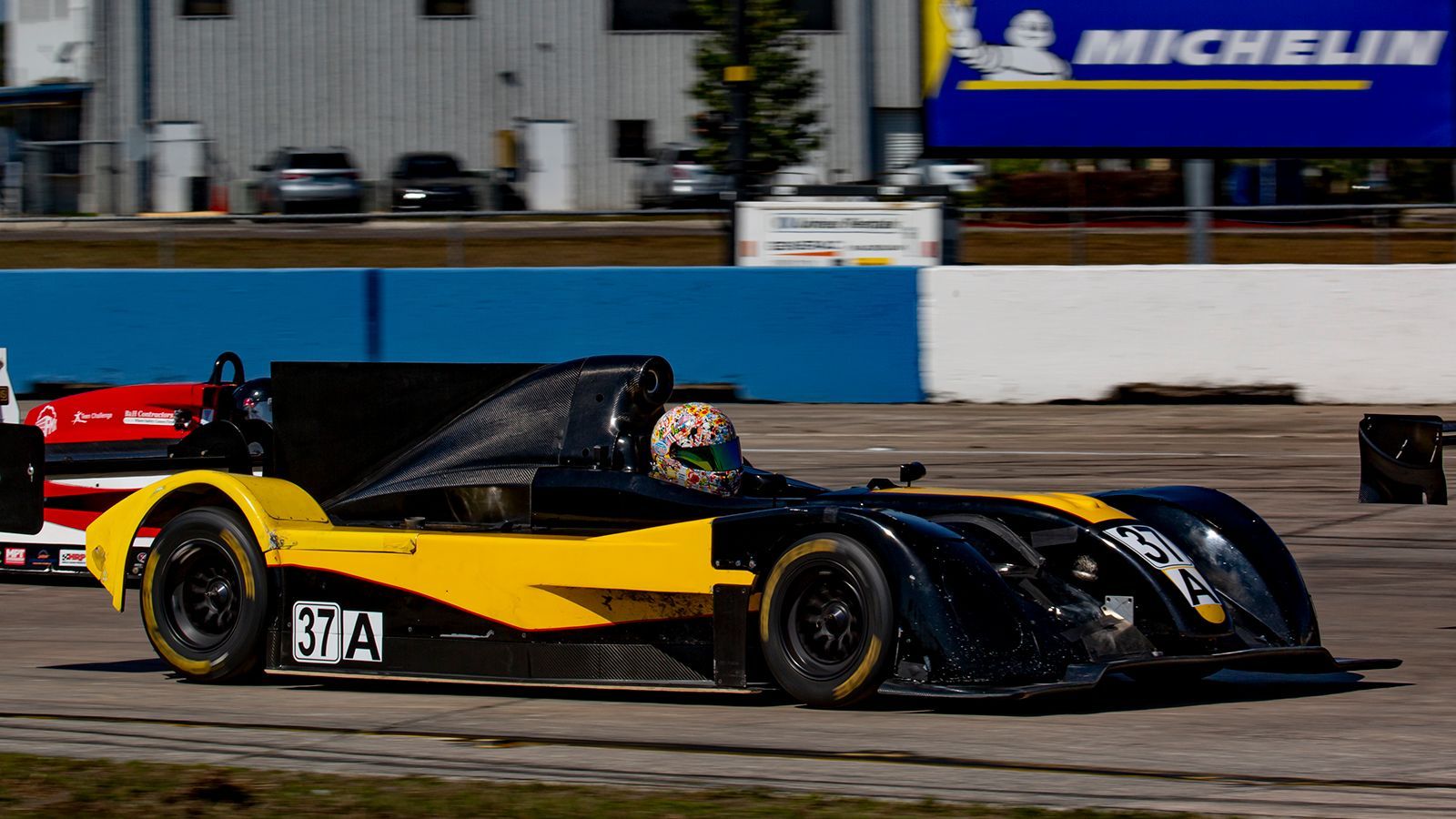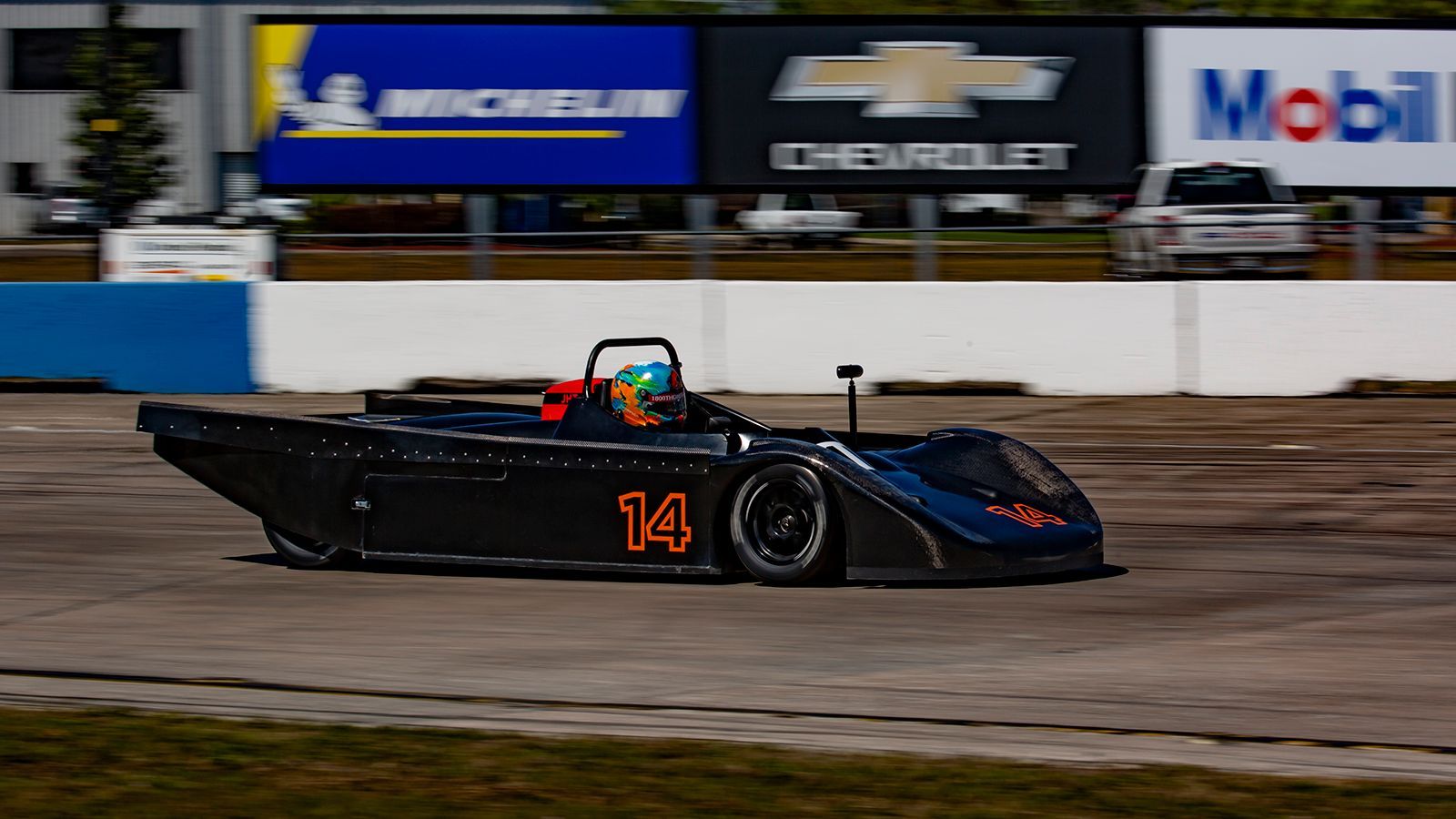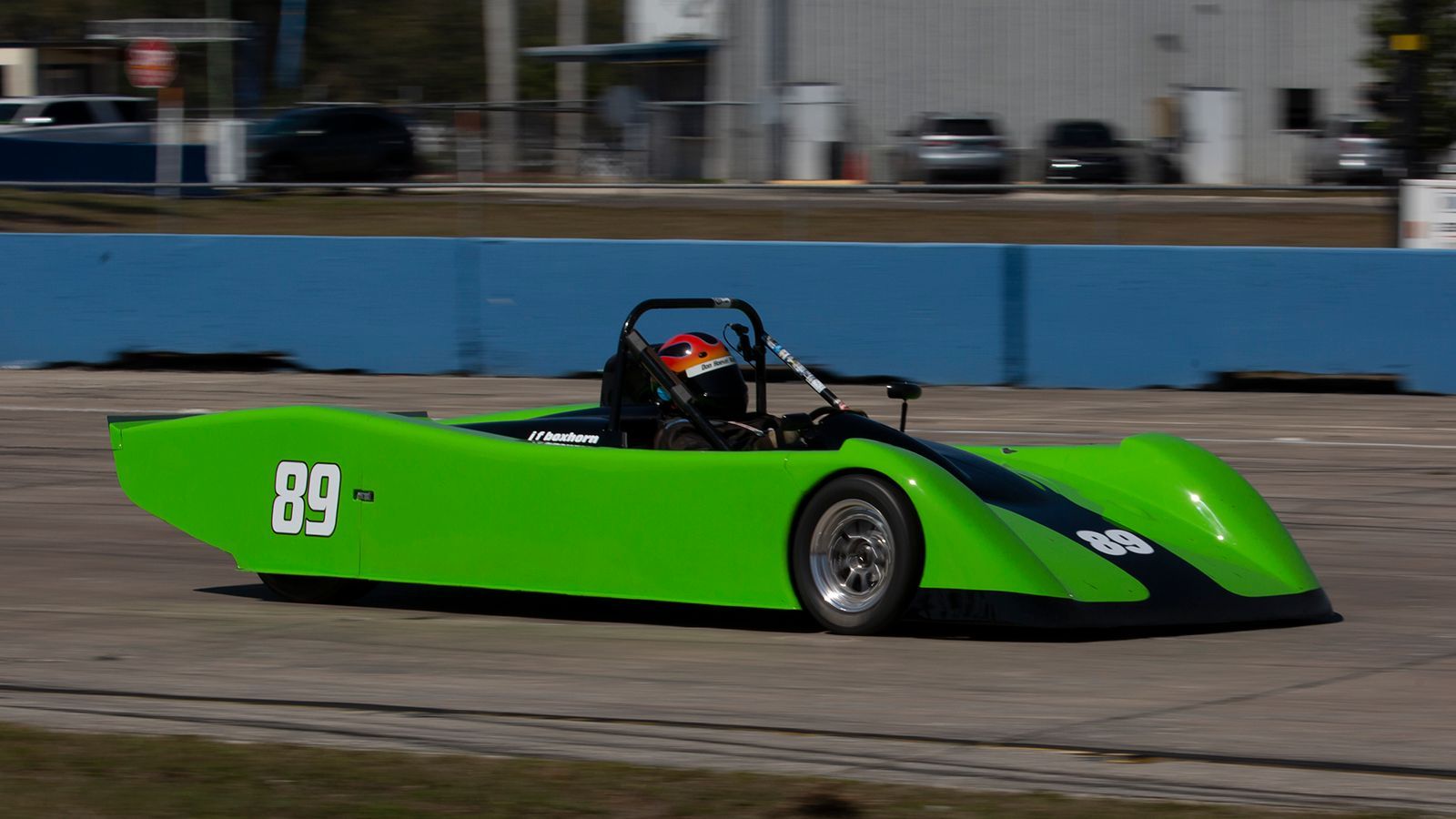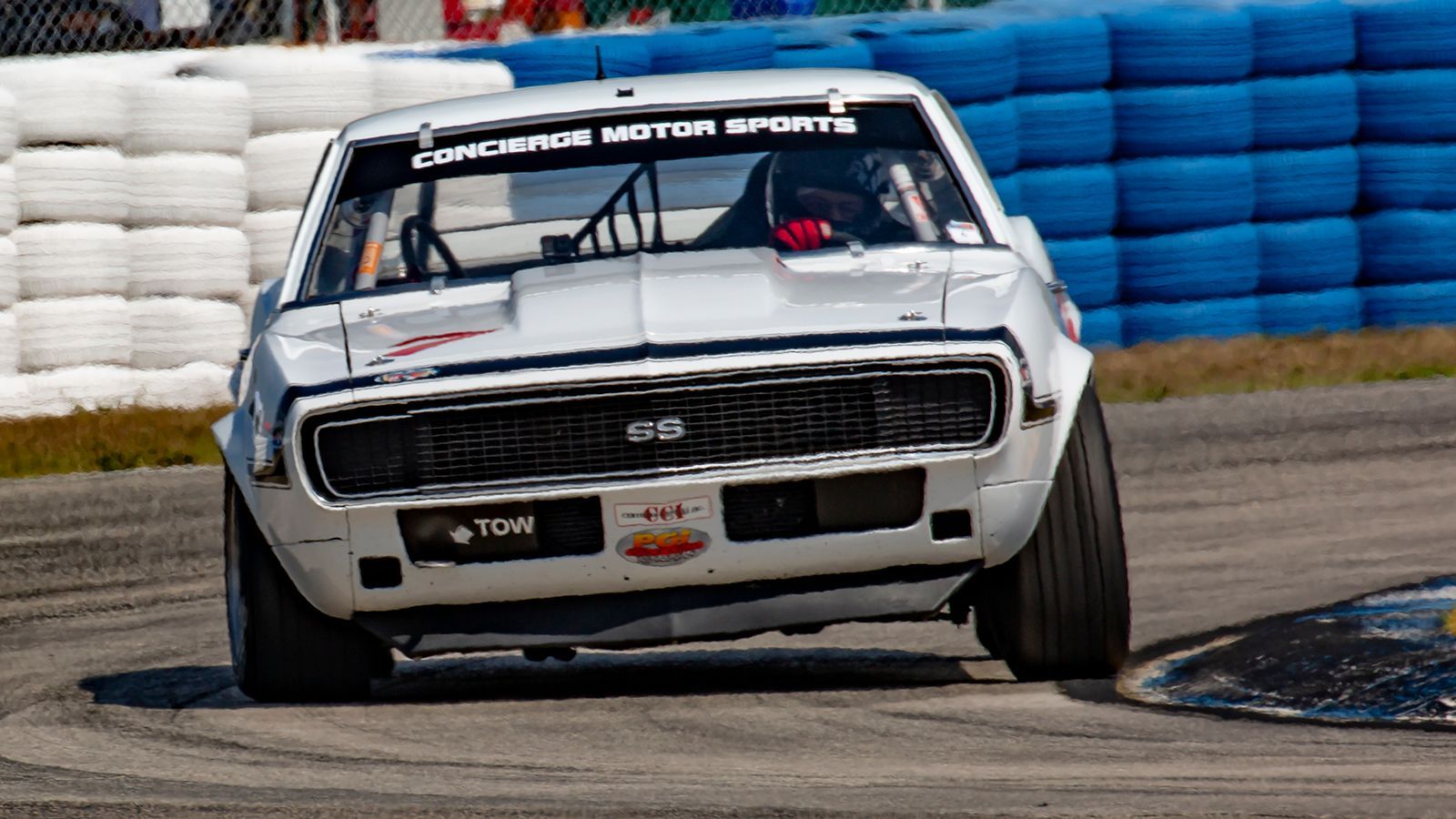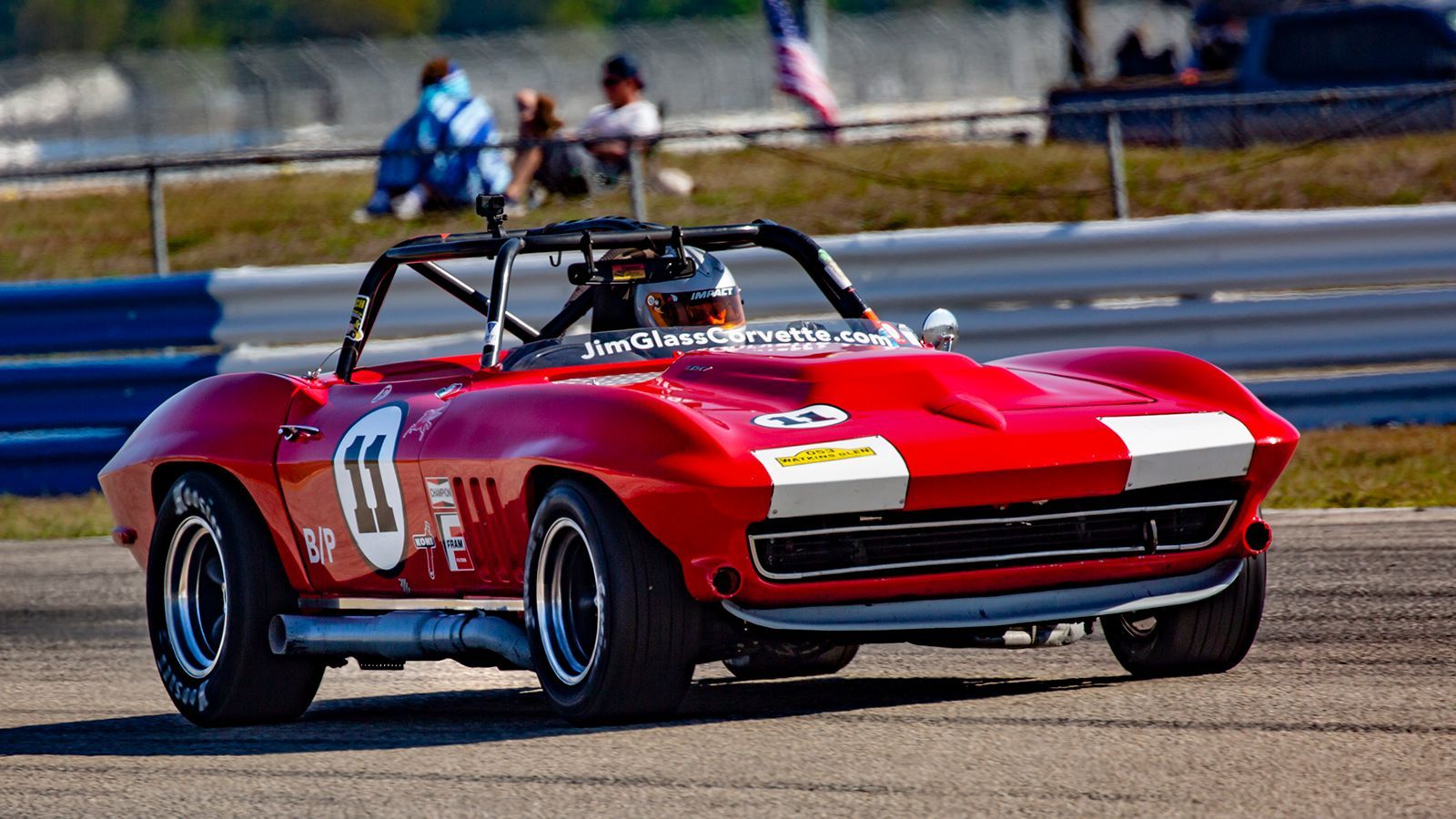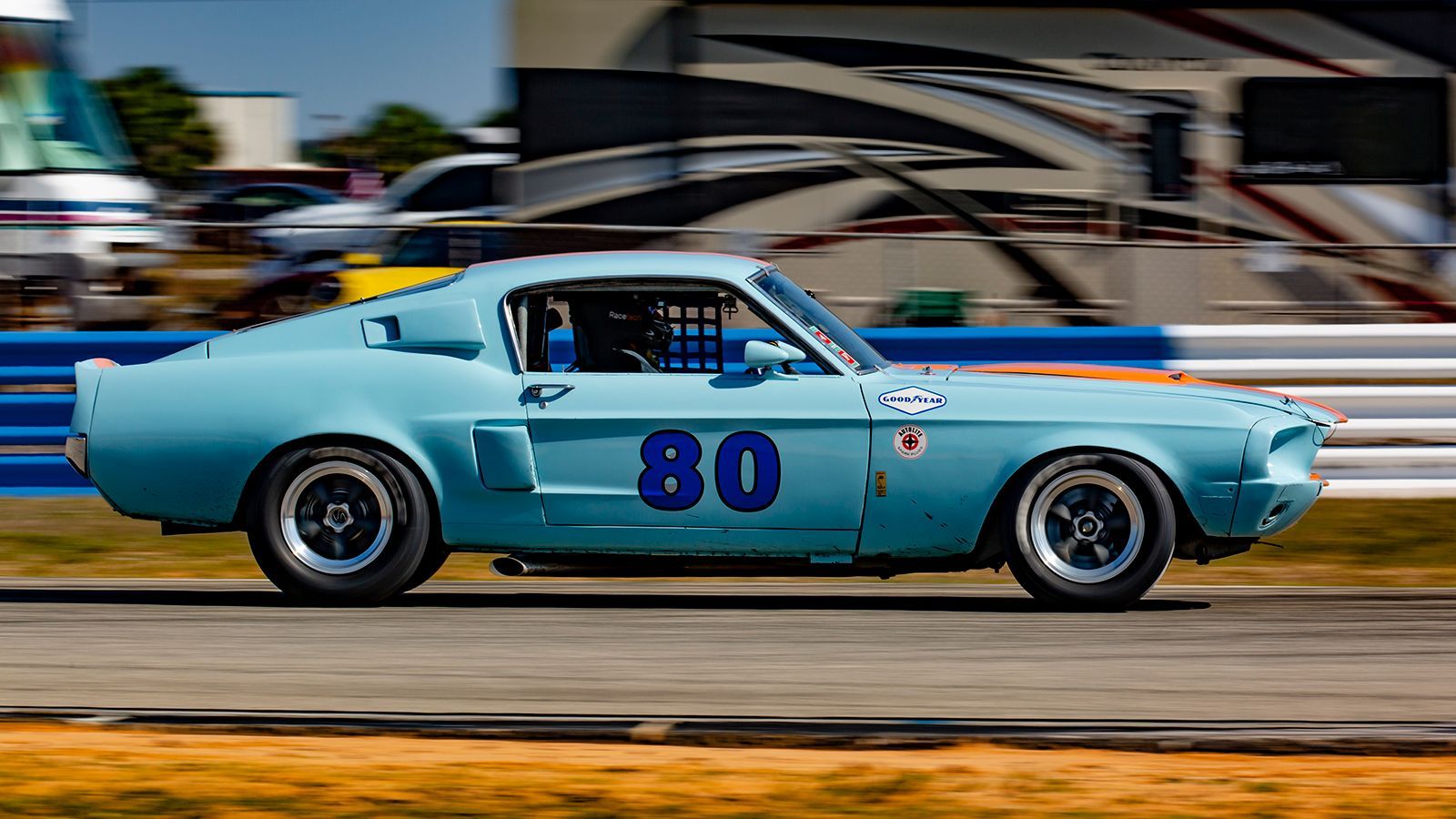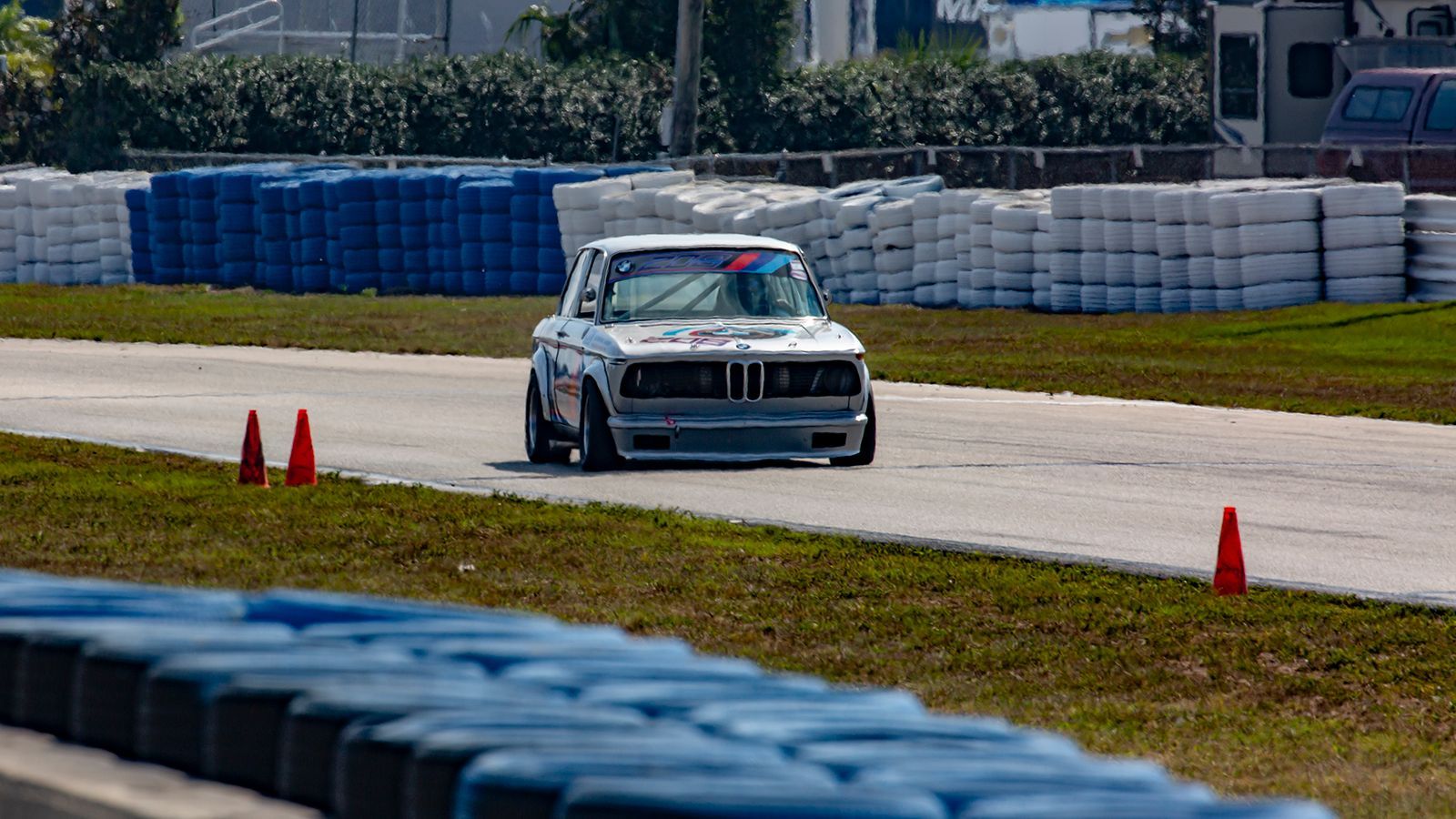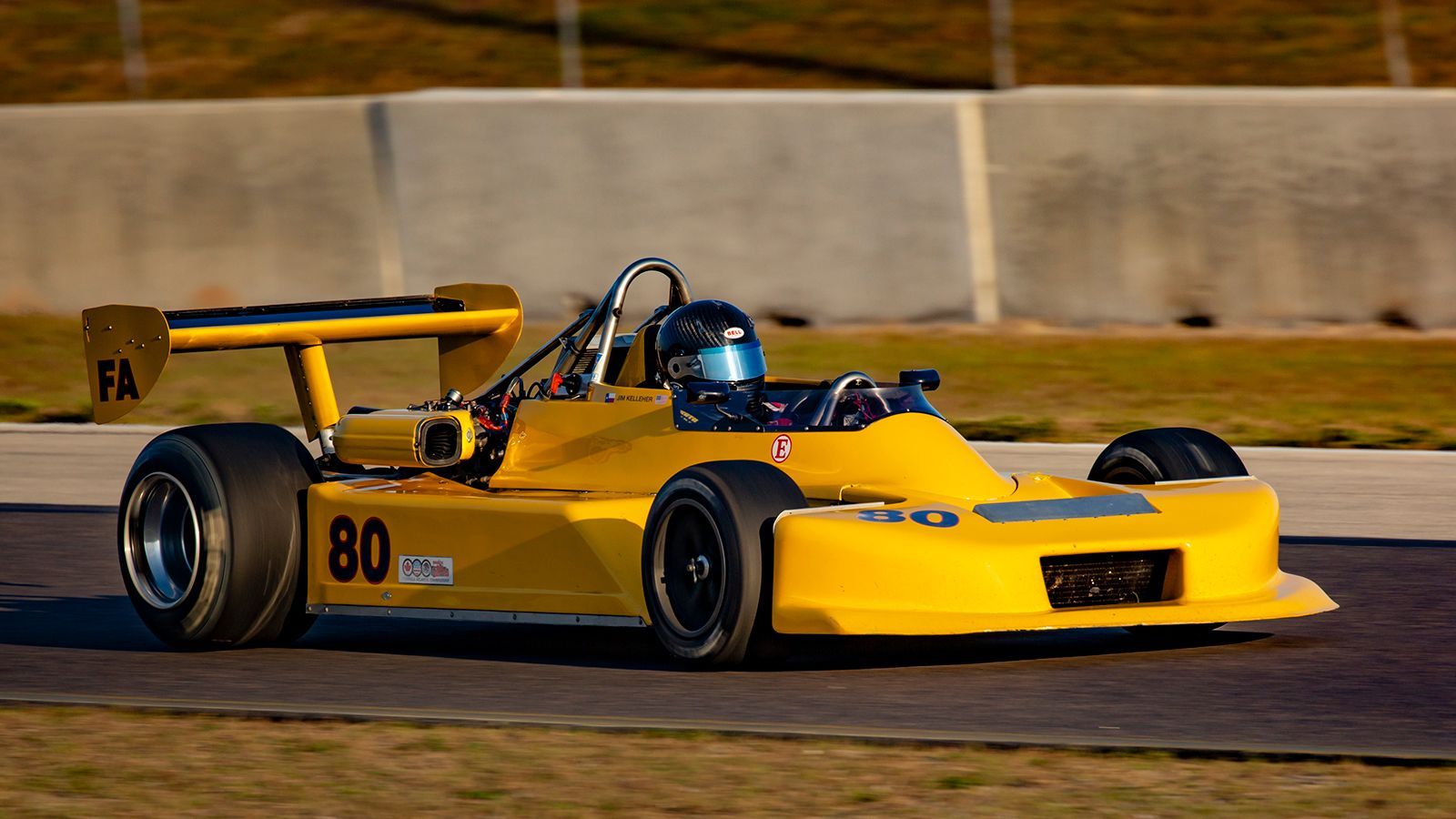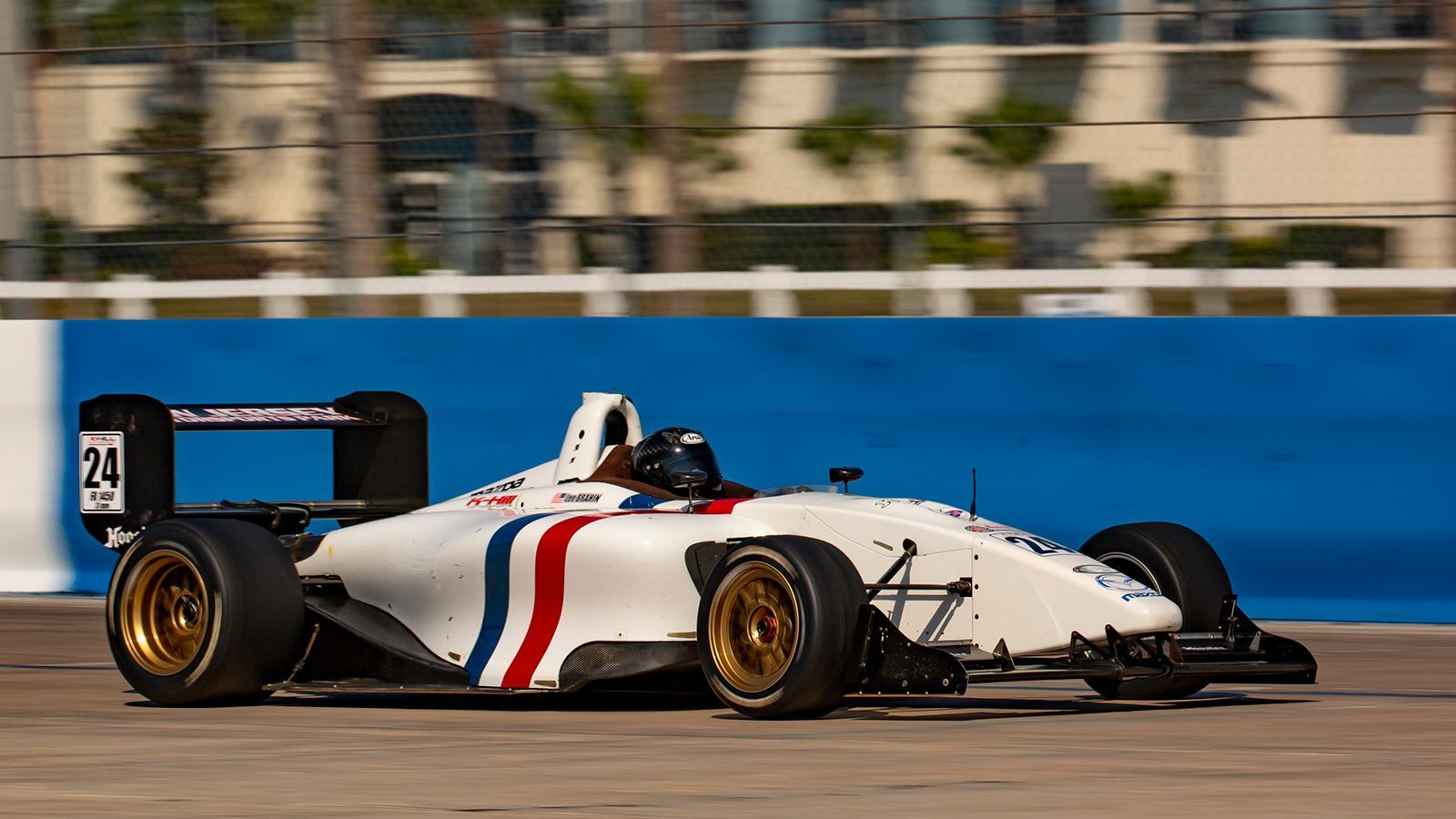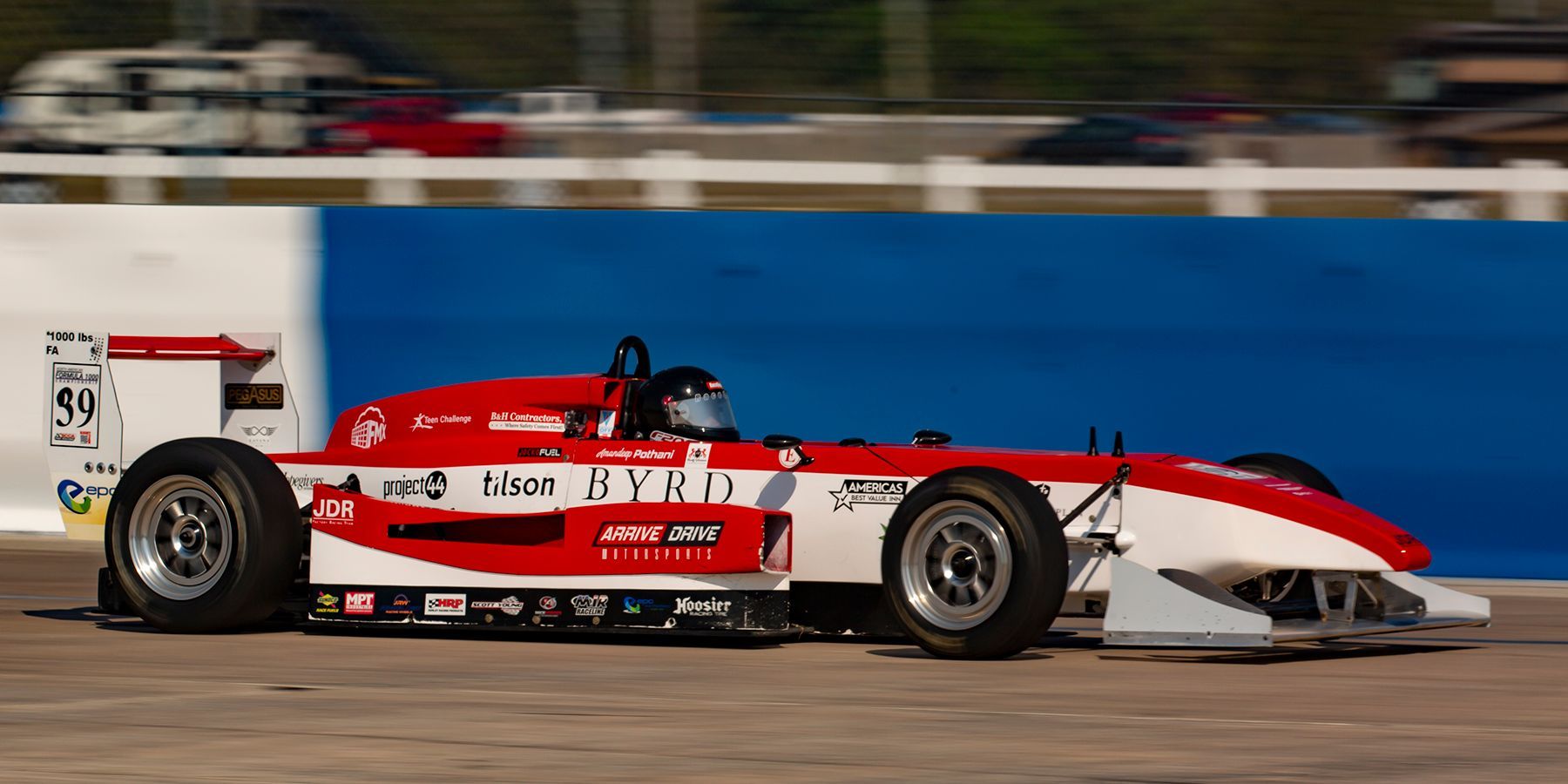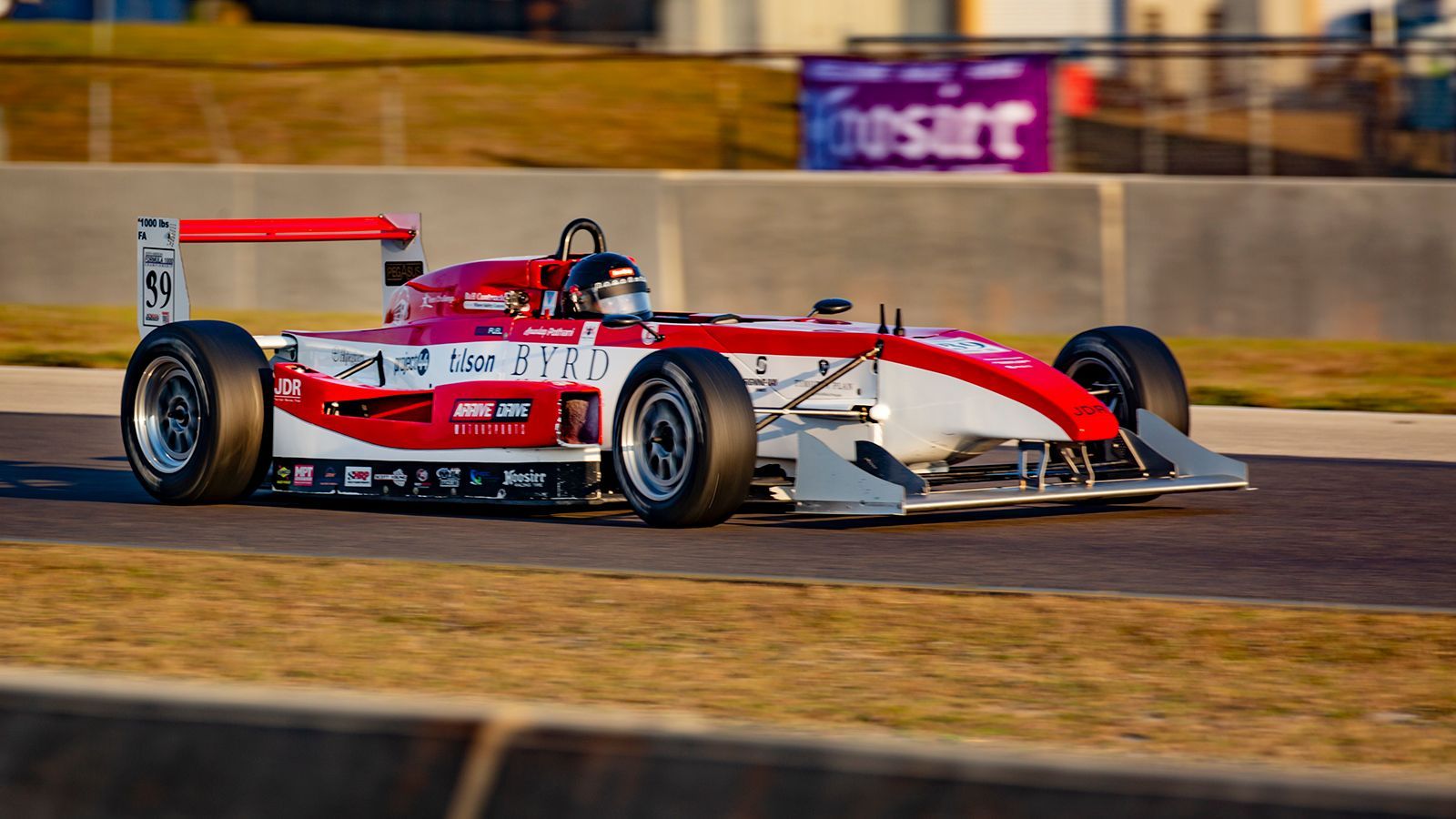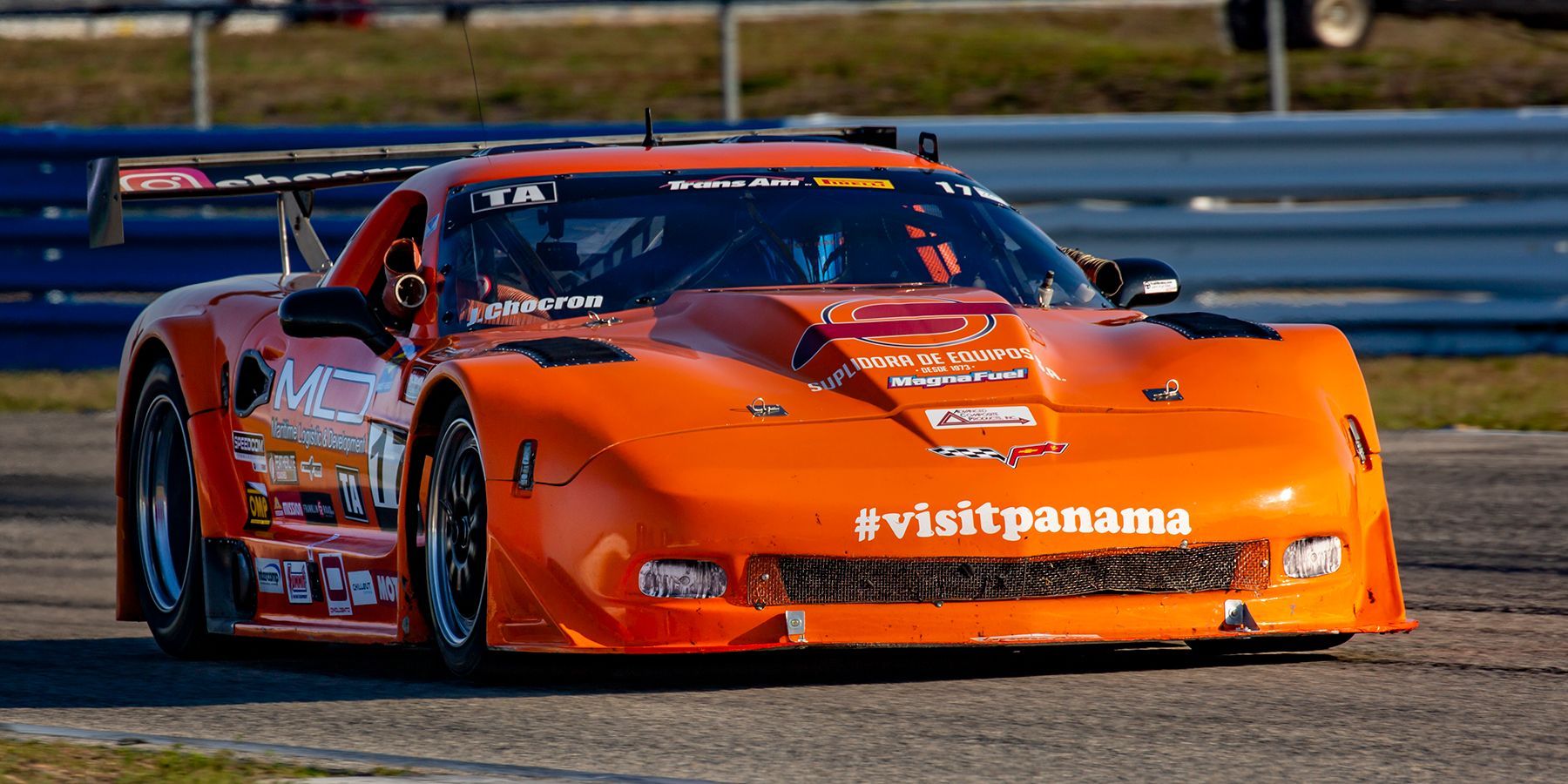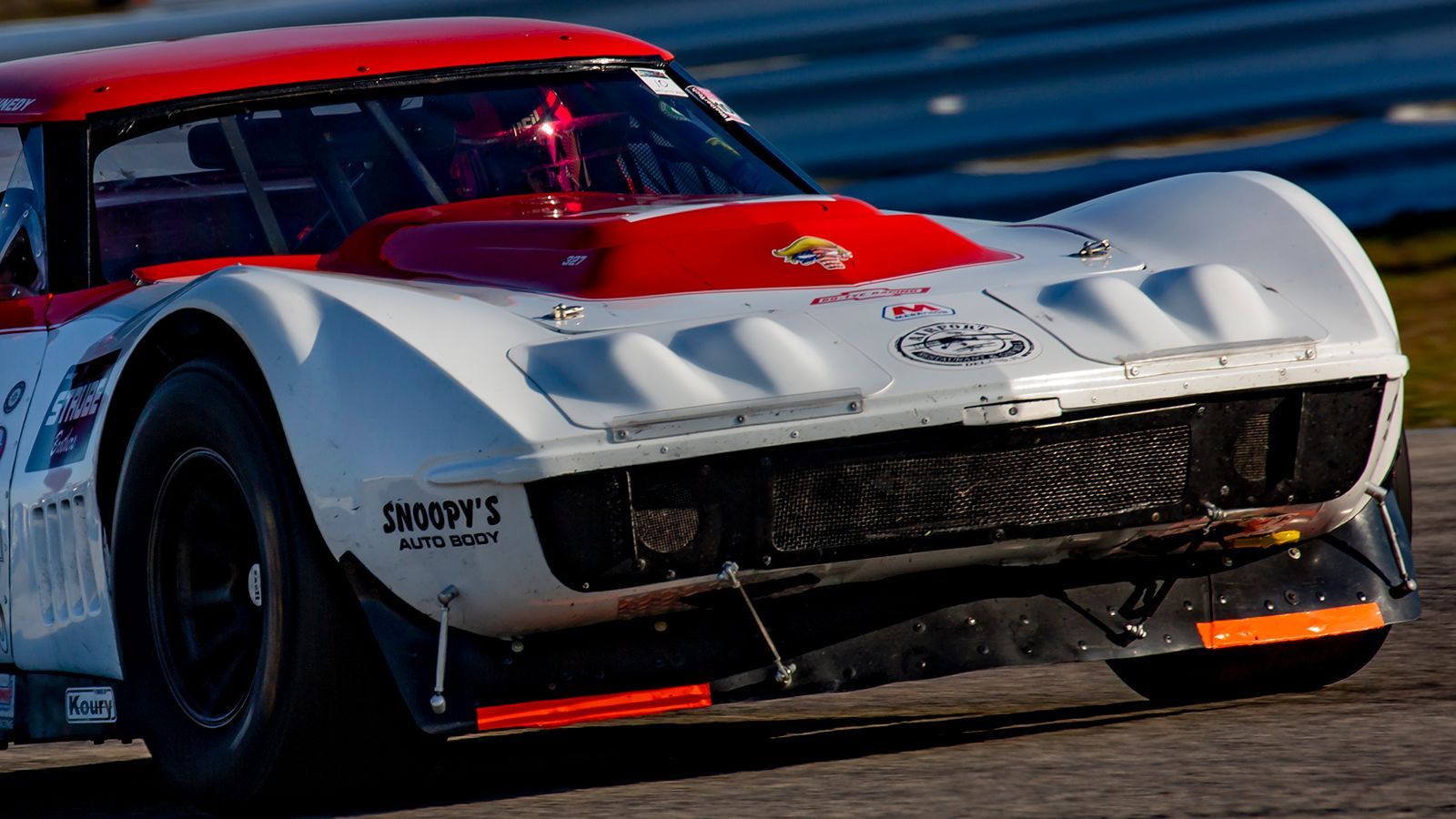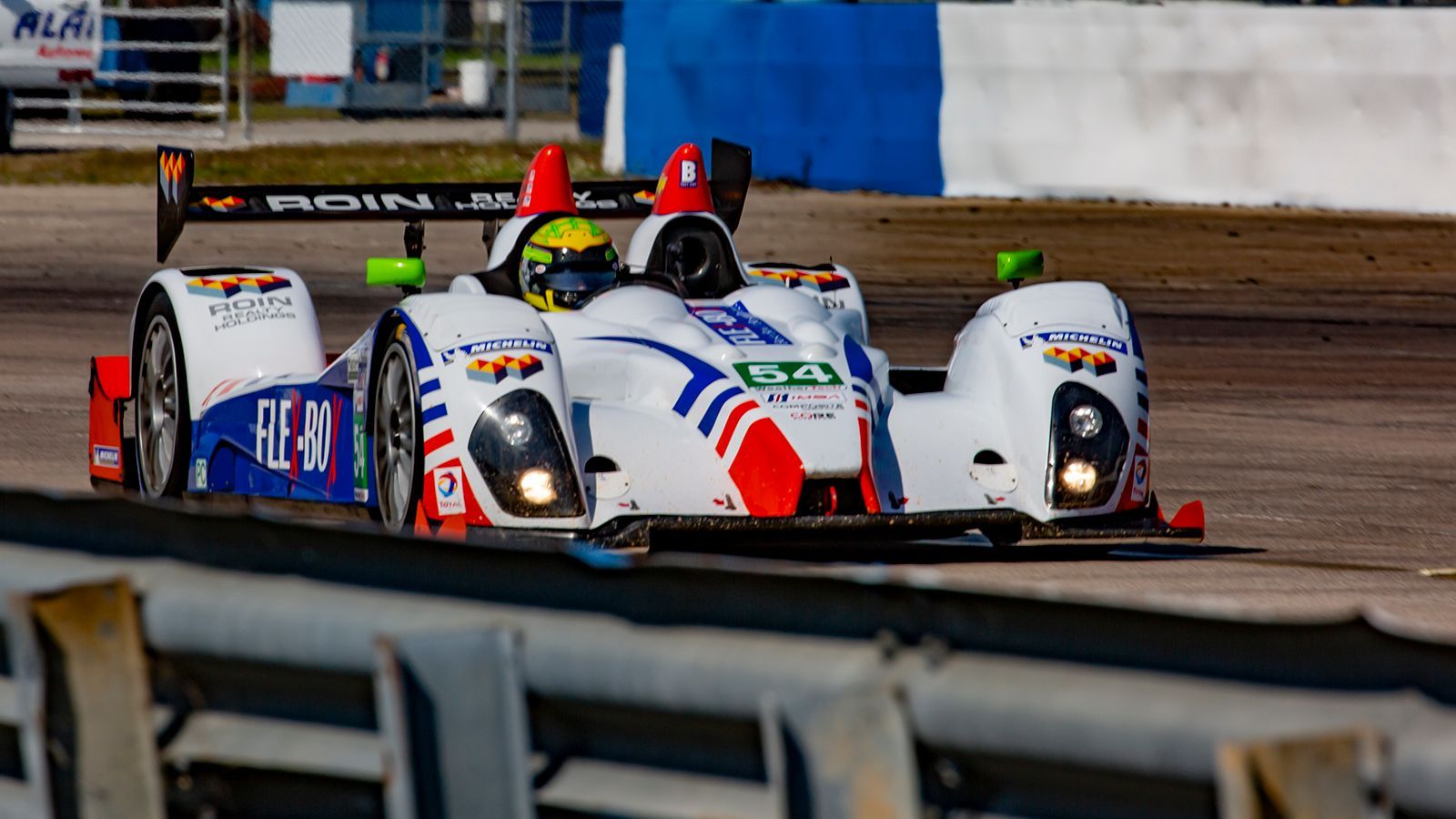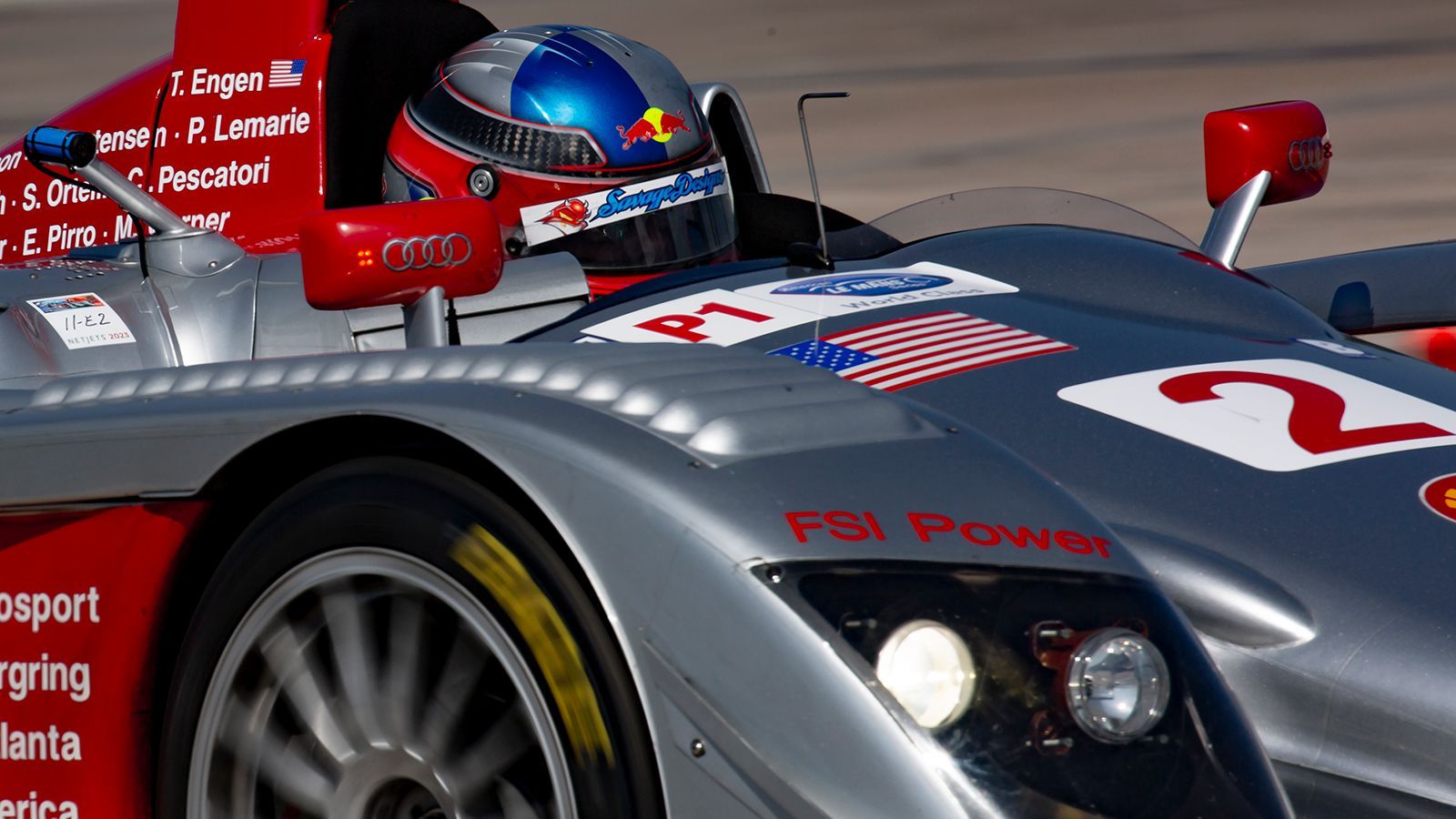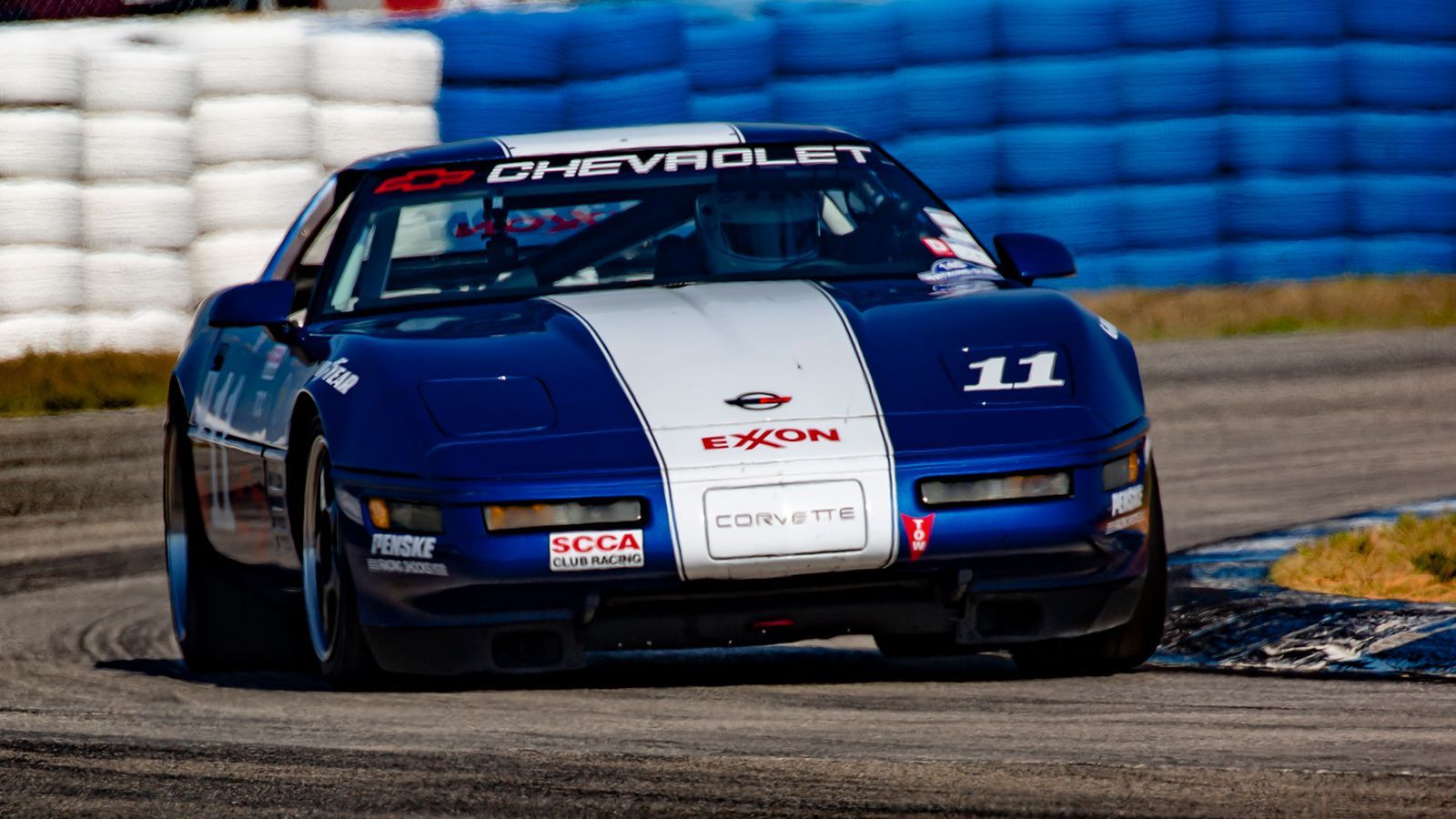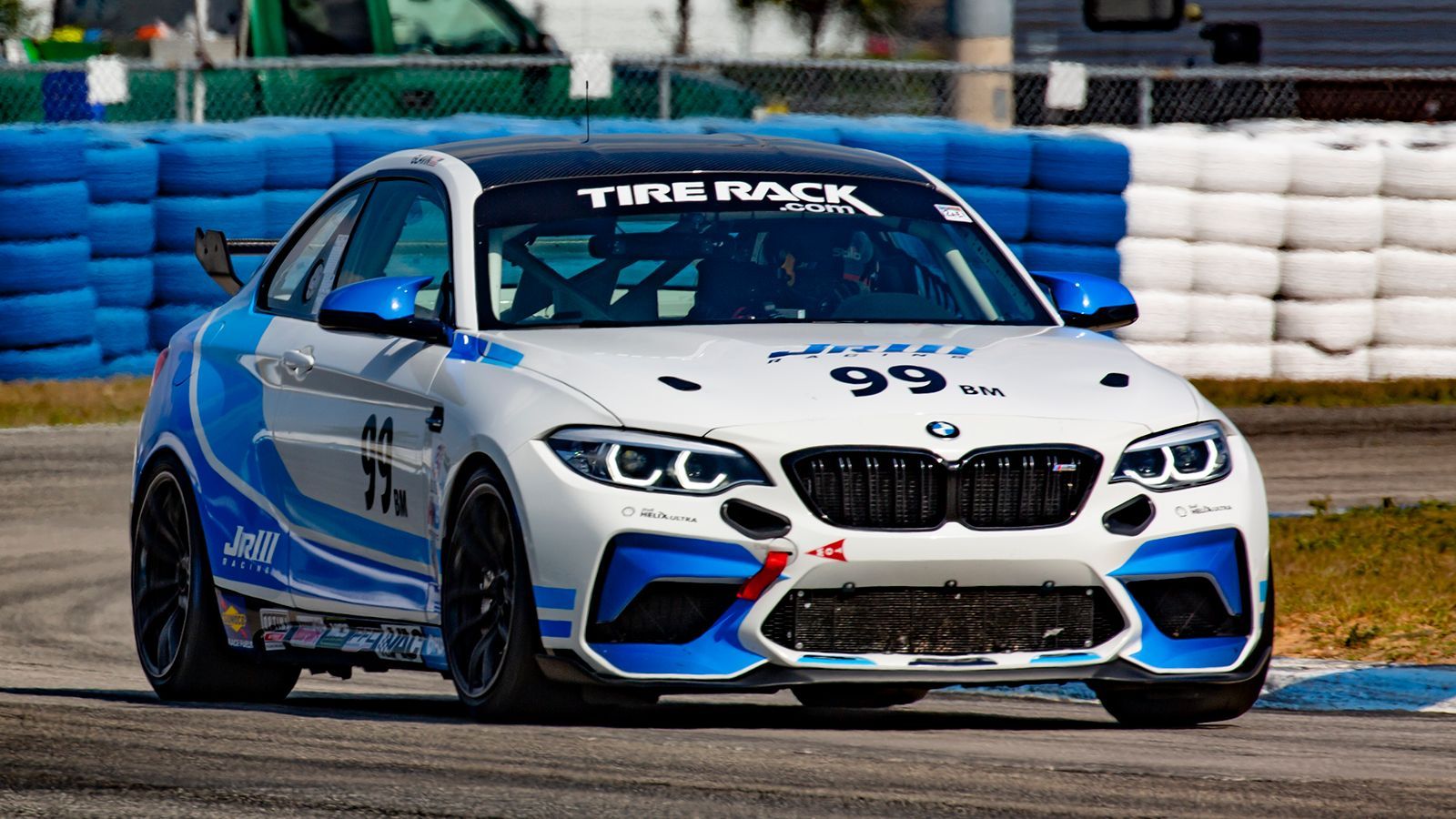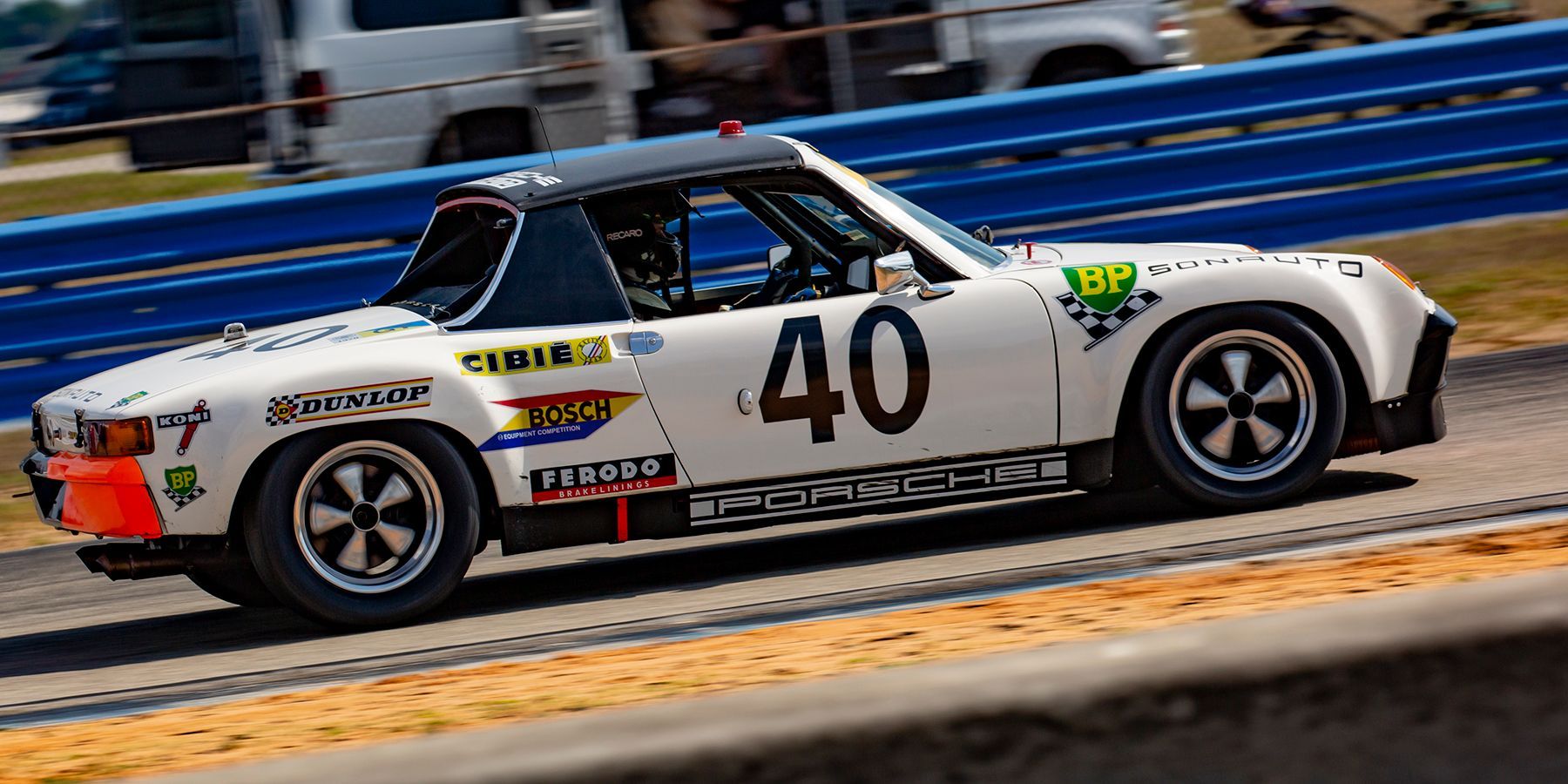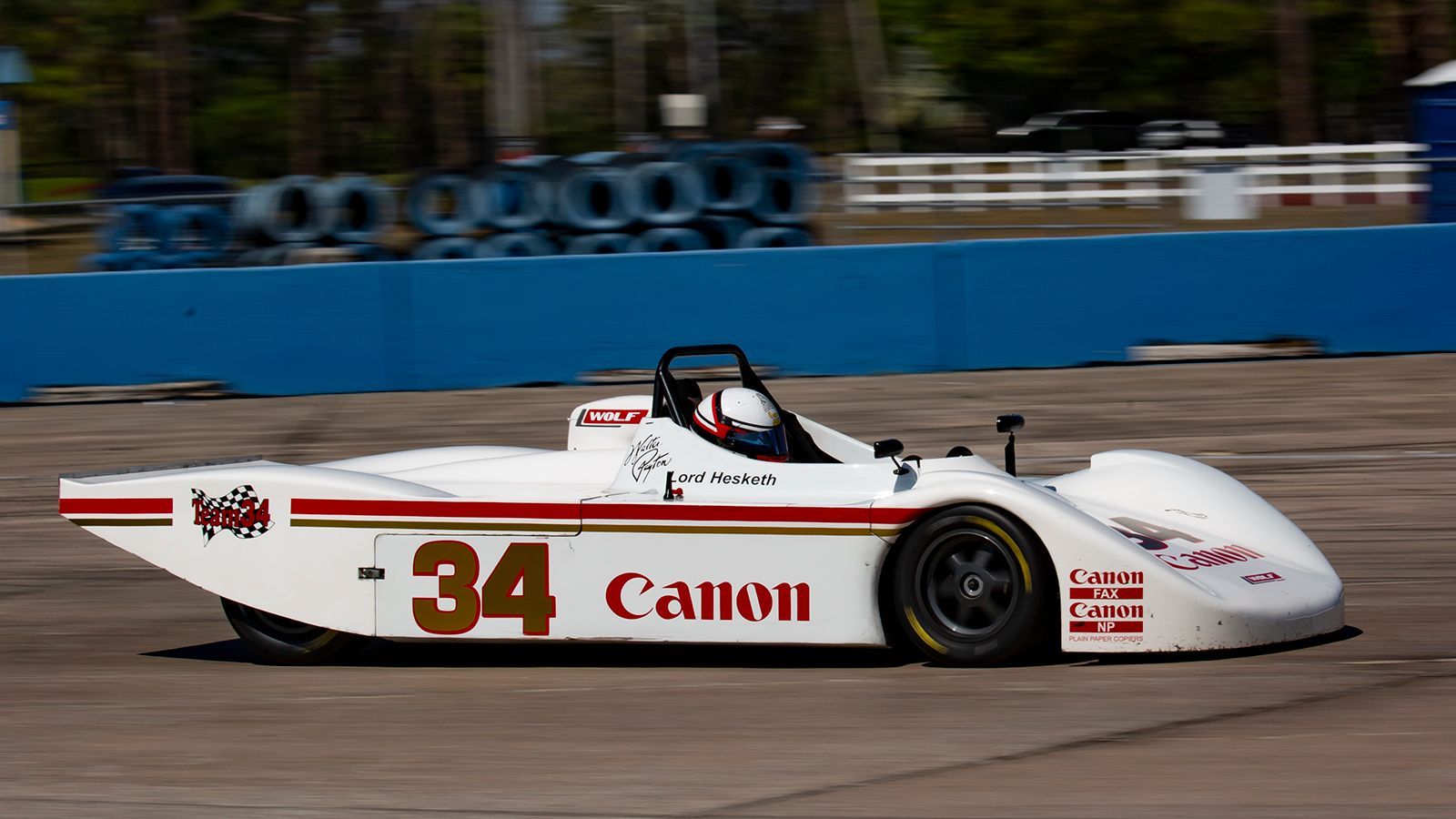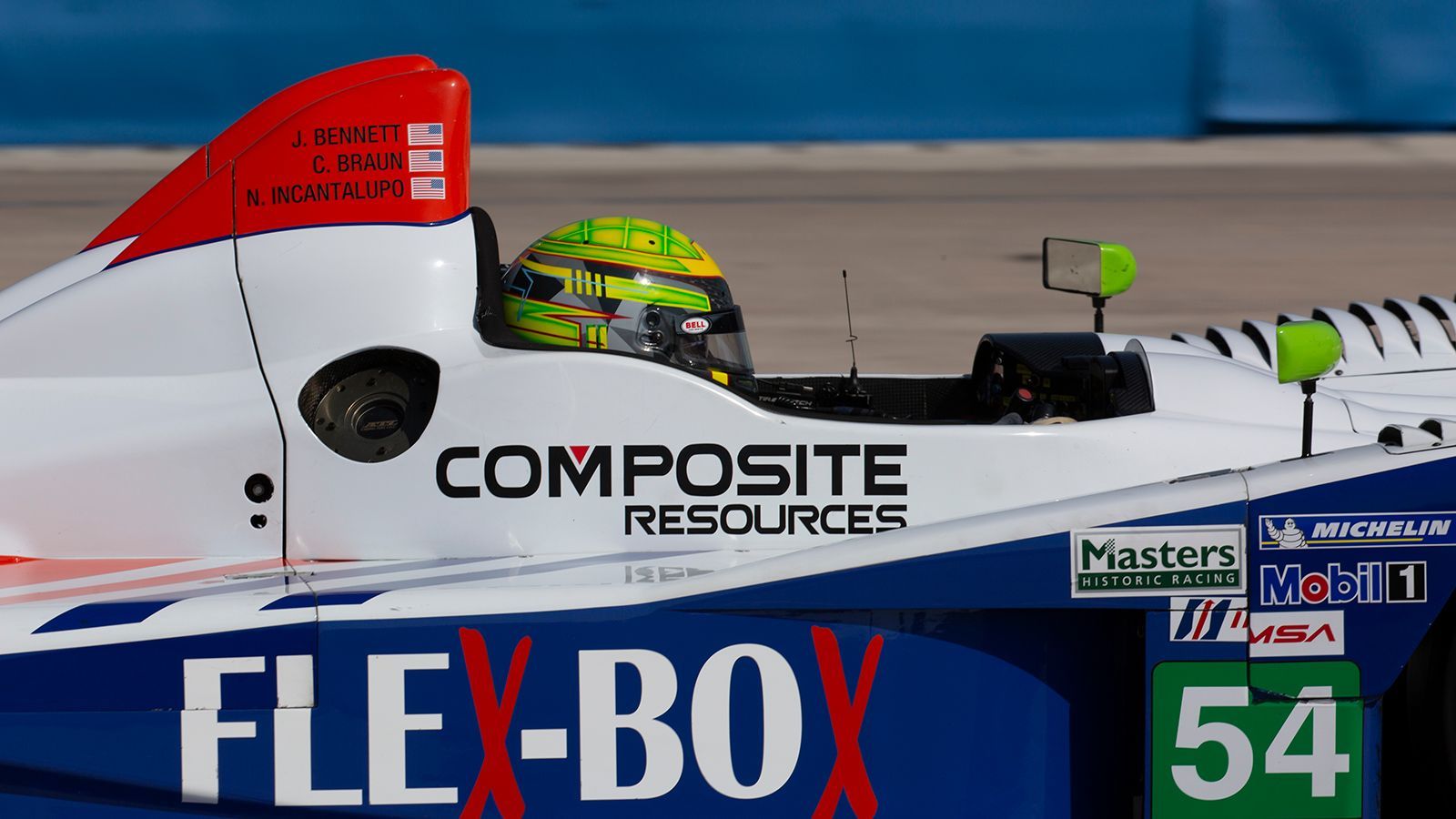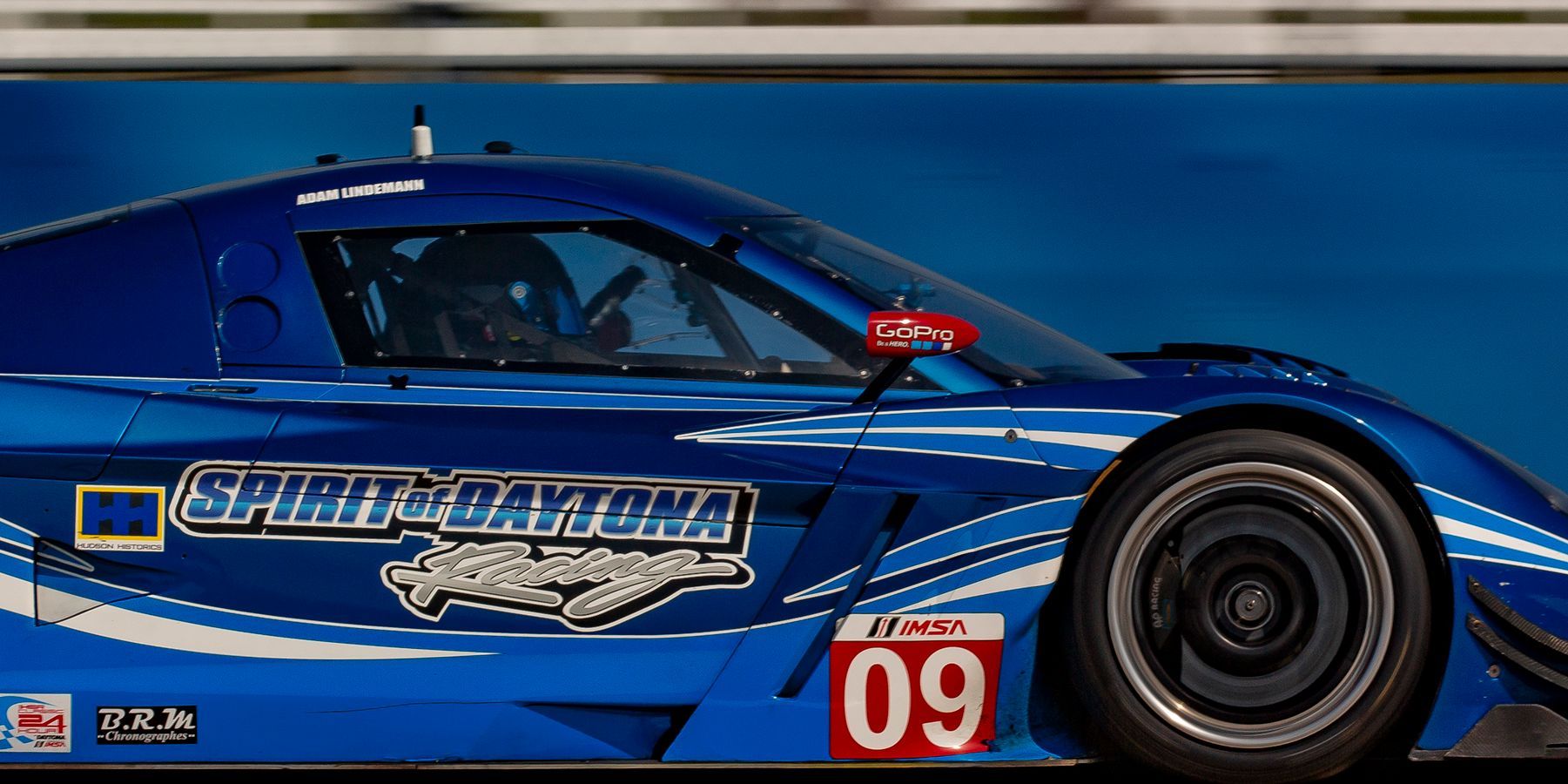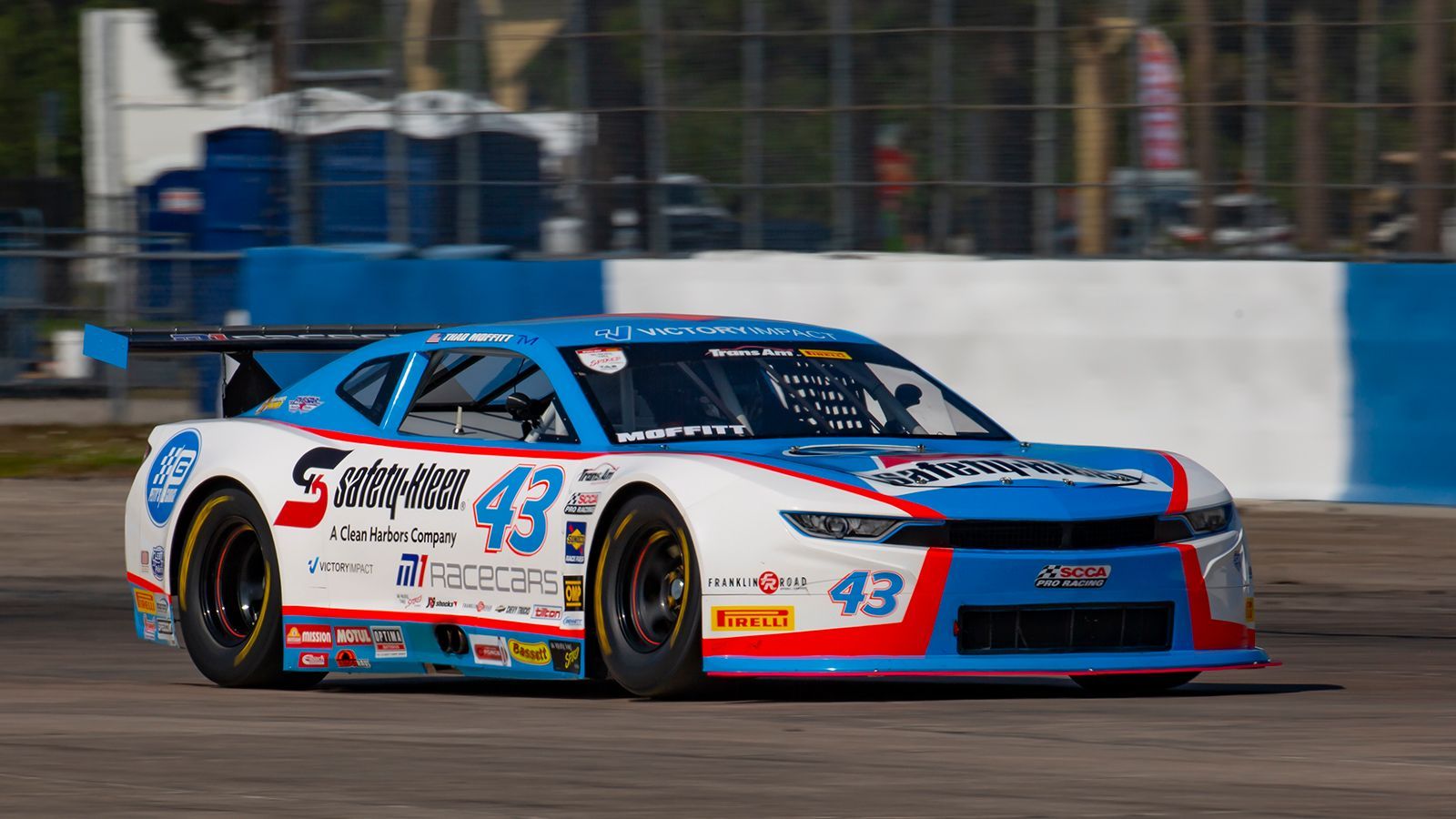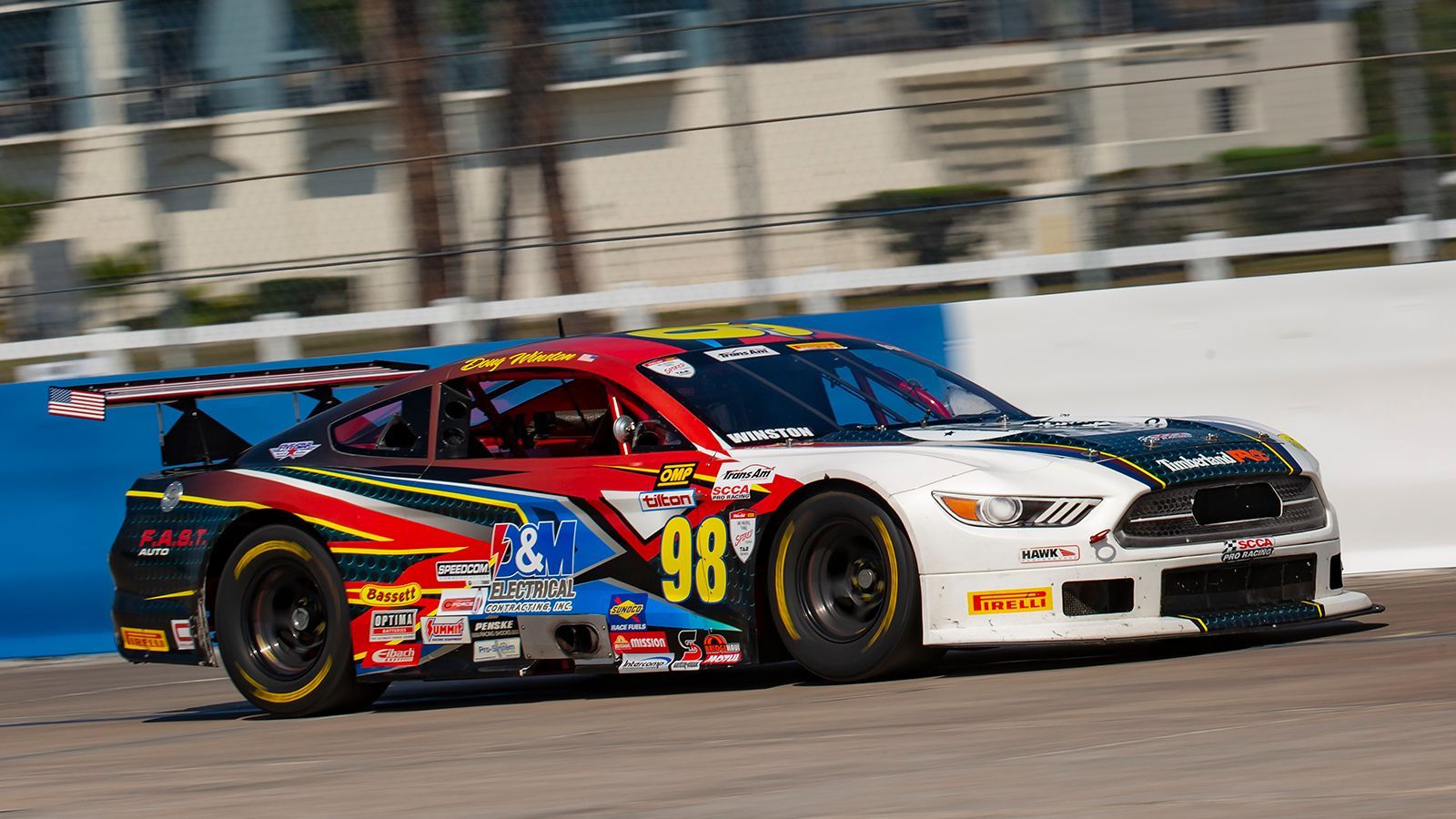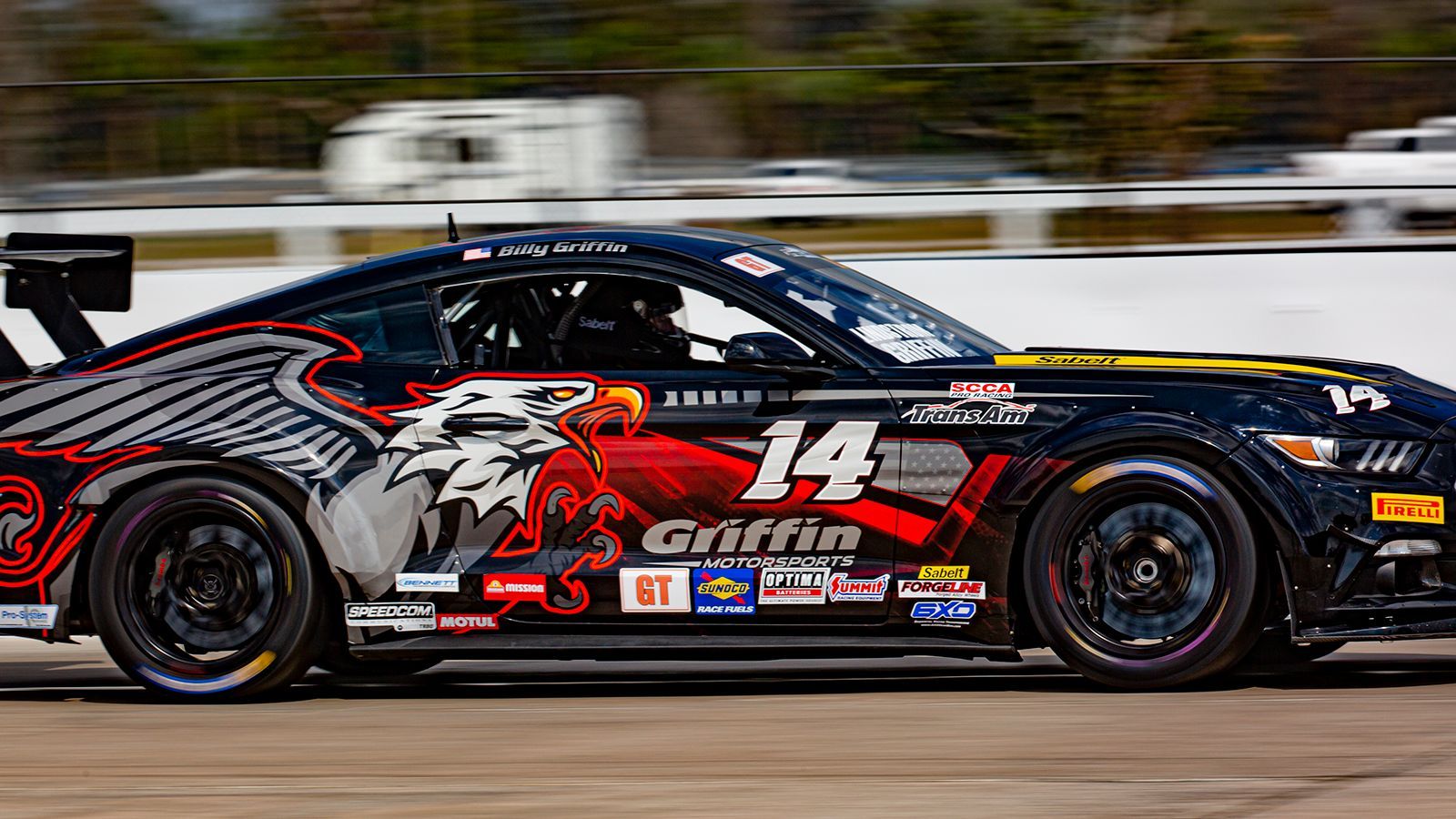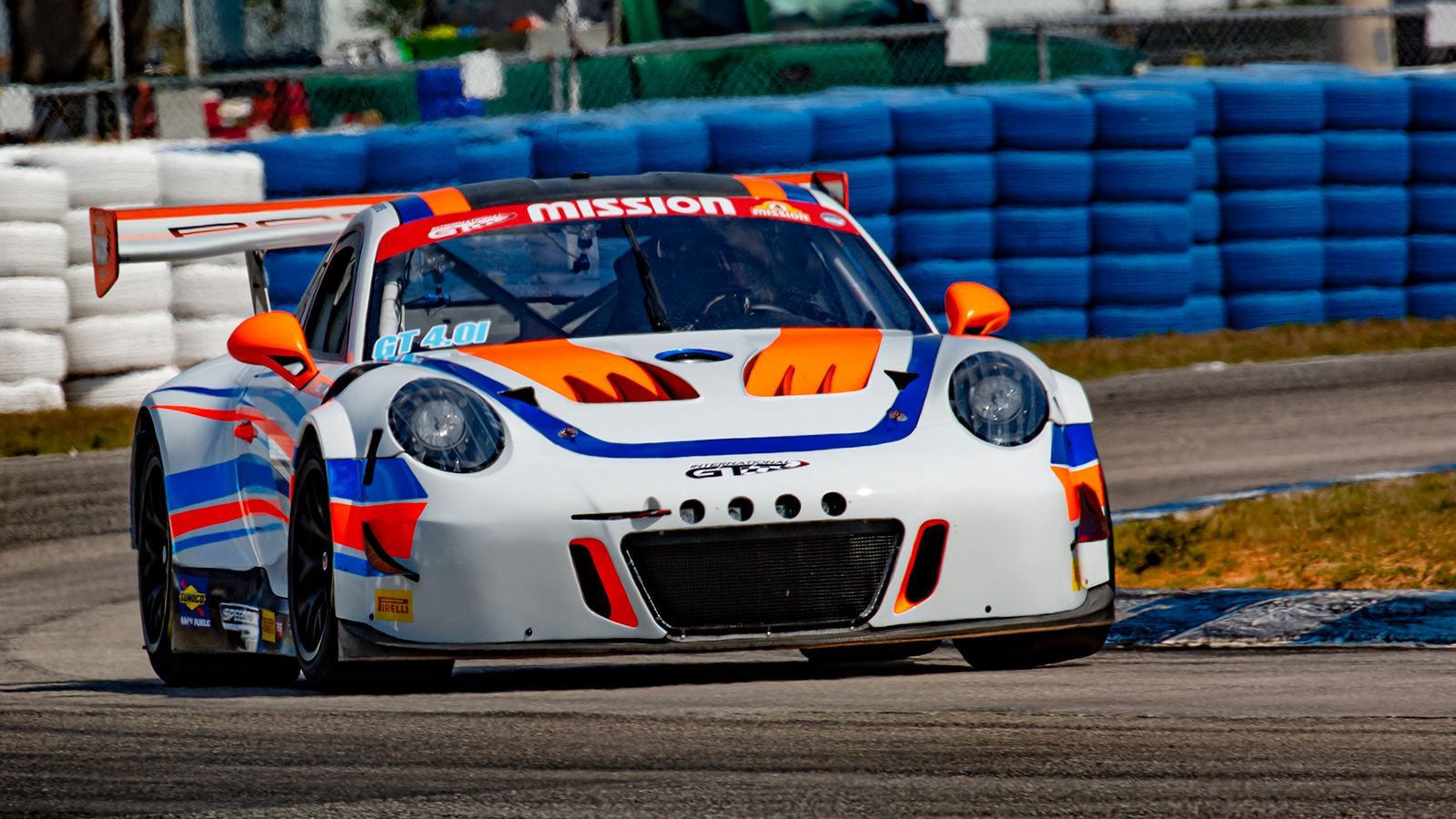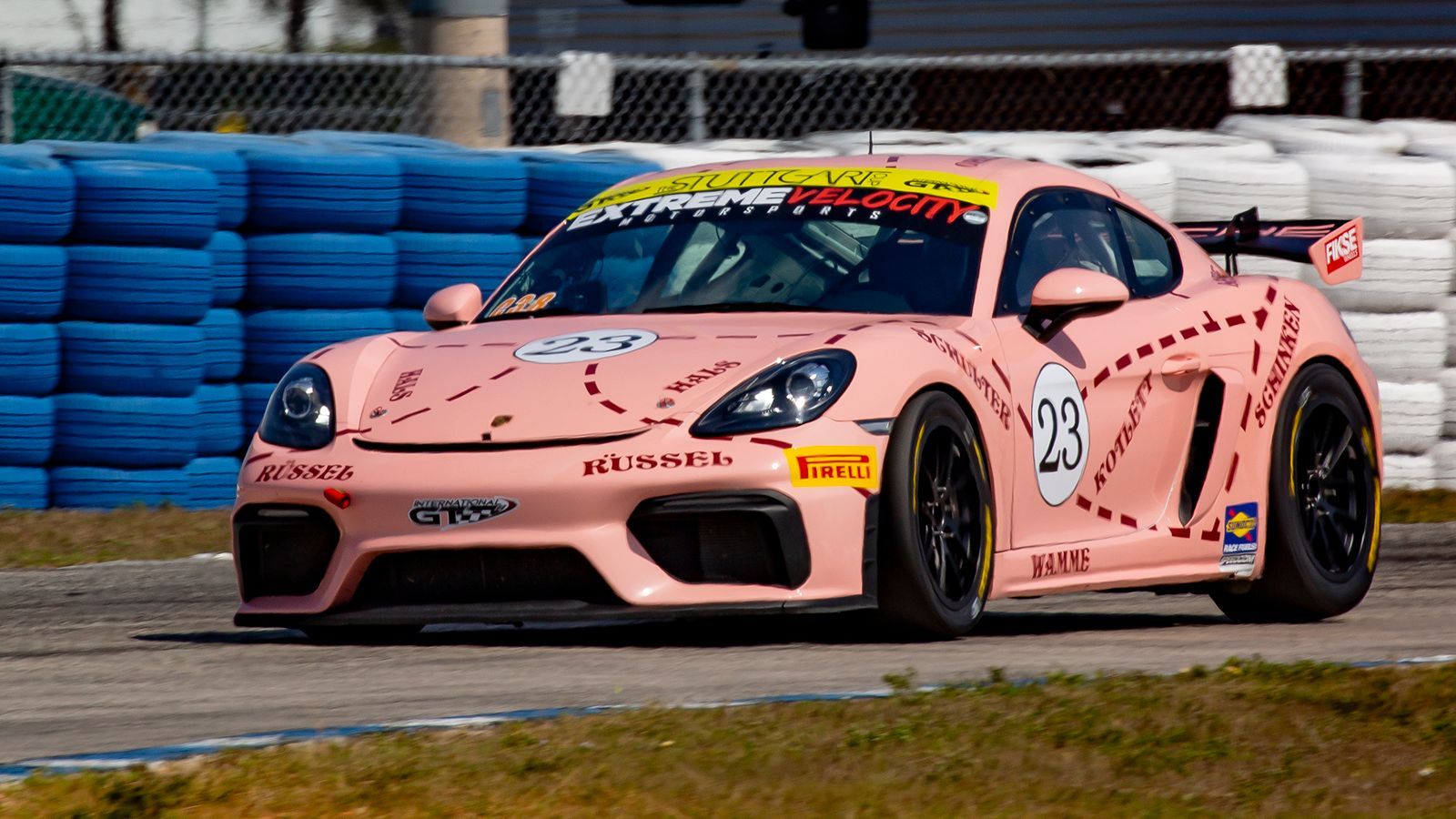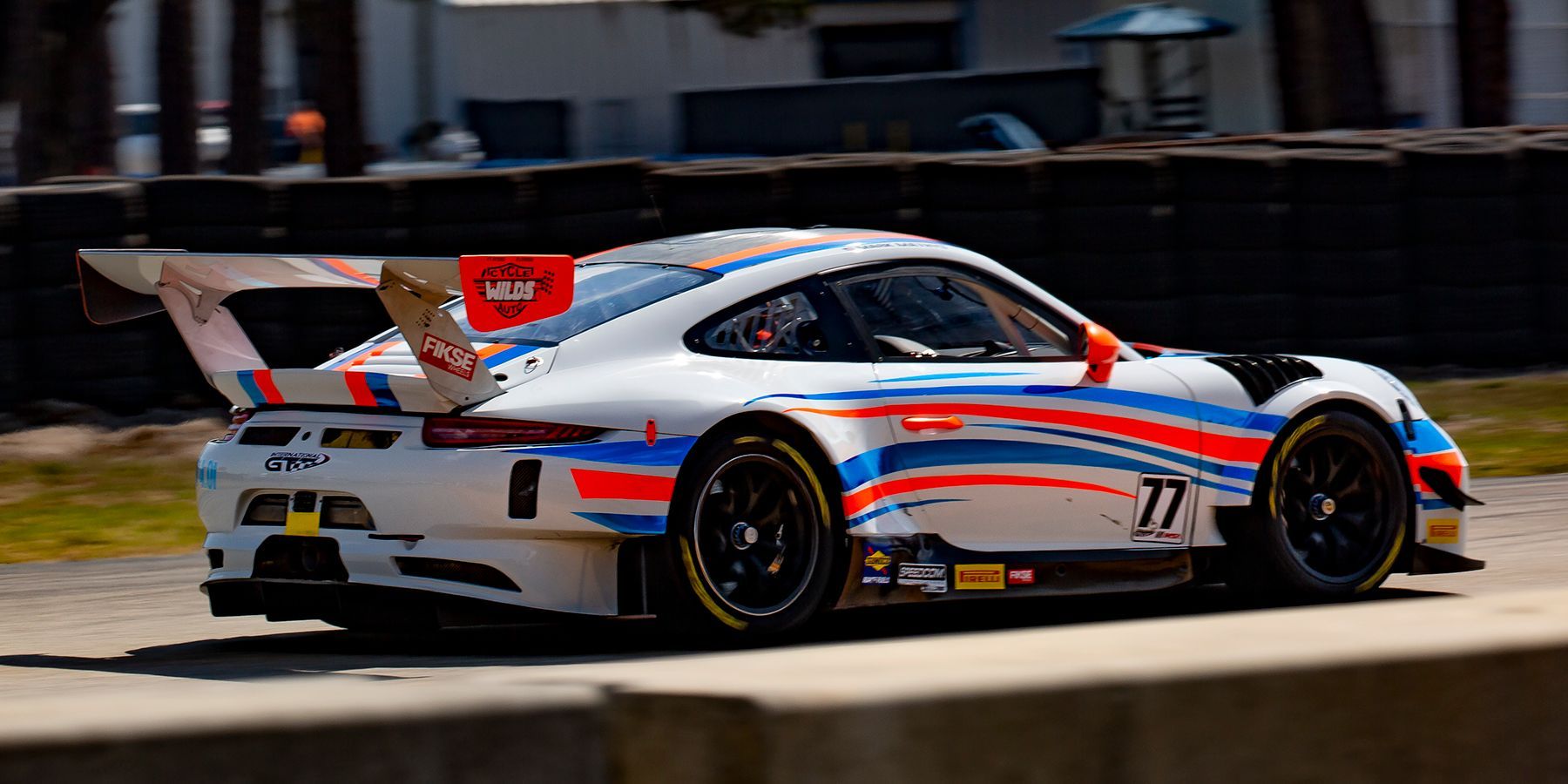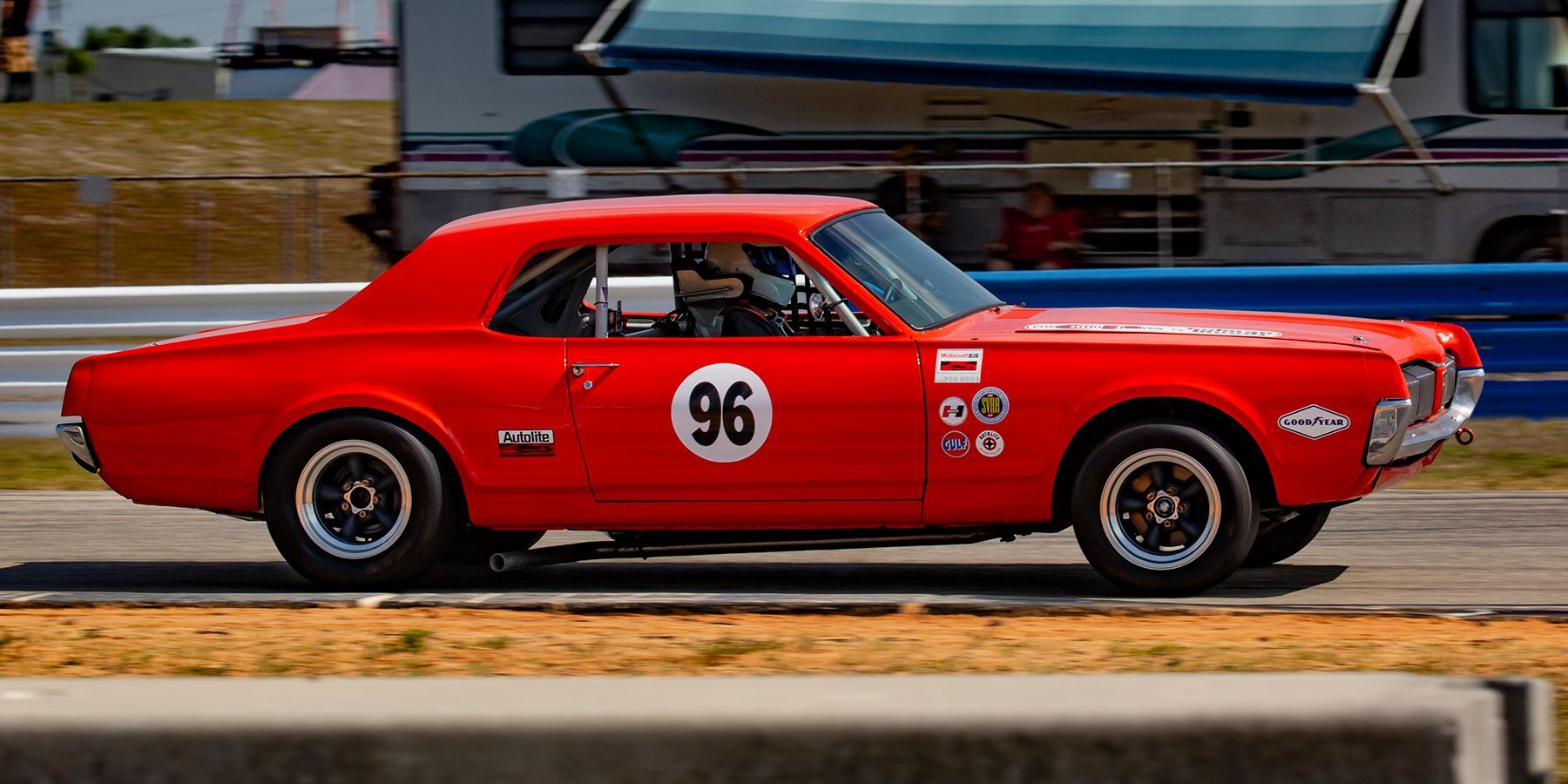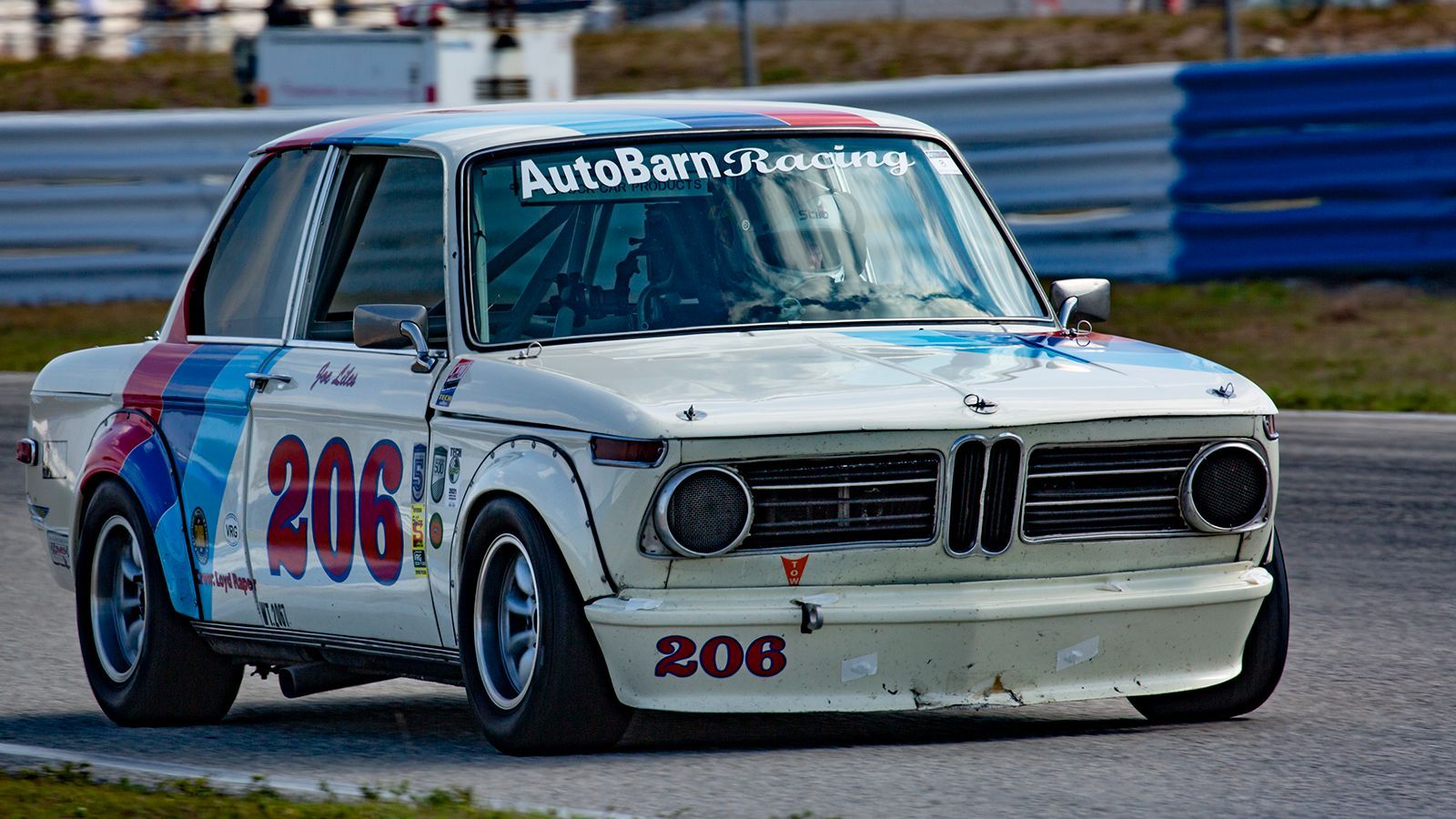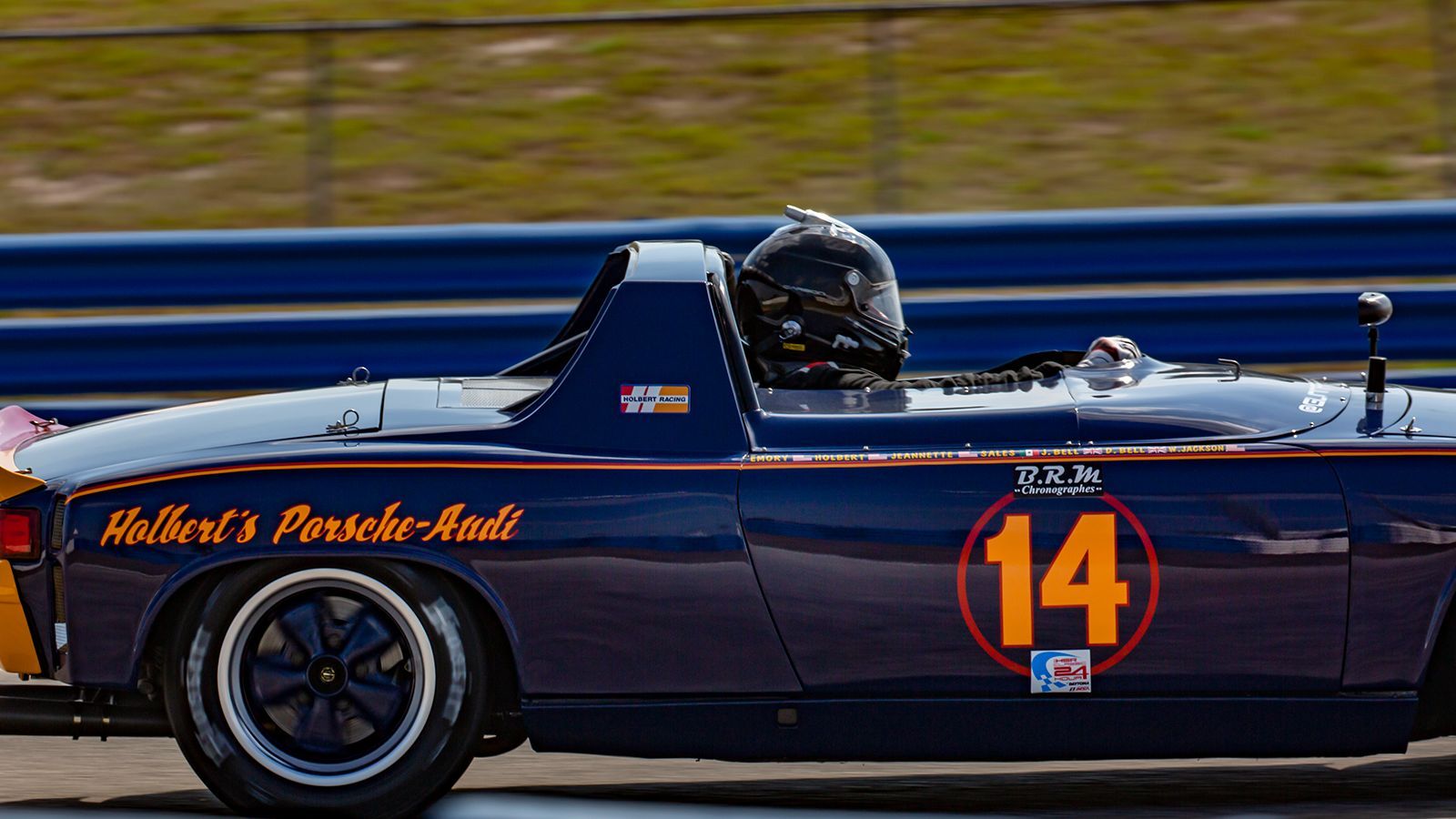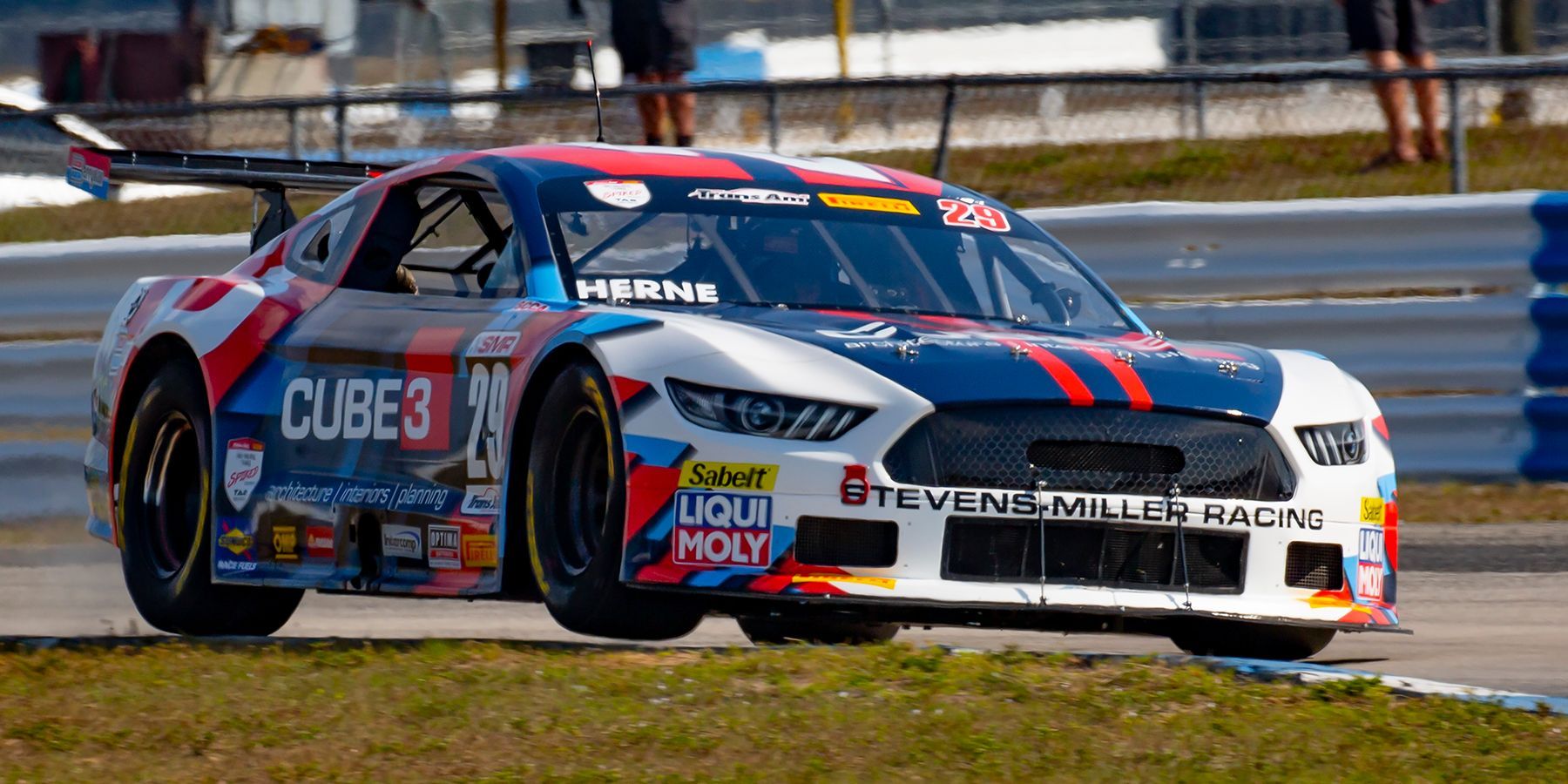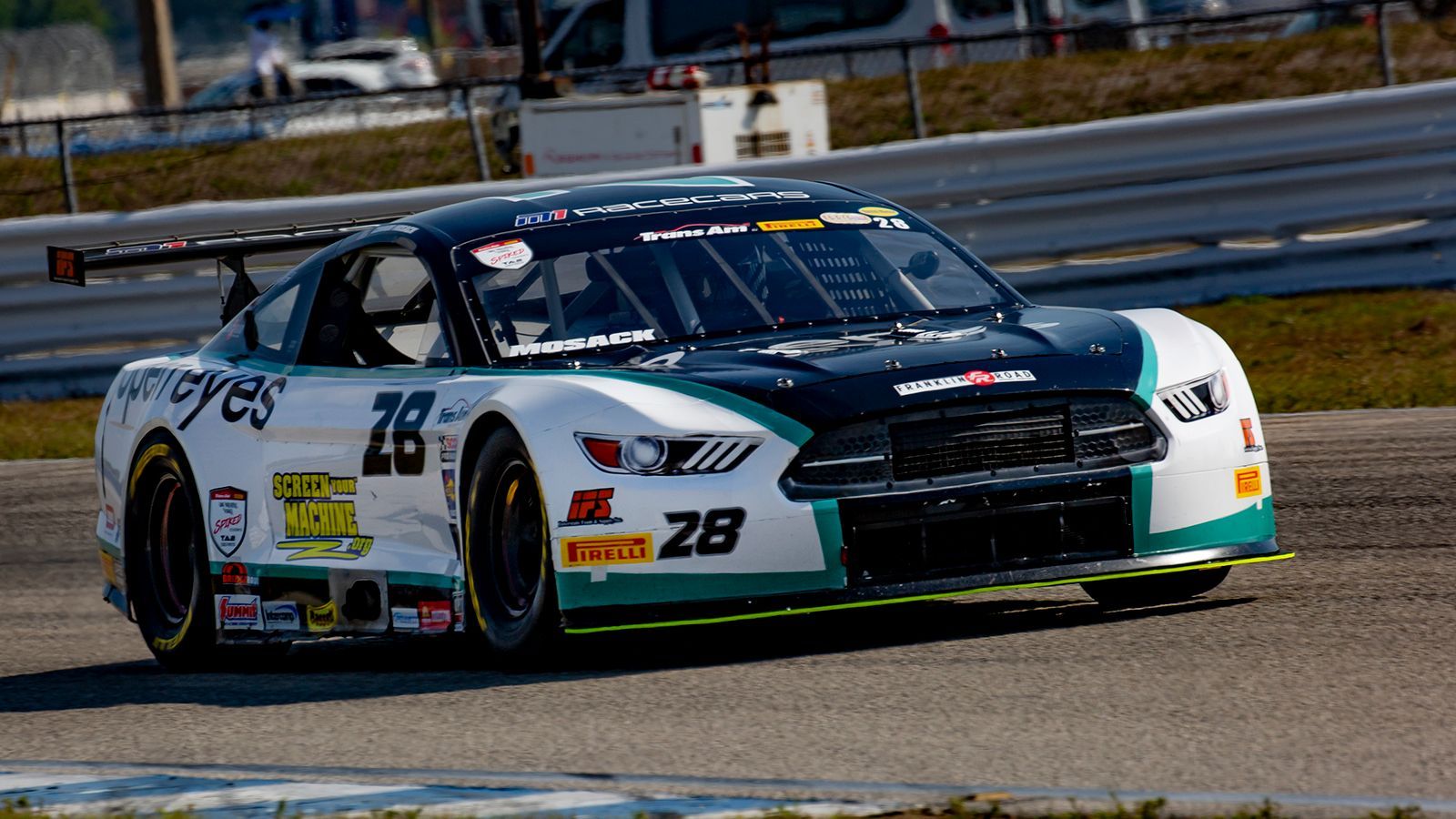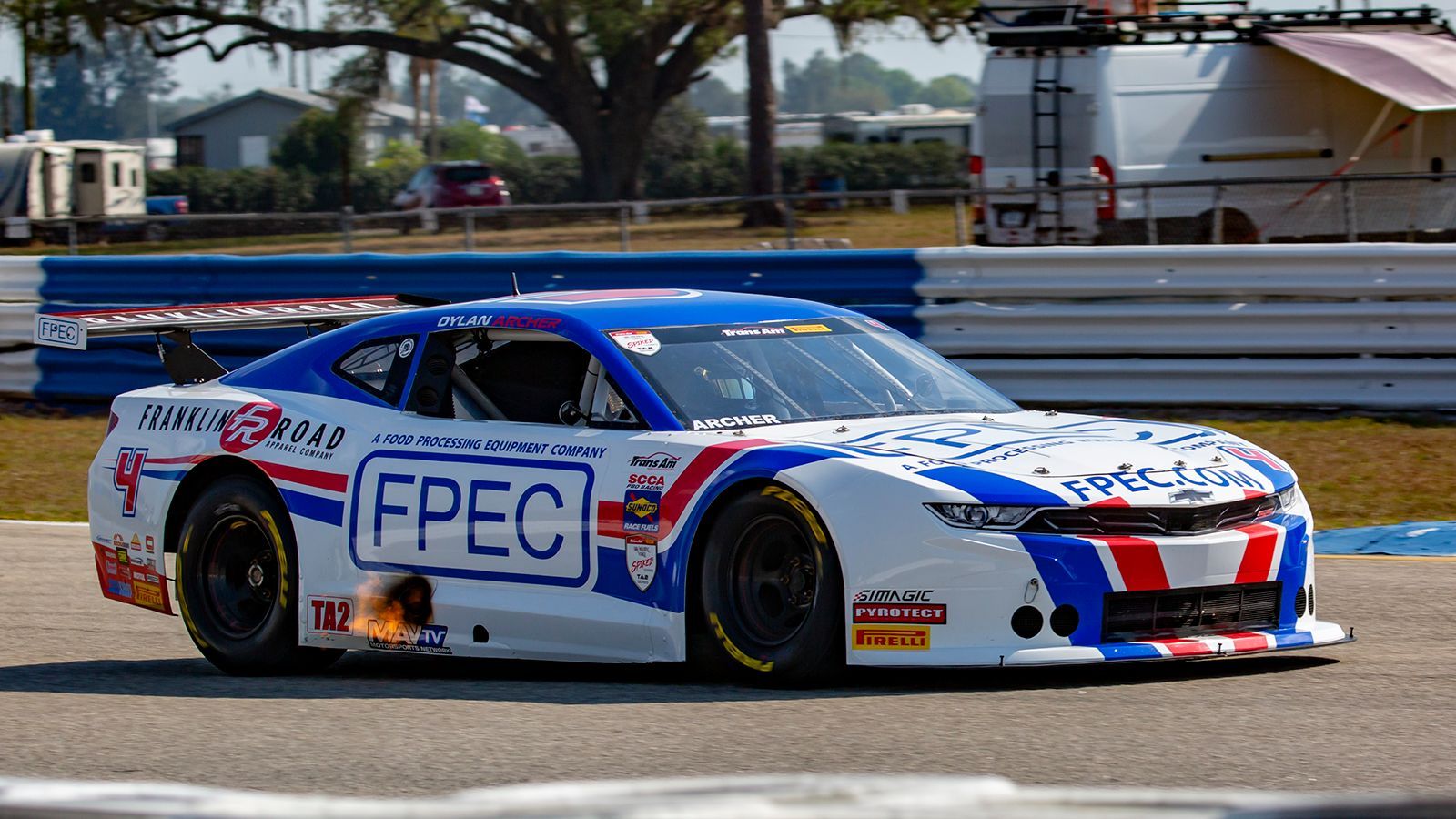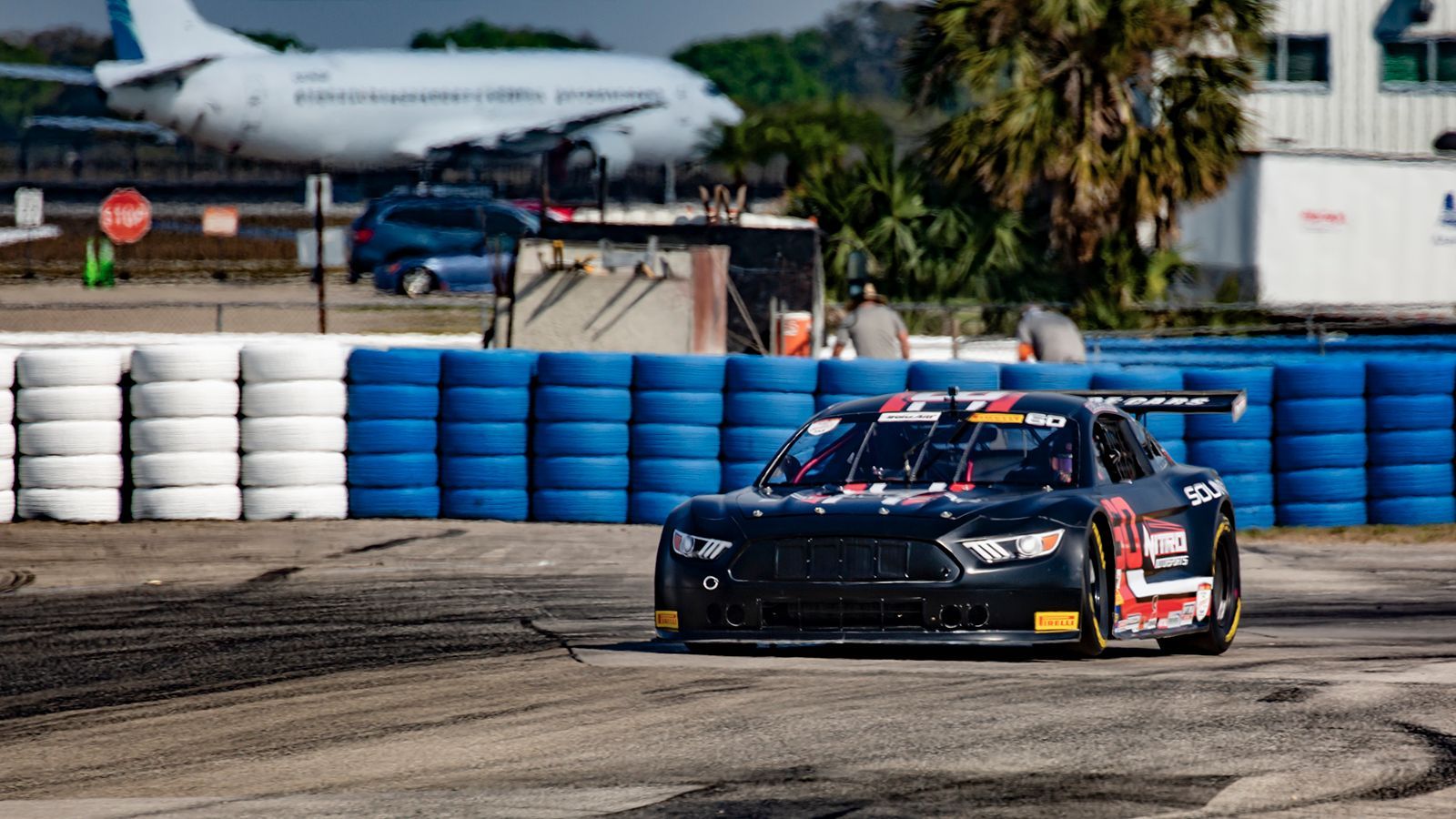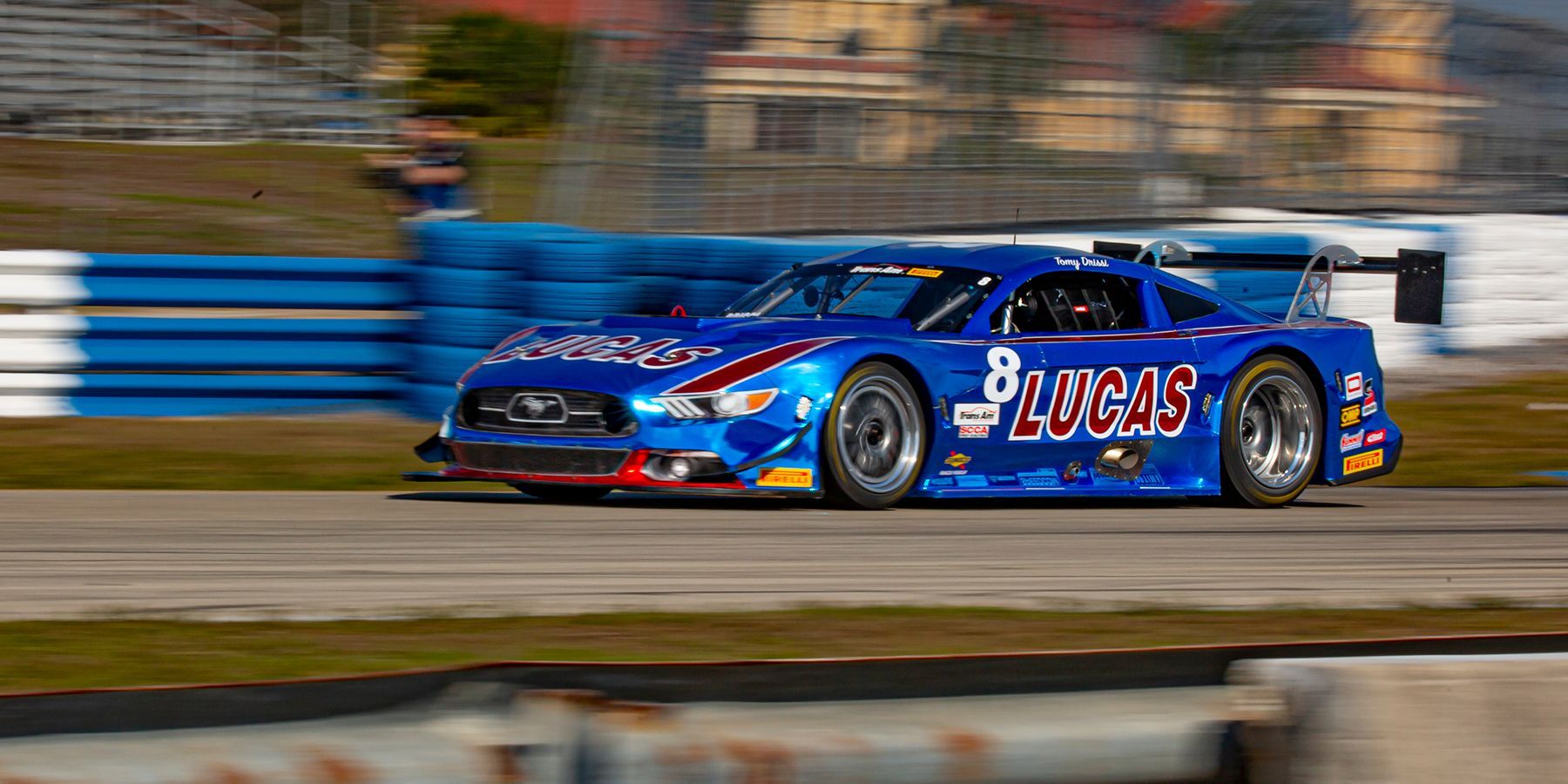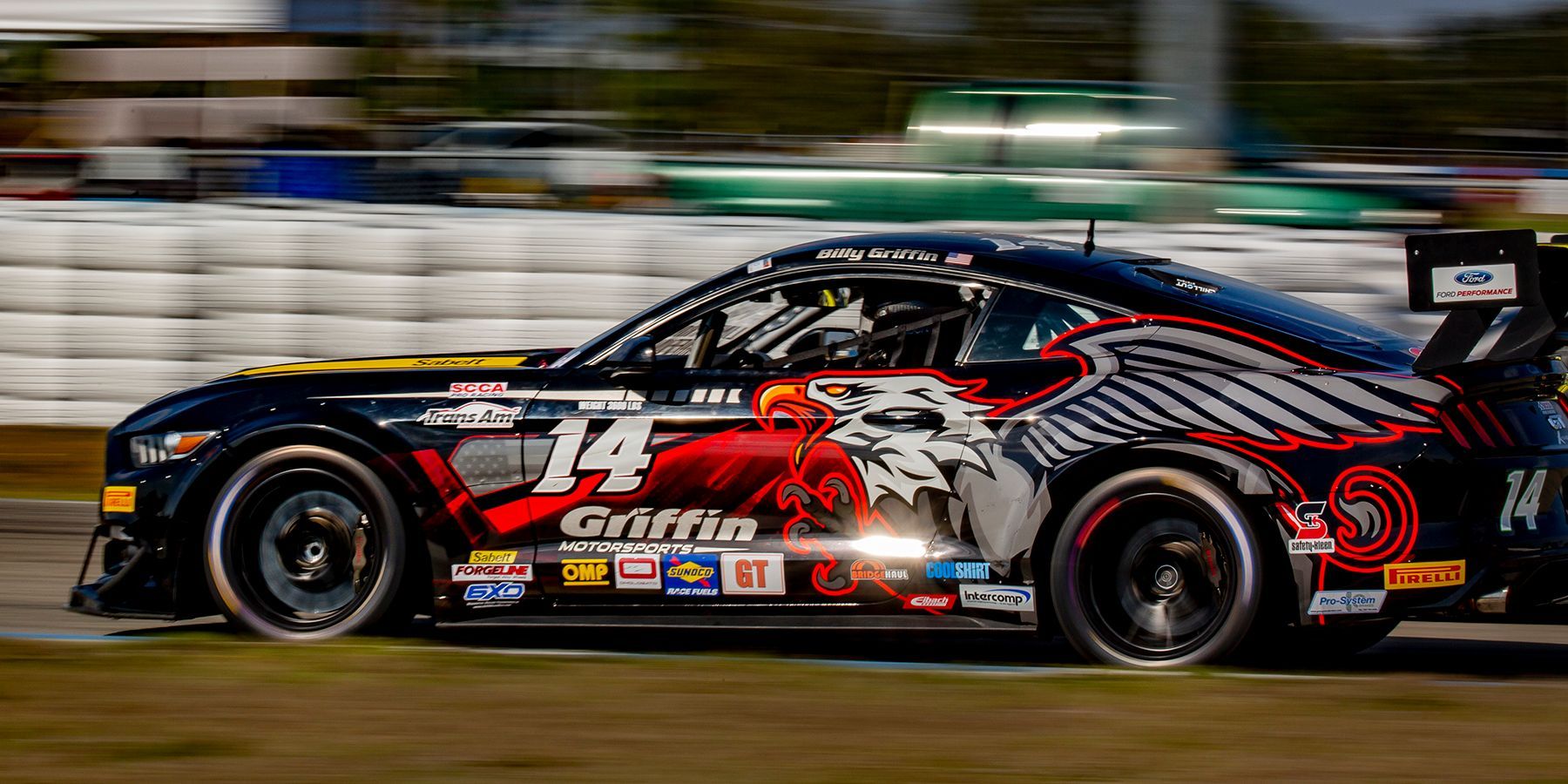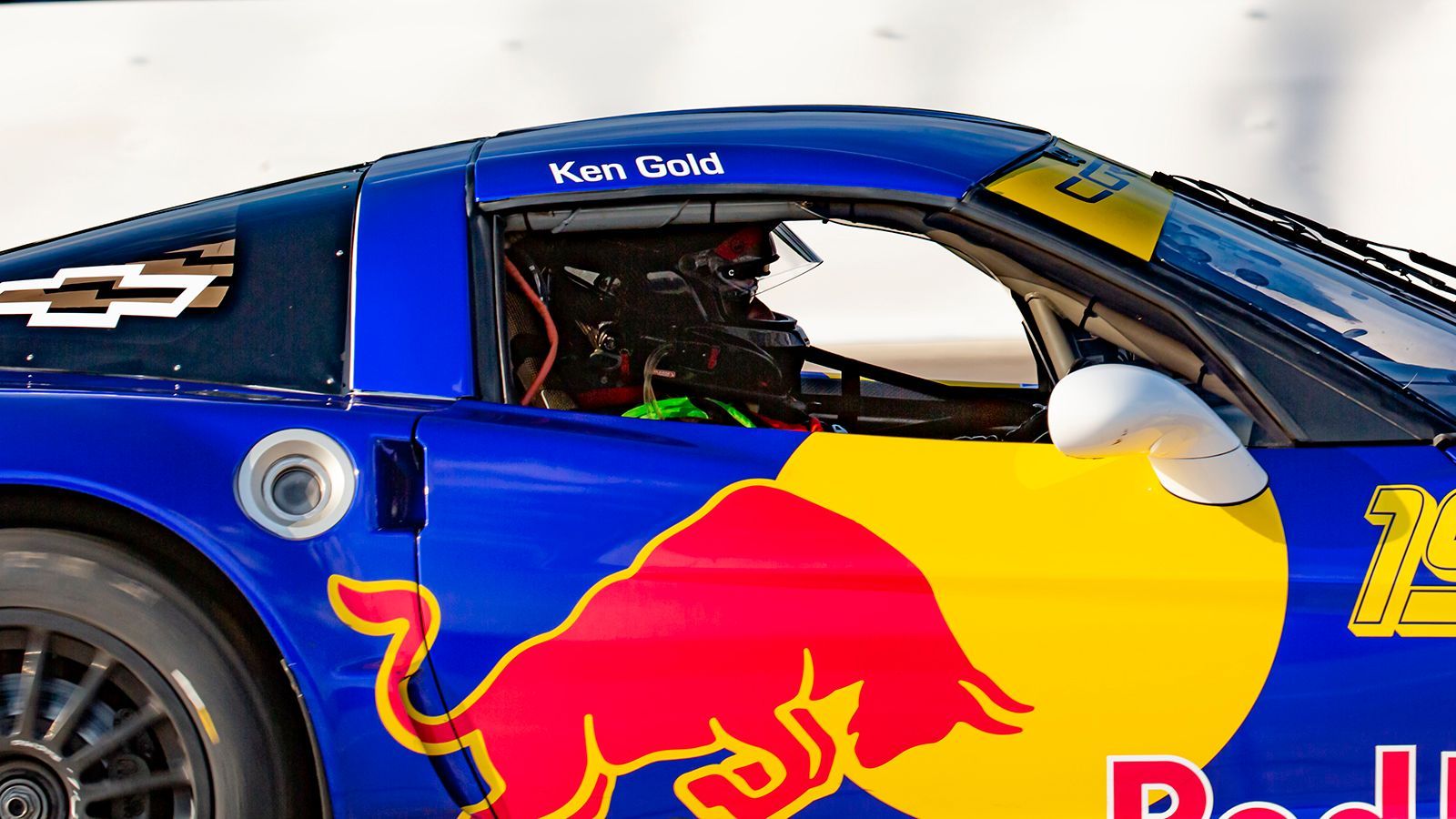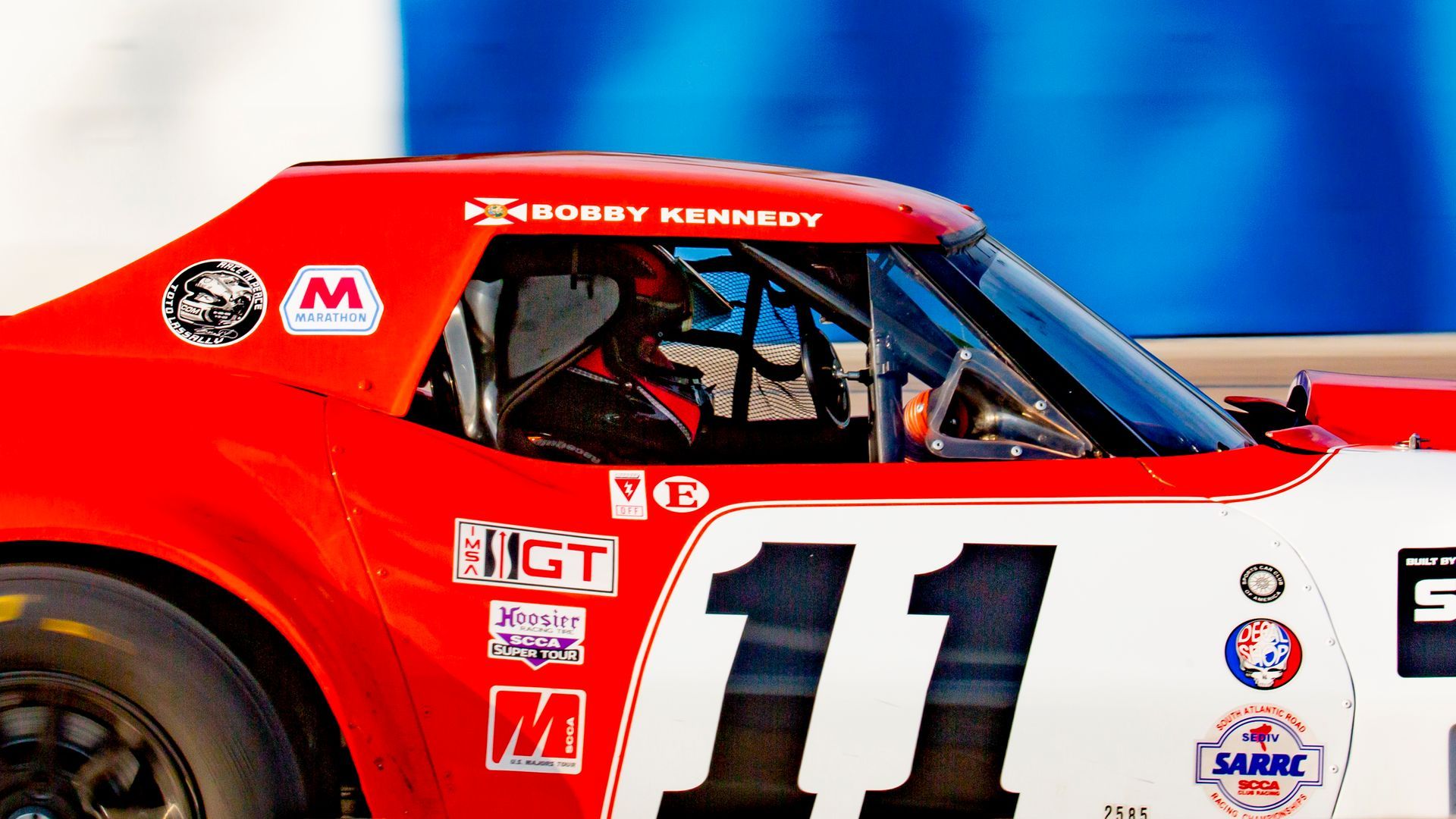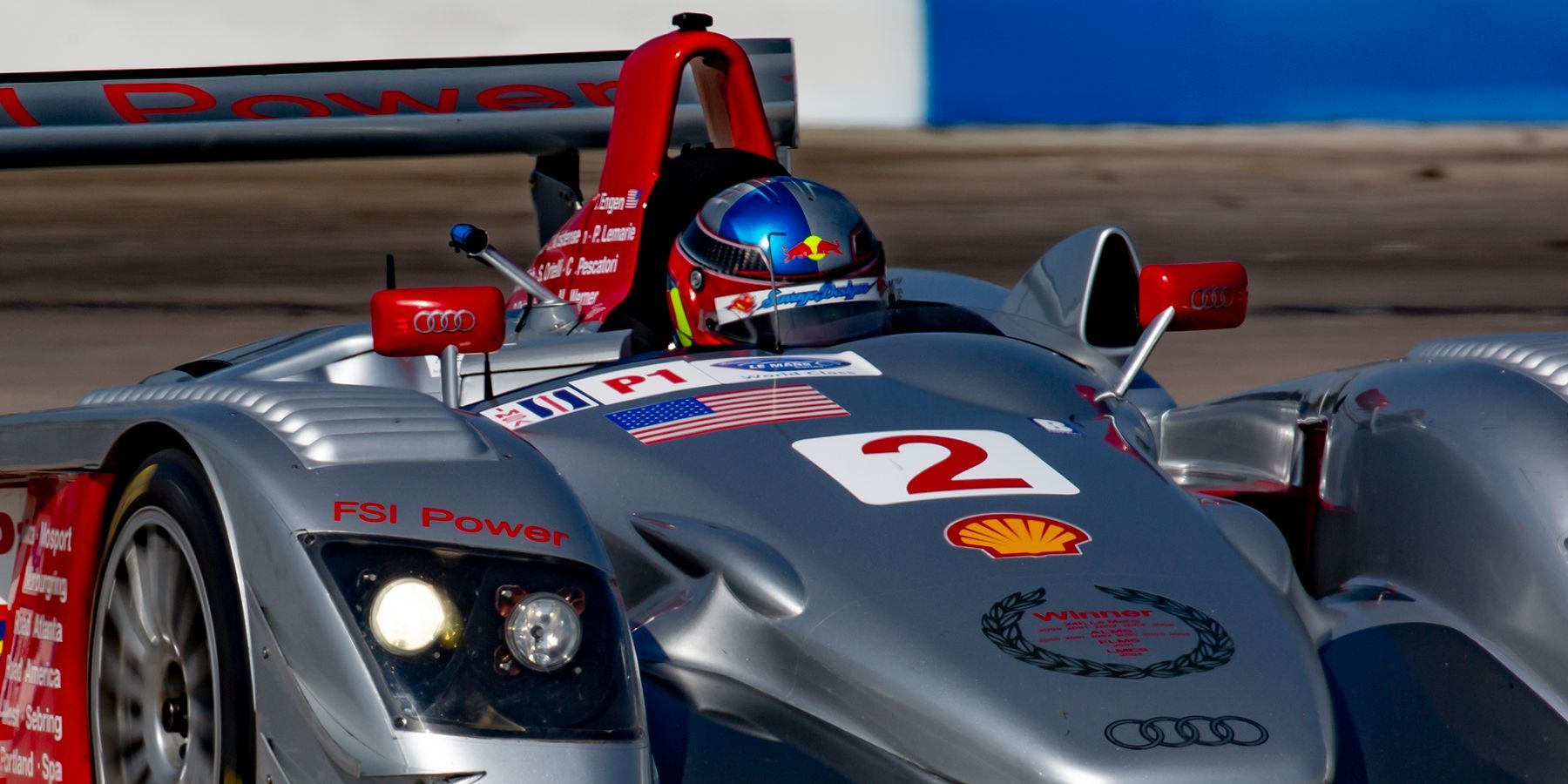
TransAm and SVRA Speed Tour at Sebring International Raceway - Part 1.
Report and Images by Mark Roden
My second drive to Florida in as many months landed me in Sebring. The prior weekend’s Daytona 500 was a one-day experience; at Sebring I witnessed a diverse batch of racing machines and drivers working through 3 days of practice, qualifying and racing. This report will outline a bit about each group and the first day’s activities. Two more reports will follow.
Sebring is a track created on the site of the Hendricks Army Airfield in central Florida. Since 1950 it has hosted a variety of racing events, including formula one and the 12 Hours of Sebring. This time around it was the Trans Am Speed Tour, along with 13 vintage groups of the SVRA (Sportscar Vintage Racing Association).
The track is very photographer-friendly in that the fences and Armco barriers are low, the premium vantage points in many of the turns are unobstructed and elevated, and they allowed me to bring in my custom stepladder. In addition, at least for this event, the grounds were sparsely populated so that I could easily drive my car to various points around the track, a rare capability, to say the least.
I wouldn’t expect it to be like this during the 12 Hours of Sebring, or during most other races for that matter.
The first morning I started close to the leading end of the main pit box structure which runs along the front straight. From here I could see the cars coming off the last turn, under the drive-over bridge, through Turn 17a, and on toward the flag stand.
This event typically does not draw much of a crowd, in fact as I mentioned I was able to drive to several locations on the track and have my car close to me while shooting. I parked right up against the fence at times and was not crowded by others in those areas.
Before heading to Florida, I fashioned a custom stepladder using kayak loops, a backpack strap and some quick links from a hardware store. I used it when I first started snapping but found that it really wasn’t necessary as the fencing is about a meter high and in most areas and you can see over the Armco standing on flat ground.
I did use it quite a lot around Turn 17a but everywhere else was clear enough without it. I would find it much more useful at Daytona, or any other track where the fence is higher.
The TransAm and TA2 racing classes were the top draws of the meet. Within the ranks of the SVRA there are several vintage racing groups, from Mini’s and BMW 2002’s up to WEC spec cars, NASCAR stock cars, and even some formula and older TA cars. To find out more you can visit their site at svra.com, but I will lay out the group descriptions here:
Group 1: Recognized small displacement production sports cars and sedans.
Examples of this group include Sprite, Midget, Mini Cooper, Triumph Spitfire, Alfa Romeo Giulietta, and other similar types.
Group 1 is a delight to watch. When photographing them I noticed that many of the cars with high centers of gravity tend to lean into the corners. This makes for an exciting shot and portrays the speed of the car rather than looking static. Even high-shutter speed shots with frozen wheels look good with a nice corner lean. There was a total of 5 cars listed on the entry list for this group.
Group 2: Pre-1973 Formula cars such as Lotus, Brabham, Titan, etc. The single entry for group 2 was listed as a Titan “X”, however after trying to look it up I could not find any information about it. As luck would have it, I ran into the owner of the car on race day and asked him for more information on the X model.
He told me that it was actually a Titan “9” and was known as a “Post-Ford Formula Club Car”, and that he had just sold it that weekend to another racer because he was getting out. I got some shots of him running on Saturday along with Groups 1,3,4 and 5b.
Group 3: Recognized series-produced sports cars and sedans in production prior to 1972. Examples of these are MGB, Triumph TR3, Austin Healey and the like. This was another fun group to watch. There were four entries; a Triumph, a Lotus, a Mazda and a Corvair.
Group 4: Limited produced sports cars, racing “specials” and GT cars built or in production prior to 1960. Examples listed include Scarab, Devin, Maserati, Ferrari, Lotus, Jaguar XK120/140 and some others.
It is worth mentioning that at any given meet, not all the examples of this or any other group will be present; it is dependent upon who shows up. In this case, there were two entries for Group 4, both classic Corvettes, only one of which I have any useable shots.
Group 5: Small bore World Sports Car Championship and prototypes as raced between 1960 and 1972. All 3 classes of Sports 2000 cars, SRF’s as well as WSR cars. Many Lotuses, Porsches and Lolas. There were several entries, most of which were Lolas and a Lotus 23B driven by Travis Engen, who also had an entry in Group 11 (a most beautiful Audi R8 LMP, more on that car later). The Lotus was the lone car in 5”b”, the rest were in 5”a”.
Group 6: Selected big-bore production sports cars and sedans through 1972. This is where you’ll find Corvette, Shelby GT-350, Cobra, Mustang, Camaro, Jaguar XKE, Barracuda, Cougar, and some others. This was a great group to see as it represents a large portion of American muscle along with some powerful European models. There were many entries in Group 6, including seven Corvettes, a couple of Challengers, some Mustangs, Camaros, and a few others.
Group 7: World Championship of Makes sports cars on slicks. Under 2 Liter sports cars as raced after 1972. Can Am cars as raced after 1967. Center-seat Can Am cars, SCCA ASR & BSR. Again, according to the SVRA website, examples include McLaren, Porsche 908, 917, 956, 962; Lola, Chevron, Ferrari 312, 512, Alfa Romeo T33, Lancia, Matra.
The lone entry was a 1978 Lola 298, and unfortunately, the only photograph that I was able to capture of it turned out too blurry.
Group 8: Recognized series-produced sports cars and sedans in production prior to 1979, and later cars by invitation. Some examples listed are Lotus Super 7, Datsun 240Z, BMW 2002, Porsche 911, 914, Datsun 510, Escort, Alfa Romeo GTV.
There were 11 total entries for Group 8: 6 Porsches, 3 BMW’s and 2 Alfas.
Group 9: Wings and slicks formula cars complying with SVRA post-1973 formula car regulations.
Examples: Formula 1 and Indy Lights, Formula 5000, Formula 2, Formula Atlantic & Formula B (1600cc); Formula Super Vee (1600cc, air & water cooled); Formula Continental and Formula 3 (1100cc)
Group 9 consisted of 4 entries; two Marches, an “AF 1”, and an Alfa Romeo (Lee Brahin’s #24 Ralt was categorized as group 11 on the entry list but 9F3 on the official qualifying sheets.)
Group 10: This group includes select GT sports cars and sedans raced between 1973 and 1999, NASCAR Cup and Busch Series stock cars, Trans-Am and production-based contemporary as raced from 1999 to 5 years from today’s date.
Examples: Chevrolet Dekon Monza, Porsche 911 RSR, Ferrari 348, Audi S4, Chevrolet Corvette, DeTomaso Pantera and Dodge Viper.
There was a lot going on in Group 10, which included quite a few Porsches, Chevrolets, an Audi R8, Mercedes AMG and a Ferrari.
Group 11: GTP/Group C, ALMS, PSCR, WSC, Grand Am prototype cars and SCCA P1 &P2 as raced from 1981 to 5 years from today’s date.
Examples: Aston Martin AMR1, Intrepid, Audi R8, Ford Mustang Trans Am, Oldsmobile Aurora, Pontiac Grand Am, Porsche GT2 and Cup.
A fast group including the Travis Engen driven GTP Audi R8 LMP which has a stellar racing pedigree. On the car is a decal stating that the car won the 24 hours of Le Mans in the years 2000, 2001, 2002, 2004 and 2005. On the side are several driver names including Laurent Aiello, Seiji Ara, Michele Alboreto, Frank Biela, Rinaldo Capello, Jamie Davies, Johnny Herbert, Pierre Kaffer, and J.J. Lehto.
Biela won with it during the years 2000-2002 along with Tom Kristensen and Emanuele Pirro. Ara, Capello and Kristensen won in 2004, and the 2005 winning chassis was piloted by Lehto, Kristensen and Marco Werner. Other notable drivers of the car were Stefan Johannson (3rd, 2003), Didier Theys and Mika Salo, neither of whom finished the race. In addition to the Audi there were two Orecas, a Riley, a Coyote Corvette, and a Mazda.
Group 12: Select GT sports cars and sedans raced between 1973 and 5 years prior to today’s date. These are Production-based cars such as Motorola Cup or any other stock / prepared racing series. Early IMSA GTO and GTU small bore cars will be accepted on an individual basis.
Examples: Chevrolet Corvette, Dodge Viper, Ford Mustang, Panoz, Datsun Z cars, Nissan ZX, and various BMW, Porsche and Ferrari models.
Group 12 was one of the larger groups with 19 total entries split into 12a/12b. Entries included several Mustangs, Porsche 914’s, an Alfa GTV6, some BMW’s and a few others. Most of the Porsches and BMWs were in 12b, which ran with Group 8, the rest ran with Group 6.
Typically, several groups raced at one time. For instance, Groups 1, 3, 4 and part of Group 5 (designated as 5b) would run together, and the other half of 5(a) ran with 7, 9 and 11. Groups 6 and 8 would each run with ½ of group 12. Groups 10, TA and TA2 were standalone. There was also a group called “IGT” (International GT) which ran alone but consisted of several sub-classes within it. This group consisted largely of Porsche 911 cars.
Day 1 Friday 24 February 2023
When I arrived, groups 5(a), 7, 9, and 11 were already running. I found a spot along the straight between the final turn (17a) and the pit structure and was able to get close pan shots and some angled grille shots. The GTP cars were turning in laps in the 2:03 to 2:07 range, followed closely by Nathan Byrd in the AF01 Australian Formula car and Adam Lindemann in the Coyote Corvette (2:08 fast laps for both cars).
Next up was practice for TA2, which is a cost-managed class limited to 530 horsepower and designed to last all season. The cars--all Mustangs, Camaros or Challengers--can hit some good times, and even though they are limited they can still put on quite a show. Austin Green and Rafa Matos shined during practice, turning 2:06 laps in almost identical twin bright yellow Mustangs. Nathan Herne, Connor Mosack and Brent Crews rounded out the top 5 in 2:07 fashion, also in Ford racing gear.
The headliner TransAm group followed with an optional 40-minute testing session. This was my first time to see these cars on the track in 30 years. Of course, a lot has changed over the years, but some things--like the roar of those TA engines--has not, and at 850 raw horsepower it’s easy to see—or hear—why Trans Am TA class is one of the top racing groups around. The cars have no restrictions and are all about putting power to the ground. The bodies can be carbon fiber, fiberglass and even Kevlar, and Mustangs generally dominate the class.
The Gym Weed sponsored Ford Mustangs took the top two spots in testing. Matt Brabham (son of Geoff Brabham) took top honors with a blistering 1:59 lap, followed by Chris Dyson in the #16 with a barely over 2:00 offering. The next 8 places in the session were all under 2:06, led by Adam Andretti (Mario’s nephew) at just under 2:02.
At mid-day, a lunch break was designed into the schedule, so I took the chance to check out some other areas around the track while nothing was moving. I crossed the drive-over bridge near the entrance and headed into the midway and infield areas. The first turn I came to was the famous hairpin, or Turn 7. From This point I could see the straight coming into the turn, the main pit structure in the distance, the hotel, and the view past the apex was thin, but open.
After about 30 minutes of exploration, I settled on a spot against the fence outside turn 5 between the apex of the turn and the track’s interior drive-over bridge, just in time to see the beginning of the IGT qualifying session #2. It was easy to find a parking spot as few people were in that area, and I had a clear view with a bit of straight track going back to turn 4.
It was a great vantage point that I used several times over the course of the weekend (refer to Position E on the PistonClick Sebring track map under circuit guides.)

After IGT was finished it was time for Groups 6 and 12a qualifying. This session was full of American muscle and some models I hadn’t seen in a long time, specifically one bright orange ’67 Mercury Cougar. A neighbor of mine had one of those cars; I’ve never forgotten how great it looked and it remains one of my favorite late-60’s hot-rodders.
I moved to the other side of T5 to catch more qualifying (still on the outside but across the apex from where I had been), this time it was the group 8/12b pairing. This is where I met Joe, who noticed me standing next to his tent cover and offered me a water. He also offered me the use of a very comfortable chair and a decent amount of trackside conversation. He has been attending all events at Sebring since 1985.
Ernie Wilding crushed everyone with a 2:25 in his ’95 BMW M3. The best of the rest was the #14 Wayne Jackson 1970 Porsche 914, turning a 2:35 lap for second slot.
The last session that I watched from this position on the track was TA2 qualifying.
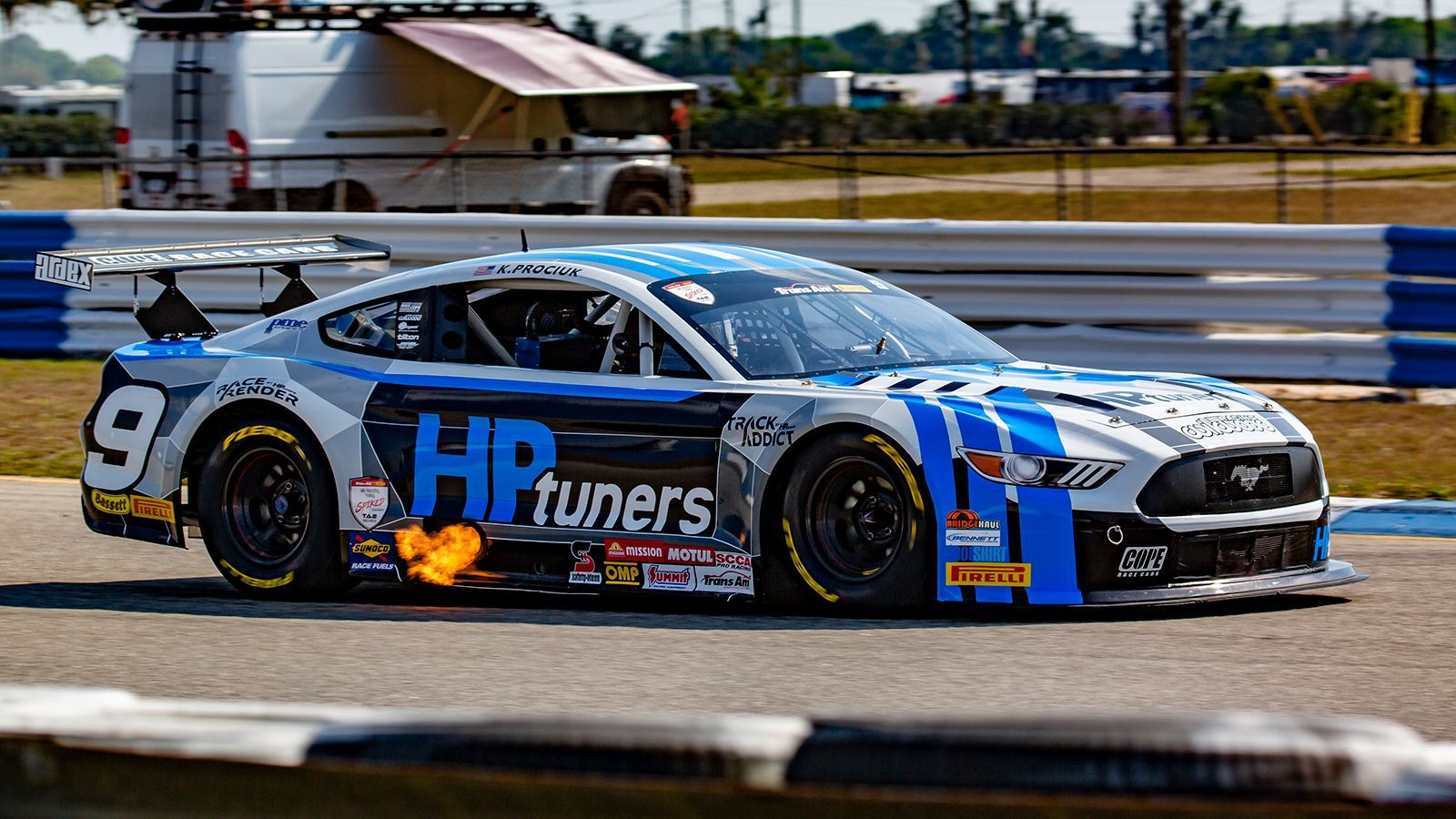
Connor Mosack was 4th on the qualifying grid but turned out a hot lap of 2:05 to beat the field. The two 3-D Services Group Ford Mustangs of Matos and Green were right behind him with twin 2:06’s.
Between TA2 qualifying and the second TA optional testing session, I drove over the bridge to get to the inside of Turn 5 and walked to the top of the viewing mound. The major difference here was the lighting; there was direct sunlight on the near side of the cars whereas before I was shooting at the “dark side”.
This improved image quality and allowed me to see down to T3 as well as the tarmac of the adjacent airport where a good-sized jet was parked, providing a great backdrop for the cars. I zoomed out further than I normally would so that I could include it in a few shots. The TA cars were really booking in this area, allowing me to practice some high-speed pans at slow shutter speeds.
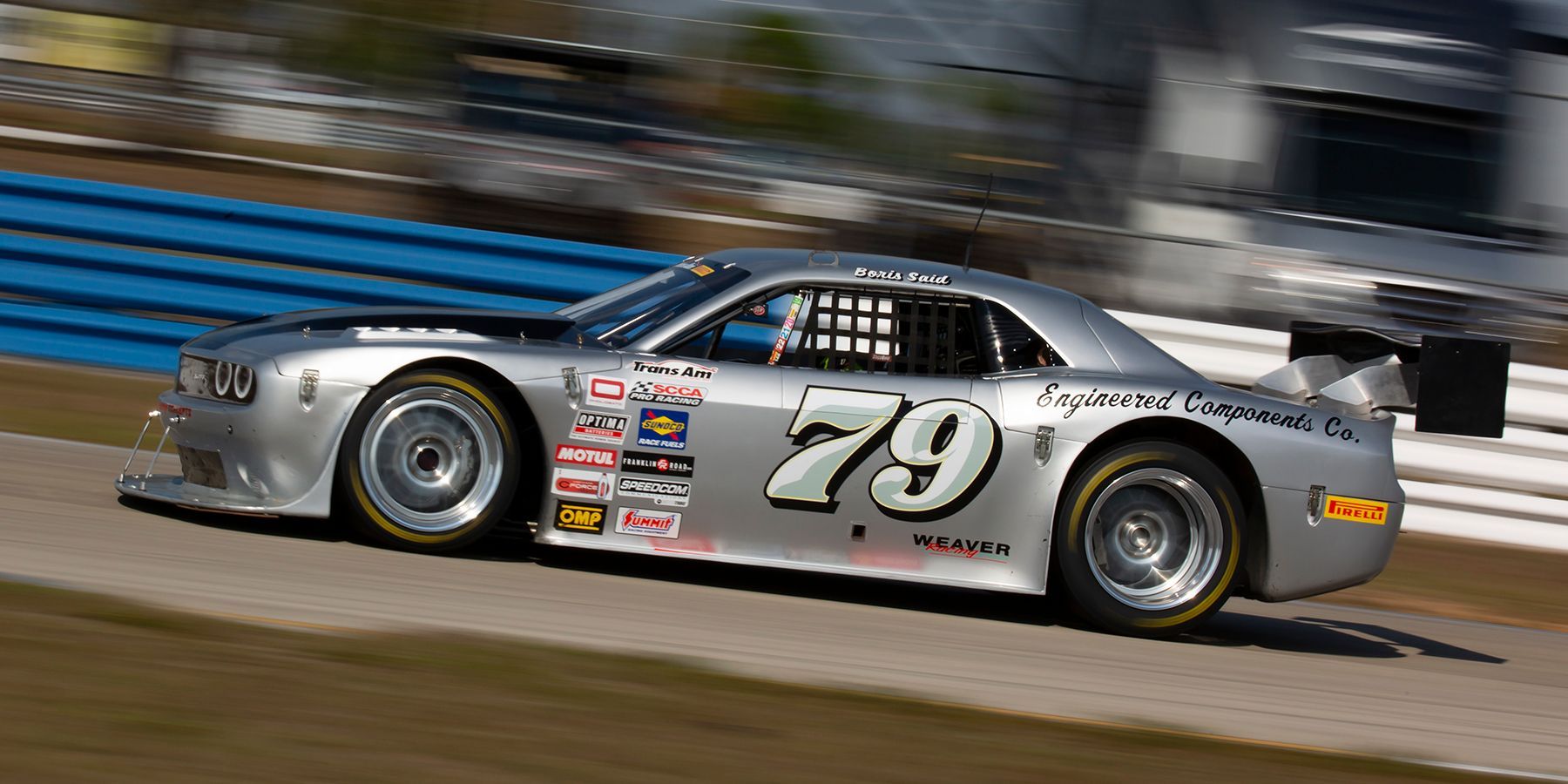
The top two spots of the session were the same as test 1, with Brabham ahead of Dyson, both a little less than ½ second slower than their morning test runs. Paul Menard improved from his 8th position in the morning test run to 4thposition and gained almost 2 seconds from his earlier lap time. The #8 Car of Tomy Drissi was about 3 seconds off Brabham’s pace.
Once Trans Am was finished, I felt like I’d had enough for the day. As I was driving out I decided to spent a few minutes back at my first shooting spot before leaving the track. There is always another photo to take, and I figured a few more couldn’t hurt.
The Group 10 GT class was out again, so I framed some of the photos to include the walk-over bridge with the “Sebring” logo. To accent just how open the view was, I left the Armco barriers visible in the foreground of some shots. Including things like this just serves to make everything more interesting.
As much as I love a good, cropped-in race car shot, there are only so many “car-on-the-track” shots you can take before it becomes repetitive. This track has an excellent amount of variety to choose from, and sometimes, obstacles can be good things. It was a nice first day, and there would be more to come tomorrow.
To be continued…
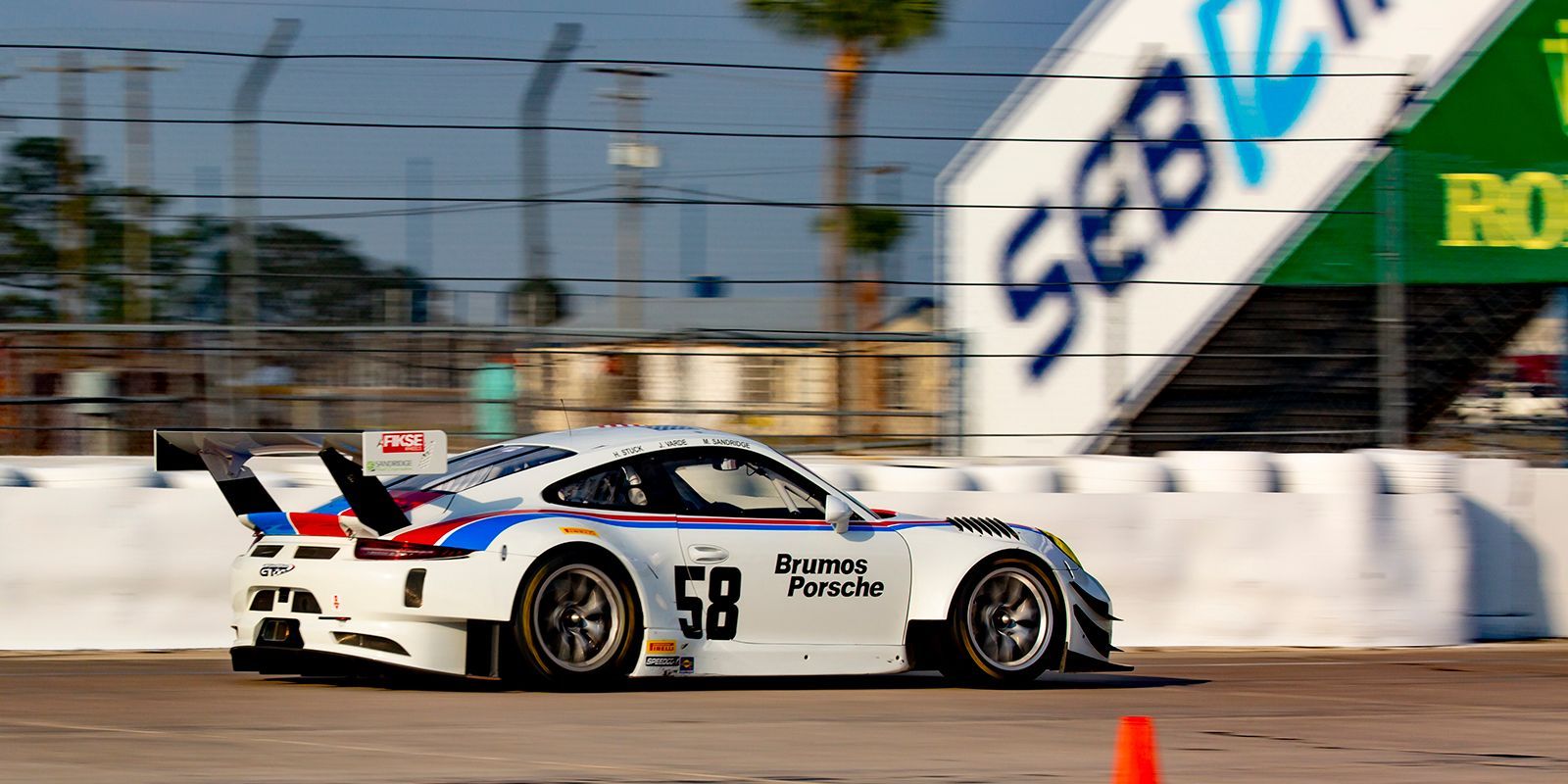
You can share this report with your friends on Social Media using these links.

